Quick filters:
Modified limb Stock Photos and Images
 Gloved hands holding eggs Stock Photohttps://www.alamy.com/image-license-details/?v=1https://www.alamy.com/stock-photo-gloved-hands-holding-eggs-54528780.html
Gloved hands holding eggs Stock Photohttps://www.alamy.com/image-license-details/?v=1https://www.alamy.com/stock-photo-gloved-hands-holding-eggs-54528780.htmlRFD4M00C–Gloved hands holding eggs
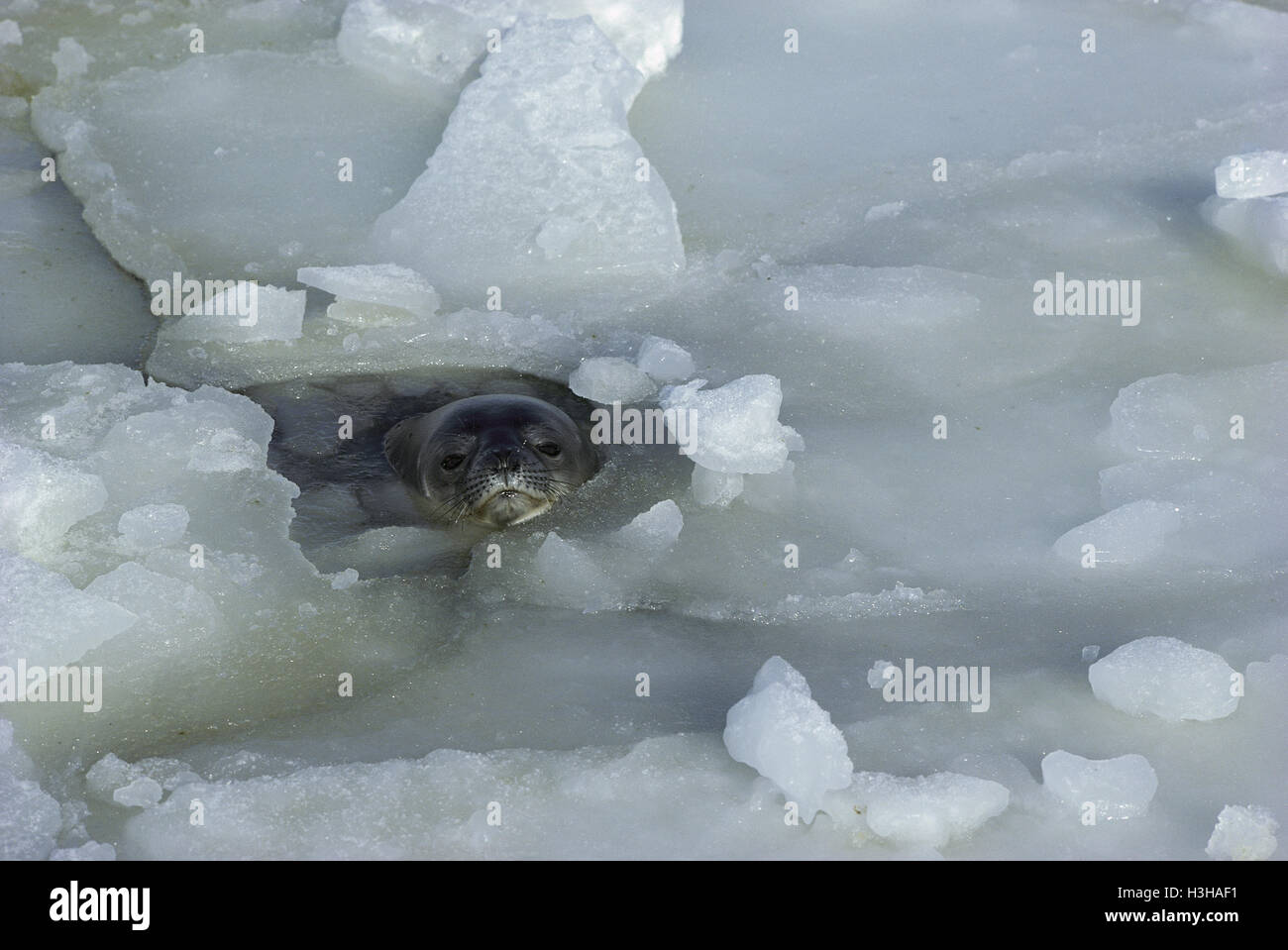 Weddell seal (Leptonychotes weddellii) Stock Photohttps://www.alamy.com/image-license-details/?v=1https://www.alamy.com/stock-photo-weddell-seal-leptonychotes-weddellii-122697989.html
Weddell seal (Leptonychotes weddellii) Stock Photohttps://www.alamy.com/image-license-details/?v=1https://www.alamy.com/stock-photo-weddell-seal-leptonychotes-weddellii-122697989.htmlRMH3HAF1–Weddell seal (Leptonychotes weddellii)
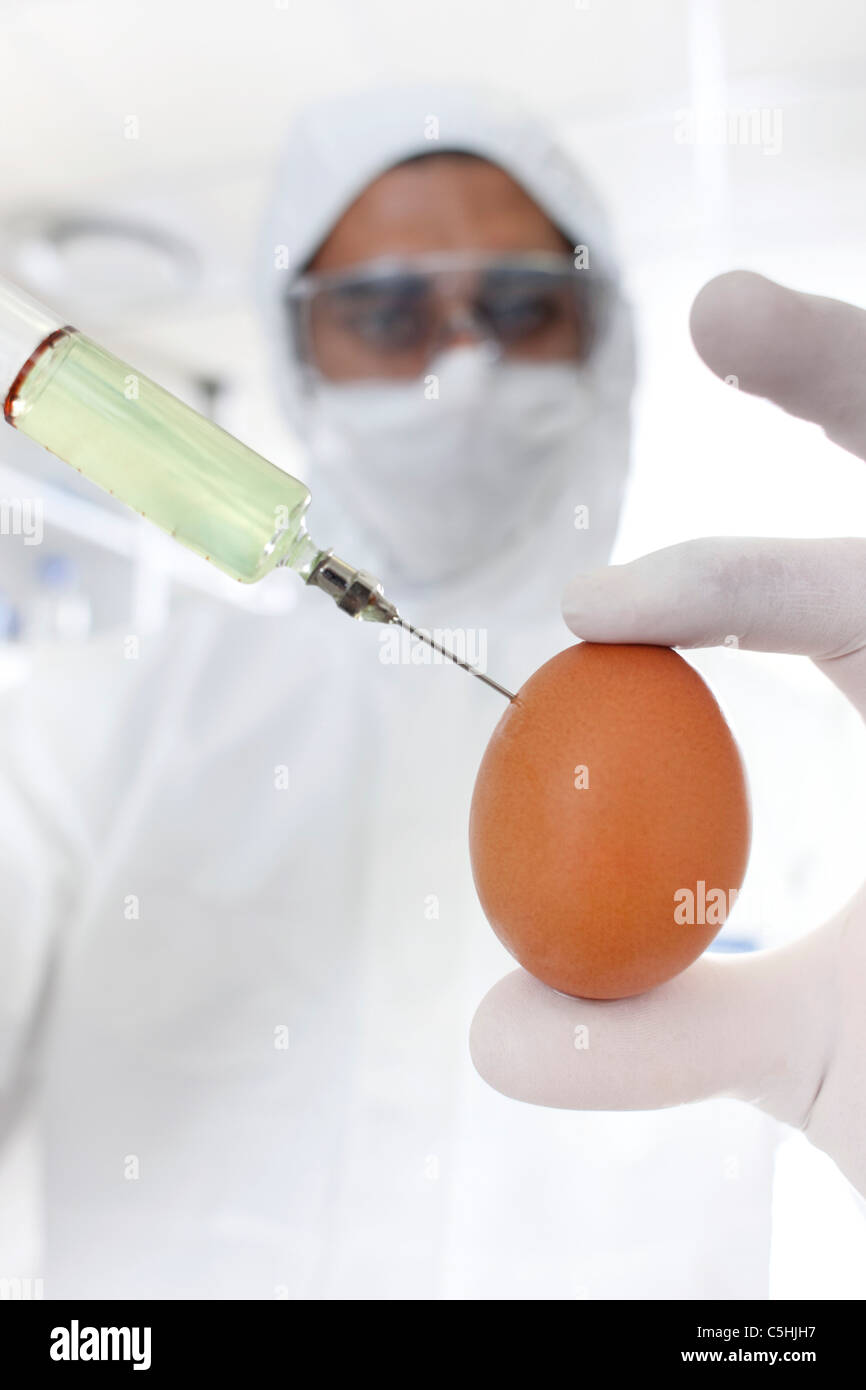 Genetically modified egg Stock Photohttps://www.alamy.com/image-license-details/?v=1https://www.alamy.com/stock-photo-genetically-modified-egg-37881795.html
Genetically modified egg Stock Photohttps://www.alamy.com/image-license-details/?v=1https://www.alamy.com/stock-photo-genetically-modified-egg-37881795.htmlRFC5HJH7–Genetically modified egg
 Rochester, Minnesota, USA. 25th July, 2014. As BRANDON SAMPSON looks on, MARTY FRANA pours modified acrylic resin to saturate and harden a carbon fiber shell during the laminating of a prosthetic socket. Among the services their company, Limb Lab, provides, are the manufacture of prosthetic feet, hands, hooks and elbows, microprocessor hands and knees, hydraulic knees and stance control orthotics. © Brian Cahn/ZUMA Wire/Alamy Live News Stock Photohttps://www.alamy.com/image-license-details/?v=1https://www.alamy.com/stock-photo-rochester-minnesota-usa-25th-july-2014-as-brandon-sampson-looks-on-72154084.html
Rochester, Minnesota, USA. 25th July, 2014. As BRANDON SAMPSON looks on, MARTY FRANA pours modified acrylic resin to saturate and harden a carbon fiber shell during the laminating of a prosthetic socket. Among the services their company, Limb Lab, provides, are the manufacture of prosthetic feet, hands, hooks and elbows, microprocessor hands and knees, hydraulic knees and stance control orthotics. © Brian Cahn/ZUMA Wire/Alamy Live News Stock Photohttps://www.alamy.com/image-license-details/?v=1https://www.alamy.com/stock-photo-rochester-minnesota-usa-25th-july-2014-as-brandon-sampson-looks-on-72154084.htmlRME5AW7G–Rochester, Minnesota, USA. 25th July, 2014. As BRANDON SAMPSON looks on, MARTY FRANA pours modified acrylic resin to saturate and harden a carbon fiber shell during the laminating of a prosthetic socket. Among the services their company, Limb Lab, provides, are the manufacture of prosthetic feet, hands, hooks and elbows, microprocessor hands and knees, hydraulic knees and stance control orthotics. © Brian Cahn/ZUMA Wire/Alamy Live News
 Black and white print of a human hand using black watercolour paints, that has been modified using darker angular lines that pass through the image. Stock Photohttps://www.alamy.com/image-license-details/?v=1https://www.alamy.com/stock-photo-black-and-white-print-of-a-human-hand-using-black-watercolour-paints-141522126.html
Black and white print of a human hand using black watercolour paints, that has been modified using darker angular lines that pass through the image. Stock Photohttps://www.alamy.com/image-license-details/?v=1https://www.alamy.com/stock-photo-black-and-white-print-of-a-human-hand-using-black-watercolour-paints-141522126.htmlRMJ66TWJ–Black and white print of a human hand using black watercolour paints, that has been modified using darker angular lines that pass through the image.
 David Beachler, a prosthetist, works at his desk inside the prosthetics fabrication room at Walter Reed National Military Medical Center in Bethesda, Md., April 13, 2016. Amputees are consulted before prosthetists design their customized lightweight prosthetics, which weigh less than the actual limb lost. Many of the devices are made or modified in-house. (U.S. Air Force photo/Sean Kimmons) Stock Photohttps://www.alamy.com/image-license-details/?v=1https://www.alamy.com/david-beachler-a-prosthetist-works-at-his-desk-inside-the-prosthetics-fabrication-room-at-walter-reed-national-military-medical-center-in-bethesda-md-april-13-2016-amputees-are-consulted-before-prosthetists-design-their-customized-lightweight-prosthetics-which-weigh-less-than-the-actual-limb-lost-many-of-the-devices-are-made-or-modified-in-house-us-air-force-photosean-kimmons-image210454825.html
David Beachler, a prosthetist, works at his desk inside the prosthetics fabrication room at Walter Reed National Military Medical Center in Bethesda, Md., April 13, 2016. Amputees are consulted before prosthetists design their customized lightweight prosthetics, which weigh less than the actual limb lost. Many of the devices are made or modified in-house. (U.S. Air Force photo/Sean Kimmons) Stock Photohttps://www.alamy.com/image-license-details/?v=1https://www.alamy.com/david-beachler-a-prosthetist-works-at-his-desk-inside-the-prosthetics-fabrication-room-at-walter-reed-national-military-medical-center-in-bethesda-md-april-13-2016-amputees-are-consulted-before-prosthetists-design-their-customized-lightweight-prosthetics-which-weigh-less-than-the-actual-limb-lost-many-of-the-devices-are-made-or-modified-in-house-us-air-force-photosean-kimmons-image210454825.htmlRMP6B17N–David Beachler, a prosthetist, works at his desk inside the prosthetics fabrication room at Walter Reed National Military Medical Center in Bethesda, Md., April 13, 2016. Amputees are consulted before prosthetists design their customized lightweight prosthetics, which weigh less than the actual limb lost. Many of the devices are made or modified in-house. (U.S. Air Force photo/Sean Kimmons)
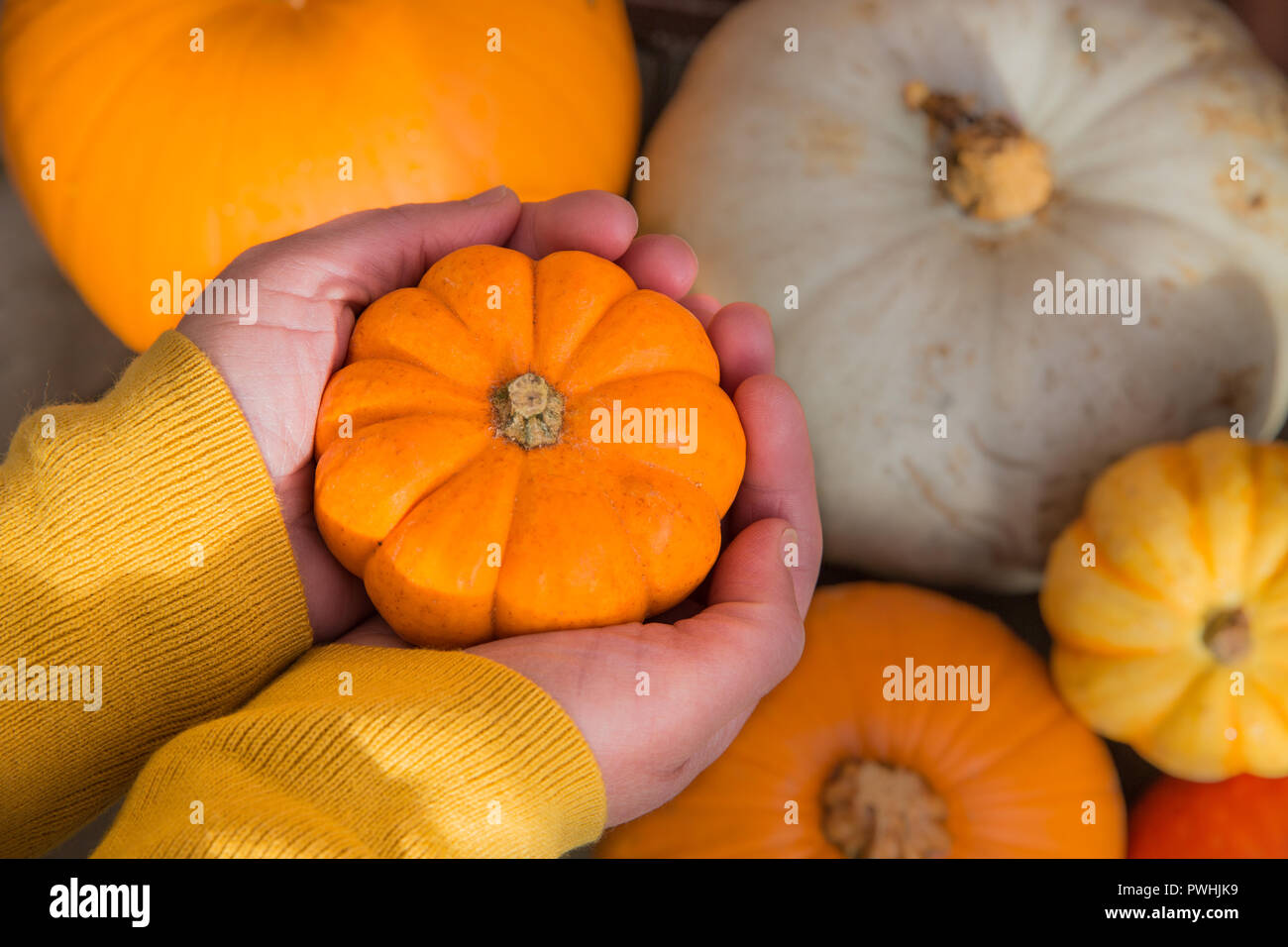 A pair of humna hands holding a tiny pumpkin called a munchkin over a selection of different winter squash and gourds Stock Photohttps://www.alamy.com/image-license-details/?v=1https://www.alamy.com/a-pair-of-humna-hands-holding-a-tiny-pumpkin-called-a-munchkin-over-a-selection-of-different-winter-squash-and-gourds-image222278653.html
A pair of humna hands holding a tiny pumpkin called a munchkin over a selection of different winter squash and gourds Stock Photohttps://www.alamy.com/image-license-details/?v=1https://www.alamy.com/a-pair-of-humna-hands-holding-a-tiny-pumpkin-called-a-munchkin-over-a-selection-of-different-winter-squash-and-gourds-image222278653.htmlRFPWHJK9–A pair of humna hands holding a tiny pumpkin called a munchkin over a selection of different winter squash and gourds
 A man adjusts the bolts of his artificial leg before running Stock Photohttps://www.alamy.com/image-license-details/?v=1https://www.alamy.com/a-man-adjusts-the-bolts-of-his-artificial-leg-before-running-image503613224.html
A man adjusts the bolts of his artificial leg before running Stock Photohttps://www.alamy.com/image-license-details/?v=1https://www.alamy.com/a-man-adjusts-the-bolts-of-his-artificial-leg-before-running-image503613224.htmlRF2M79FPG–A man adjusts the bolts of his artificial leg before running
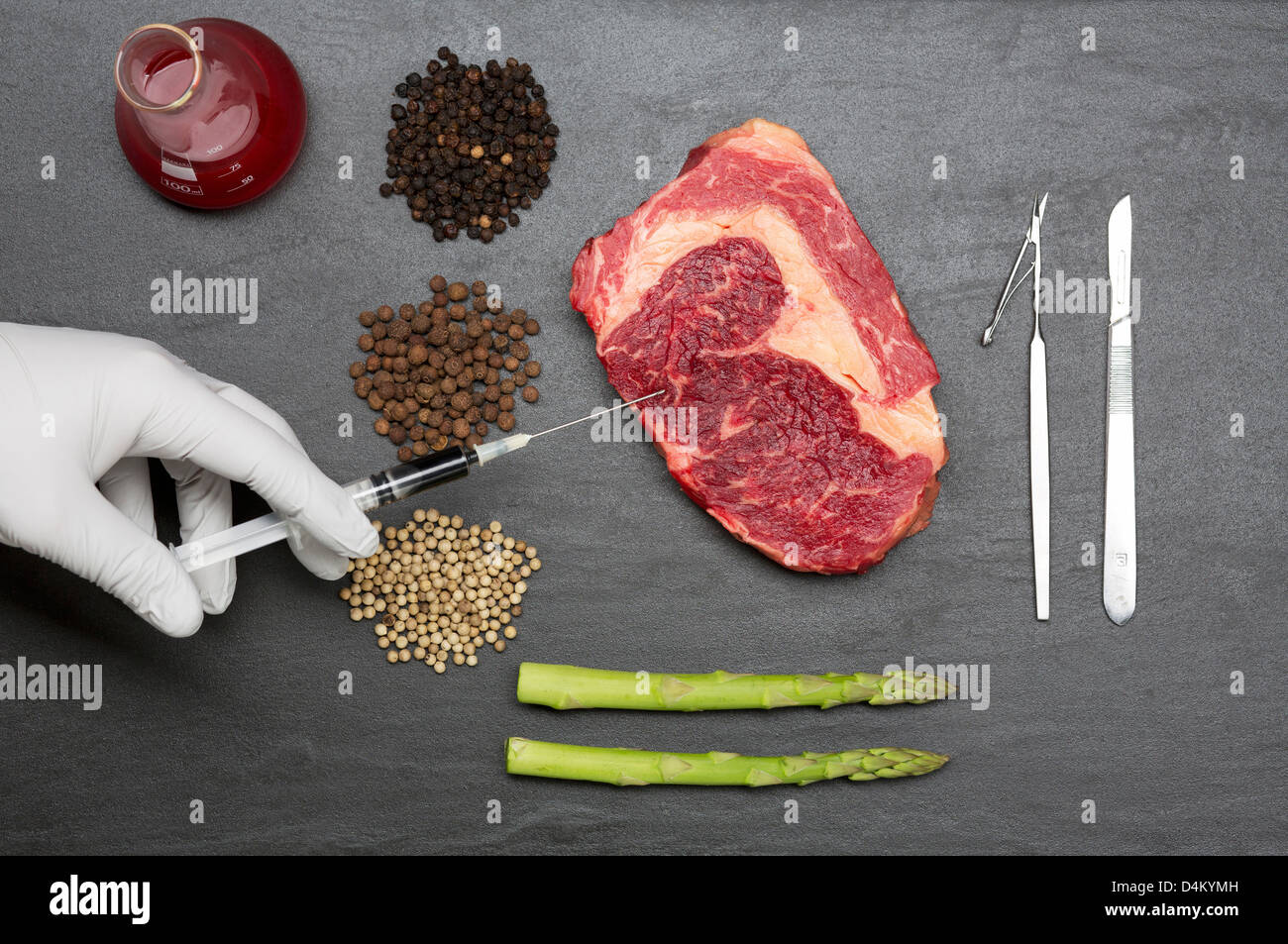 Hand injecting meat on counter Stock Photohttps://www.alamy.com/image-license-details/?v=1https://www.alamy.com/stock-photo-hand-injecting-meat-on-counter-54528561.html
Hand injecting meat on counter Stock Photohttps://www.alamy.com/image-license-details/?v=1https://www.alamy.com/stock-photo-hand-injecting-meat-on-counter-54528561.htmlRFD4KYMH–Hand injecting meat on counter
 AST-27-2336 - Apollo Soyuz Test Project - Apollo Soyuz Test Project, Earth Limb at Sunrise, East of Argentina; Scope and content: The original database describes this as: Description: Apollo Soyuz Test Project (ASTP),Earth Limb at Sunrise,East of Argentina. Image taken on Revolution 72. Greenwich Mean Time (GMT) of Photo 201:11:47,Ground Elapsed Time (GET) 111:57,Altitude 230 km. Original Film Magazine: CX-08,Laboratory Roll 27; Camera Data: Hasselblad Reflex,70-mm,Model 500EL,NASA Modified; Film Data: 70-mm Ektachrome,MS,Type QX-807,ASA = 64,Lens 50mm. Subject Terms: Apollo Soyuz Test Projec Stock Photohttps://www.alamy.com/image-license-details/?v=1https://www.alamy.com/ast-27-2336-apollo-soyuz-test-project-apollo-soyuz-test-project-earth-limb-at-sunrise-east-of-argentina-scope-and-content-the-original-database-describes-this-as-description-apollo-soyuz-test-project-astpearth-limb-at-sunriseeast-of-argentina-image-taken-on-revolution-72-greenwich-mean-time-gmt-of-photo-2011147ground-elapsed-time-get-11157altitude-230-km-original-film-magazine-cx-08laboratory-roll-27-camera-data-hasselblad-reflex70-mmmodel-500elnasa-modified-film-data-70-mm-ektachromemstype-qx-807asa-=-64lens-50mm-subject-terms-apollo-soyuz-test-projec-image360971167.html
AST-27-2336 - Apollo Soyuz Test Project - Apollo Soyuz Test Project, Earth Limb at Sunrise, East of Argentina; Scope and content: The original database describes this as: Description: Apollo Soyuz Test Project (ASTP),Earth Limb at Sunrise,East of Argentina. Image taken on Revolution 72. Greenwich Mean Time (GMT) of Photo 201:11:47,Ground Elapsed Time (GET) 111:57,Altitude 230 km. Original Film Magazine: CX-08,Laboratory Roll 27; Camera Data: Hasselblad Reflex,70-mm,Model 500EL,NASA Modified; Film Data: 70-mm Ektachrome,MS,Type QX-807,ASA = 64,Lens 50mm. Subject Terms: Apollo Soyuz Test Projec Stock Photohttps://www.alamy.com/image-license-details/?v=1https://www.alamy.com/ast-27-2336-apollo-soyuz-test-project-apollo-soyuz-test-project-earth-limb-at-sunrise-east-of-argentina-scope-and-content-the-original-database-describes-this-as-description-apollo-soyuz-test-project-astpearth-limb-at-sunriseeast-of-argentina-image-taken-on-revolution-72-greenwich-mean-time-gmt-of-photo-2011147ground-elapsed-time-get-11157altitude-230-km-original-film-magazine-cx-08laboratory-roll-27-camera-data-hasselblad-reflex70-mmmodel-500elnasa-modified-film-data-70-mm-ektachromemstype-qx-807asa-=-64lens-50mm-subject-terms-apollo-soyuz-test-projec-image360971167.htmlRM2BY7JBB–AST-27-2336 - Apollo Soyuz Test Project - Apollo Soyuz Test Project, Earth Limb at Sunrise, East of Argentina; Scope and content: The original database describes this as: Description: Apollo Soyuz Test Project (ASTP),Earth Limb at Sunrise,East of Argentina. Image taken on Revolution 72. Greenwich Mean Time (GMT) of Photo 201:11:47,Ground Elapsed Time (GET) 111:57,Altitude 230 km. Original Film Magazine: CX-08,Laboratory Roll 27; Camera Data: Hasselblad Reflex,70-mm,Model 500EL,NASA Modified; Film Data: 70-mm Ektachrome,MS,Type QX-807,ASA = 64,Lens 50mm. Subject Terms: Apollo Soyuz Test Projec
 cyborg man. head transplant job. life extension. Flat character vector illustration. Stock Vectorhttps://www.alamy.com/image-license-details/?v=1https://www.alamy.com/cyborg-man-head-transplant-job-life-extension-flat-character-vector-illustration-image367744377.html
cyborg man. head transplant job. life extension. Flat character vector illustration. Stock Vectorhttps://www.alamy.com/image-license-details/?v=1https://www.alamy.com/cyborg-man-head-transplant-job-life-extension-flat-character-vector-illustration-image367744377.htmlRF2CA85KN–cyborg man. head transplant job. life extension. Flat character vector illustration.
 . The chordates. Chordata. 570 Comparative Morphology of Chordates (J. Fig. 111. Modifications of the forelimb. (a) Necturus, a salamander, (b) Ichthyo- saurus, an extinct marine reptile, (c) Globicephalus, a cetacean (dolphin), (d) Pterodactyl, an extinct flying reptile. (The digits were probably I-IV, not II-V as shown by Wilder.) (e) Bird, (f) Bat. (a) represents a slightly modified limb skeleton—one digit lacking; (b) and (c), limbs modified for swimming; (d), (e), and (f), those modified for flight. (H) Humerus; (r) radius; (u, articulating with H) ulna; (I-V) digits. In (b) a typical car Stock Photohttps://www.alamy.com/image-license-details/?v=1https://www.alamy.com/the-chordates-chordata-570-comparative-morphology-of-chordates-j-fig-111-modifications-of-the-forelimb-a-necturus-a-salamander-b-ichthyo-saurus-an-extinct-marine-reptile-c-globicephalus-a-cetacean-dolphin-d-pterodactyl-an-extinct-flying-reptile-the-digits-were-probably-i-iv-not-ii-v-as-shown-by-wilder-e-bird-f-bat-a-represents-a-slightly-modified-limb-skeletonone-digit-lacking-b-and-c-limbs-modified-for-swimming-d-e-and-f-those-modified-for-flight-h-humerus-r-radius-u-articulating-with-h-ulna-i-v-digits-in-b-a-typical-car-image234907066.html
. The chordates. Chordata. 570 Comparative Morphology of Chordates (J. Fig. 111. Modifications of the forelimb. (a) Necturus, a salamander, (b) Ichthyo- saurus, an extinct marine reptile, (c) Globicephalus, a cetacean (dolphin), (d) Pterodactyl, an extinct flying reptile. (The digits were probably I-IV, not II-V as shown by Wilder.) (e) Bird, (f) Bat. (a) represents a slightly modified limb skeleton—one digit lacking; (b) and (c), limbs modified for swimming; (d), (e), and (f), those modified for flight. (H) Humerus; (r) radius; (u, articulating with H) ulna; (I-V) digits. In (b) a typical car Stock Photohttps://www.alamy.com/image-license-details/?v=1https://www.alamy.com/the-chordates-chordata-570-comparative-morphology-of-chordates-j-fig-111-modifications-of-the-forelimb-a-necturus-a-salamander-b-ichthyo-saurus-an-extinct-marine-reptile-c-globicephalus-a-cetacean-dolphin-d-pterodactyl-an-extinct-flying-reptile-the-digits-were-probably-i-iv-not-ii-v-as-shown-by-wilder-e-bird-f-bat-a-represents-a-slightly-modified-limb-skeletonone-digit-lacking-b-and-c-limbs-modified-for-swimming-d-e-and-f-those-modified-for-flight-h-humerus-r-radius-u-articulating-with-h-ulna-i-v-digits-in-b-a-typical-car-image234907066.htmlRMRJ4XA2–. The chordates. Chordata. 570 Comparative Morphology of Chordates (J. Fig. 111. Modifications of the forelimb. (a) Necturus, a salamander, (b) Ichthyo- saurus, an extinct marine reptile, (c) Globicephalus, a cetacean (dolphin), (d) Pterodactyl, an extinct flying reptile. (The digits were probably I-IV, not II-V as shown by Wilder.) (e) Bird, (f) Bat. (a) represents a slightly modified limb skeleton—one digit lacking; (b) and (c), limbs modified for swimming; (d), (e), and (f), those modified for flight. (H) Humerus; (r) radius; (u, articulating with H) ulna; (I-V) digits. In (b) a typical car
 Flipper of sea lion Stock Photohttps://www.alamy.com/image-license-details/?v=1https://www.alamy.com/flipper-of-sea-lion-image2339151.html
Flipper of sea lion Stock Photohttps://www.alamy.com/image-license-details/?v=1https://www.alamy.com/flipper-of-sea-lion-image2339151.htmlRMAAK150– Flipper of sea lion
 . A text-book of agricultural zoology. Zoology, Economic. 476 MAMMALIA. of year. From three to four young are born in May : they are pinky white, with white quills, and both eyes and ears are. Fig. 224.—Skull of Hedgehog (Brinaceus europaius). (NicliolsoD.) closed. They are joroduced and kept in a nest of moss, covered with leaves. In many respects the hedgehog is injurious, but it also does good in destroying vermin. Order CHIROPTEEA or BATS. The Bats, which are insectivorous mammals, are characterised by the peculiarly modified forearms, adapted to form the wings. The digits of the fore-limb Stock Photohttps://www.alamy.com/image-license-details/?v=1https://www.alamy.com/a-text-book-of-agricultural-zoology-zoology-economic-476-mammalia-of-year-from-three-to-four-young-are-born-in-may-they-are-pinky-white-with-white-quills-and-both-eyes-and-ears-are-fig-224skull-of-hedgehog-brinaceus-europaius-nicliolsod-closed-they-are-joroduced-and-kept-in-a-nest-of-moss-covered-with-leaves-in-many-respects-the-hedgehog-is-injurious-but-it-also-does-good-in-destroying-vermin-order-chiropteea-or-bats-the-bats-which-are-insectivorous-mammals-are-characterised-by-the-peculiarly-modified-forearms-adapted-to-form-the-wings-the-digits-of-the-fore-limb-image216446546.html
. A text-book of agricultural zoology. Zoology, Economic. 476 MAMMALIA. of year. From three to four young are born in May : they are pinky white, with white quills, and both eyes and ears are. Fig. 224.—Skull of Hedgehog (Brinaceus europaius). (NicliolsoD.) closed. They are joroduced and kept in a nest of moss, covered with leaves. In many respects the hedgehog is injurious, but it also does good in destroying vermin. Order CHIROPTEEA or BATS. The Bats, which are insectivorous mammals, are characterised by the peculiarly modified forearms, adapted to form the wings. The digits of the fore-limb Stock Photohttps://www.alamy.com/image-license-details/?v=1https://www.alamy.com/a-text-book-of-agricultural-zoology-zoology-economic-476-mammalia-of-year-from-three-to-four-young-are-born-in-may-they-are-pinky-white-with-white-quills-and-both-eyes-and-ears-are-fig-224skull-of-hedgehog-brinaceus-europaius-nicliolsod-closed-they-are-joroduced-and-kept-in-a-nest-of-moss-covered-with-leaves-in-many-respects-the-hedgehog-is-injurious-but-it-also-does-good-in-destroying-vermin-order-chiropteea-or-bats-the-bats-which-are-insectivorous-mammals-are-characterised-by-the-peculiarly-modified-forearms-adapted-to-form-the-wings-the-digits-of-the-fore-limb-image216446546.htmlRMPG3YNP–. A text-book of agricultural zoology. Zoology, Economic. 476 MAMMALIA. of year. From three to four young are born in May : they are pinky white, with white quills, and both eyes and ears are. Fig. 224.—Skull of Hedgehog (Brinaceus europaius). (NicliolsoD.) closed. They are joroduced and kept in a nest of moss, covered with leaves. In many respects the hedgehog is injurious, but it also does good in destroying vermin. Order CHIROPTEEA or BATS. The Bats, which are insectivorous mammals, are characterised by the peculiarly modified forearms, adapted to form the wings. The digits of the fore-limb
 Gloved hand holding tomato Stock Photohttps://www.alamy.com/image-license-details/?v=1https://www.alamy.com/stock-photo-gloved-hand-holding-tomato-54528783.html
Gloved hand holding tomato Stock Photohttps://www.alamy.com/image-license-details/?v=1https://www.alamy.com/stock-photo-gloved-hand-holding-tomato-54528783.htmlRFD4M00F–Gloved hand holding tomato
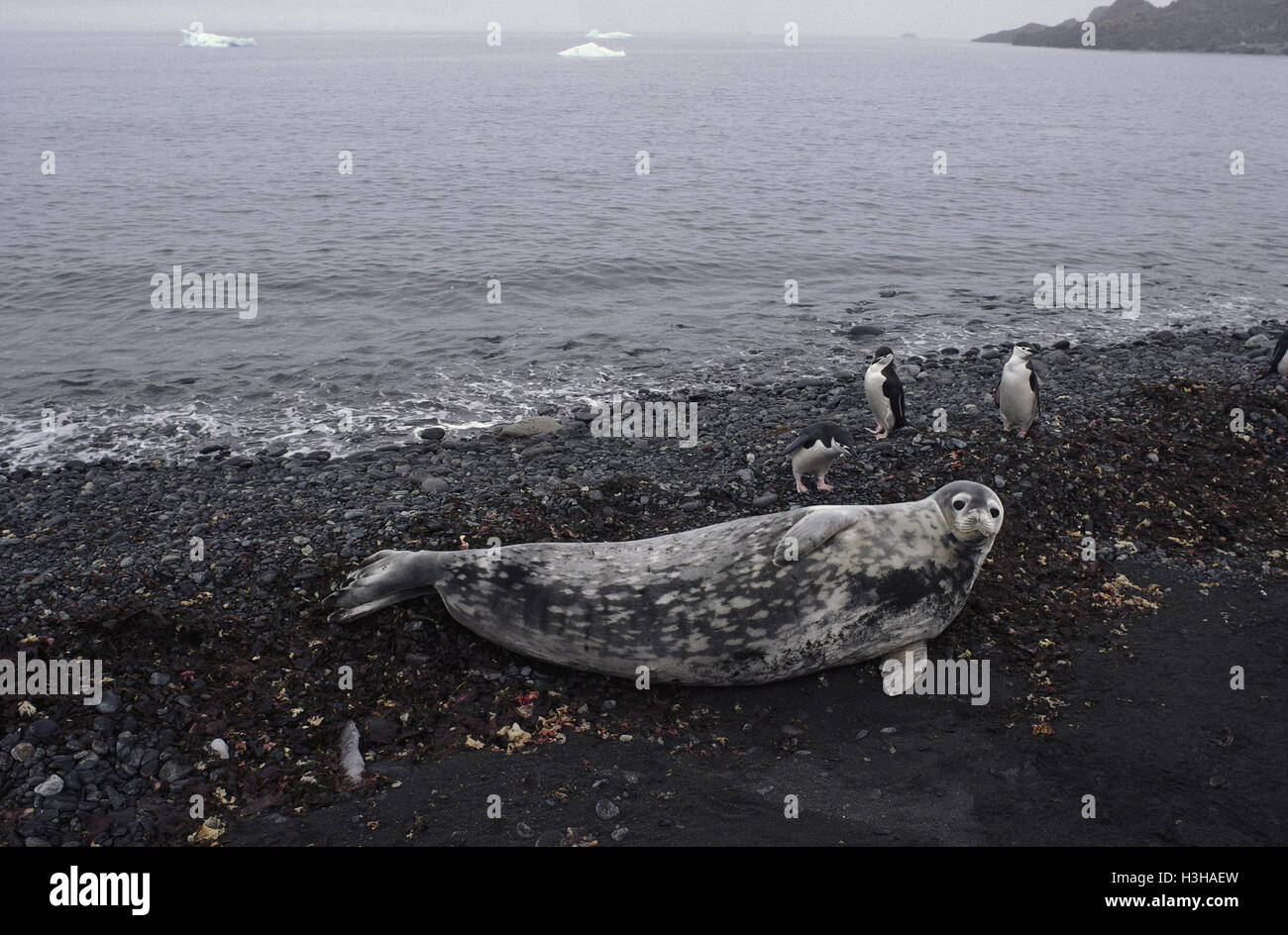 Weddell seal (Leptonychotes weddellii) Stock Photohttps://www.alamy.com/image-license-details/?v=1https://www.alamy.com/stock-photo-weddell-seal-leptonychotes-weddellii-122697985.html
Weddell seal (Leptonychotes weddellii) Stock Photohttps://www.alamy.com/image-license-details/?v=1https://www.alamy.com/stock-photo-weddell-seal-leptonychotes-weddellii-122697985.htmlRMH3HAEW–Weddell seal (Leptonychotes weddellii)
 Genetically modified egg Stock Photohttps://www.alamy.com/image-license-details/?v=1https://www.alamy.com/stock-photo-genetically-modified-egg-37881792.html
Genetically modified egg Stock Photohttps://www.alamy.com/image-license-details/?v=1https://www.alamy.com/stock-photo-genetically-modified-egg-37881792.htmlRFC5HJH4–Genetically modified egg
 Weddell fur seal Leptonychotes weddellii Paradise Bay Antarctic Peninsula Antarctica Stock Photohttps://www.alamy.com/image-license-details/?v=1https://www.alamy.com/stock-photo-weddell-fur-seal-leptonychotes-weddellii-paradise-bay-antarctic-peninsula-11843372.html
Weddell fur seal Leptonychotes weddellii Paradise Bay Antarctic Peninsula Antarctica Stock Photohttps://www.alamy.com/image-license-details/?v=1https://www.alamy.com/stock-photo-weddell-fur-seal-leptonychotes-weddellii-paradise-bay-antarctic-peninsula-11843372.htmlRMA7HEPN–Weddell fur seal Leptonychotes weddellii Paradise Bay Antarctic Peninsula Antarctica
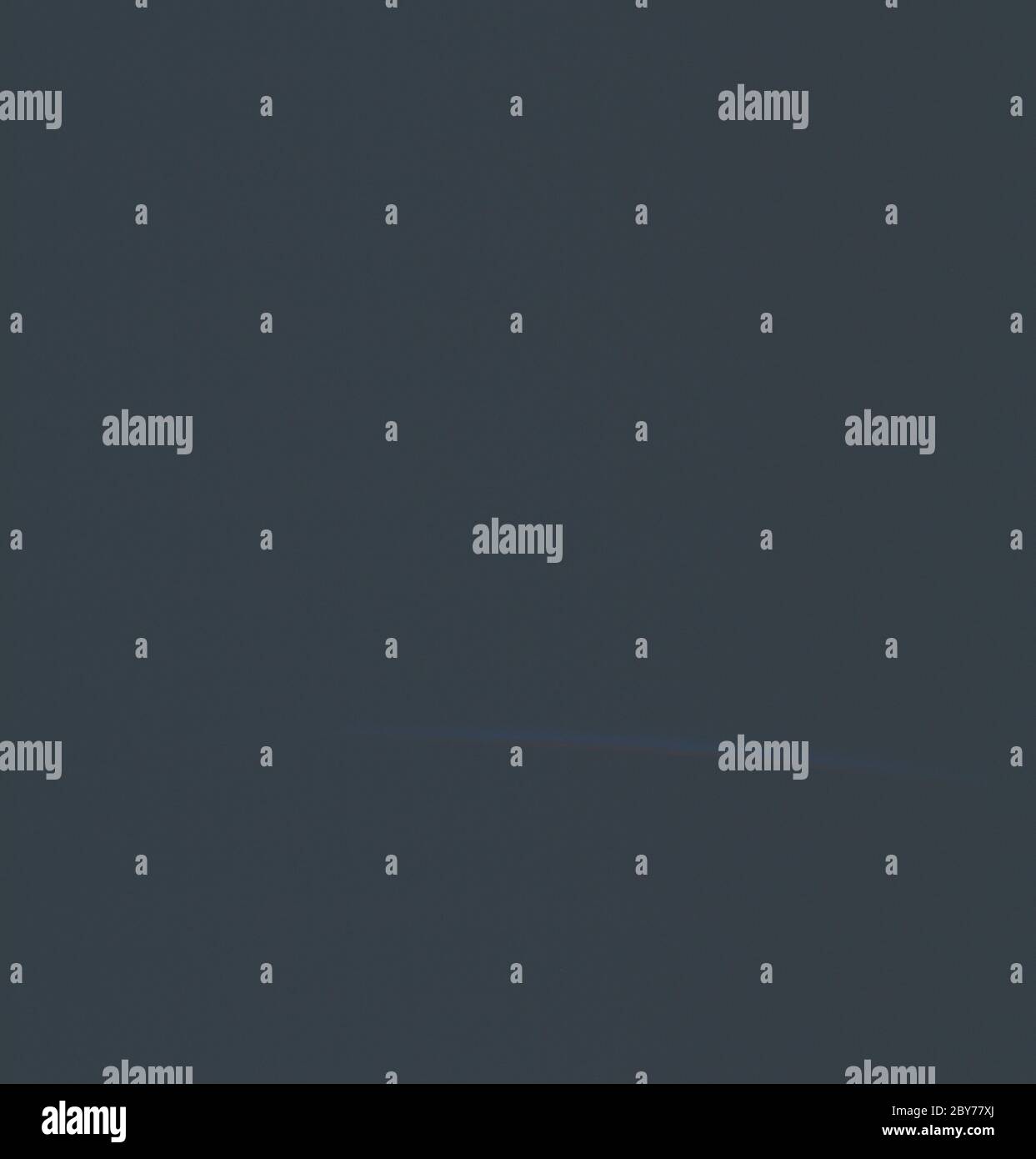 AST-30-2578 - Apollo Soyuz Test Project - Apollo Soyuz Test Project, Earth Limb, At Sunrise, Very Faint; Scope and content: The original database describes this as: Description: Apollo Soyuz Test Project (ASTP),Earth Limb,At Sunrise,Very Faint. Image taken on Revolution 76. Greenwich Mean Time (GMT) of Photo 201:19:06,Ground Elapsed Time (GET) 119:16,Altitude 230 km. Original Film Magazine: CX-14, Laboratory Roll 30; Camera Data: Hasselblad Reflex,70-mm,Model 500EL,NASA Modified; Film Data: 70-mm Ektachrome,MS,Type QX-807,ASA = 64,Lens 50mm. Subject Terms: Apollo Soyuz Test Project, Earth Obs Stock Photohttps://www.alamy.com/image-license-details/?v=1https://www.alamy.com/ast-30-2578-apollo-soyuz-test-project-apollo-soyuz-test-project-earth-limb-at-sunrise-very-faint-scope-and-content-the-original-database-describes-this-as-description-apollo-soyuz-test-project-astpearth-limbat-sunrisevery-faint-image-taken-on-revolution-76-greenwich-mean-time-gmt-of-photo-2011906ground-elapsed-time-get-11916altitude-230-km-original-film-magazine-cx-14-laboratory-roll-30-camera-data-hasselblad-reflex70-mmmodel-500elnasa-modified-film-data-70-mm-ektachromemstype-qx-807asa-=-64lens-50mm-subject-terms-apollo-soyuz-test-project-earth-obs-image360962970.html
AST-30-2578 - Apollo Soyuz Test Project - Apollo Soyuz Test Project, Earth Limb, At Sunrise, Very Faint; Scope and content: The original database describes this as: Description: Apollo Soyuz Test Project (ASTP),Earth Limb,At Sunrise,Very Faint. Image taken on Revolution 76. Greenwich Mean Time (GMT) of Photo 201:19:06,Ground Elapsed Time (GET) 119:16,Altitude 230 km. Original Film Magazine: CX-14, Laboratory Roll 30; Camera Data: Hasselblad Reflex,70-mm,Model 500EL,NASA Modified; Film Data: 70-mm Ektachrome,MS,Type QX-807,ASA = 64,Lens 50mm. Subject Terms: Apollo Soyuz Test Project, Earth Obs Stock Photohttps://www.alamy.com/image-license-details/?v=1https://www.alamy.com/ast-30-2578-apollo-soyuz-test-project-apollo-soyuz-test-project-earth-limb-at-sunrise-very-faint-scope-and-content-the-original-database-describes-this-as-description-apollo-soyuz-test-project-astpearth-limbat-sunrisevery-faint-image-taken-on-revolution-76-greenwich-mean-time-gmt-of-photo-2011906ground-elapsed-time-get-11916altitude-230-km-original-film-magazine-cx-14-laboratory-roll-30-camera-data-hasselblad-reflex70-mmmodel-500elnasa-modified-film-data-70-mm-ektachromemstype-qx-807asa-=-64lens-50mm-subject-terms-apollo-soyuz-test-project-earth-obs-image360962970.htmlRM2BY77XJ–AST-30-2578 - Apollo Soyuz Test Project - Apollo Soyuz Test Project, Earth Limb, At Sunrise, Very Faint; Scope and content: The original database describes this as: Description: Apollo Soyuz Test Project (ASTP),Earth Limb,At Sunrise,Very Faint. Image taken on Revolution 76. Greenwich Mean Time (GMT) of Photo 201:19:06,Ground Elapsed Time (GET) 119:16,Altitude 230 km. Original Film Magazine: CX-14, Laboratory Roll 30; Camera Data: Hasselblad Reflex,70-mm,Model 500EL,NASA Modified; Film Data: 70-mm Ektachrome,MS,Type QX-807,ASA = 64,Lens 50mm. Subject Terms: Apollo Soyuz Test Project, Earth Obs
 . Operative surgery. ps of excessive length and suitably trim themthereafter, than to make them too short at the expense of the comfort andusefulness of the limb. The great danger is that flaps will be made tooshort rather than too long. The methods of amputation are classified.^ according to the outlines of theincisions, into circular., modified circular, elliptical (page 400), oval or racket,and common and special flap methods. The flaps of these methods may becomposed of integument alone, or combined with muscular tissue, and evenwith periosteum. The Circular Method.—The circular method giv Stock Photohttps://www.alamy.com/image-license-details/?v=1https://www.alamy.com/operative-surgery-ps-of-excessive-length-and-suitably-trim-themthereafter-than-to-make-them-too-short-at-the-expense-of-the-comfort-andusefulness-of-the-limb-the-great-danger-is-that-flaps-will-be-made-tooshort-rather-than-too-long-the-methods-of-amputation-are-classified-according-to-the-outlines-of-theincisions-into-circular-modified-circular-elliptical-page-400-oval-or-racketand-common-and-special-flap-methods-the-flaps-of-these-methods-may-becomposed-of-integument-alone-or-combined-with-muscular-tissue-and-evenwith-periosteum-the-circular-methodthe-circular-method-giv-image337143168.html
. Operative surgery. ps of excessive length and suitably trim themthereafter, than to make them too short at the expense of the comfort andusefulness of the limb. The great danger is that flaps will be made tooshort rather than too long. The methods of amputation are classified.^ according to the outlines of theincisions, into circular., modified circular, elliptical (page 400), oval or racket,and common and special flap methods. The flaps of these methods may becomposed of integument alone, or combined with muscular tissue, and evenwith periosteum. The Circular Method.—The circular method giv Stock Photohttps://www.alamy.com/image-license-details/?v=1https://www.alamy.com/operative-surgery-ps-of-excessive-length-and-suitably-trim-themthereafter-than-to-make-them-too-short-at-the-expense-of-the-comfort-andusefulness-of-the-limb-the-great-danger-is-that-flaps-will-be-made-tooshort-rather-than-too-long-the-methods-of-amputation-are-classified-according-to-the-outlines-of-theincisions-into-circular-modified-circular-elliptical-page-400-oval-or-racketand-common-and-special-flap-methods-the-flaps-of-these-methods-may-becomposed-of-integument-alone-or-combined-with-muscular-tissue-and-evenwith-periosteum-the-circular-methodthe-circular-method-giv-image337143168.htmlRM2AGE5FC–. Operative surgery. ps of excessive length and suitably trim themthereafter, than to make them too short at the expense of the comfort andusefulness of the limb. The great danger is that flaps will be made tooshort rather than too long. The methods of amputation are classified.^ according to the outlines of theincisions, into circular., modified circular, elliptical (page 400), oval or racket,and common and special flap methods. The flaps of these methods may becomposed of integument alone, or combined with muscular tissue, and evenwith periosteum. The Circular Method.—The circular method giv
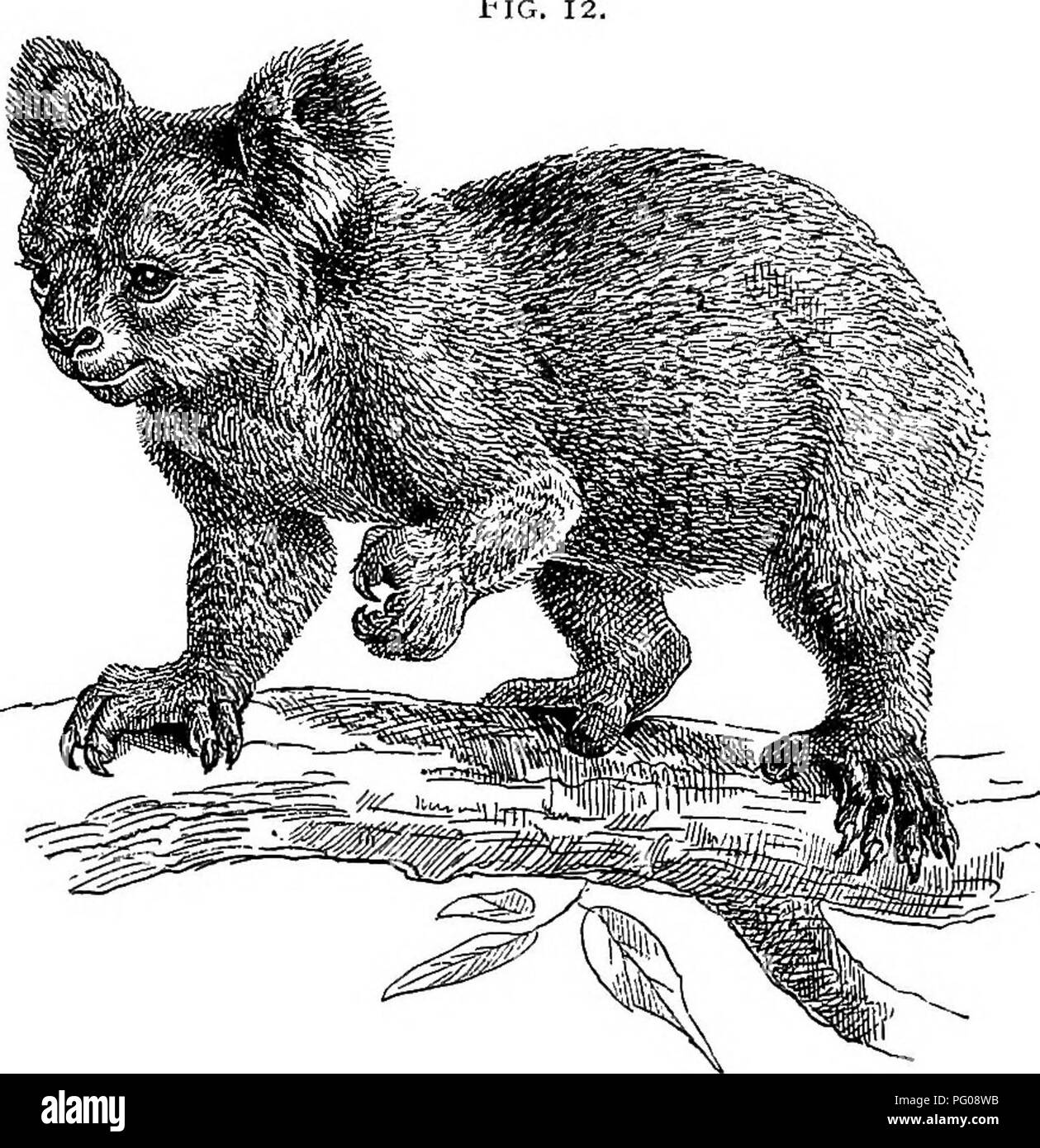 . American types of animal life. Zoology; Animal behavior. THE OPOSSUM 49 It might seem at first sight, then, that in the kangaroo we have a kind of creature allied to the hoofed beasts long before known, and only so far modified as to be in harmony with climatic needs. But the structure of its hind foot is alone sufficient to dispel such a notion. Each hind limb has, indeed (like that of an antelope or riG. THE KOALA. deer), but two large and conspicuous toes. But these are of unequal size, and the inner one, which is much the larger, bears a very long and strong claw. On the inner side of th Stock Photohttps://www.alamy.com/image-license-details/?v=1https://www.alamy.com/american-types-of-animal-life-zoology-animal-behavior-the-opossum-49-it-might-seem-at-first-sight-then-that-in-the-kangaroo-we-have-a-kind-of-creature-allied-to-the-hoofed-beasts-long-before-known-and-only-so-far-modified-as-to-be-in-harmony-with-climatic-needs-but-the-structure-of-its-hind-foot-is-alone-sufficient-to-dispel-such-a-notion-each-hind-limb-has-indeed-like-that-of-an-antelope-or-rig-the-koala-deer-but-two-large-and-conspicuous-toes-but-these-are-of-unequal-size-and-the-inner-one-which-is-much-the-larger-bears-a-very-long-and-strong-claw-on-the-inner-side-of-th-image216365895.html
. American types of animal life. Zoology; Animal behavior. THE OPOSSUM 49 It might seem at first sight, then, that in the kangaroo we have a kind of creature allied to the hoofed beasts long before known, and only so far modified as to be in harmony with climatic needs. But the structure of its hind foot is alone sufficient to dispel such a notion. Each hind limb has, indeed (like that of an antelope or riG. THE KOALA. deer), but two large and conspicuous toes. But these are of unequal size, and the inner one, which is much the larger, bears a very long and strong claw. On the inner side of th Stock Photohttps://www.alamy.com/image-license-details/?v=1https://www.alamy.com/american-types-of-animal-life-zoology-animal-behavior-the-opossum-49-it-might-seem-at-first-sight-then-that-in-the-kangaroo-we-have-a-kind-of-creature-allied-to-the-hoofed-beasts-long-before-known-and-only-so-far-modified-as-to-be-in-harmony-with-climatic-needs-but-the-structure-of-its-hind-foot-is-alone-sufficient-to-dispel-such-a-notion-each-hind-limb-has-indeed-like-that-of-an-antelope-or-rig-the-koala-deer-but-two-large-and-conspicuous-toes-but-these-are-of-unequal-size-and-the-inner-one-which-is-much-the-larger-bears-a-very-long-and-strong-claw-on-the-inner-side-of-th-image216365895.htmlRMPG08WB–. American types of animal life. Zoology; Animal behavior. THE OPOSSUM 49 It might seem at first sight, then, that in the kangaroo we have a kind of creature allied to the hoofed beasts long before known, and only so far modified as to be in harmony with climatic needs. But the structure of its hind foot is alone sufficient to dispel such a notion. Each hind limb has, indeed (like that of an antelope or riG. THE KOALA. deer), but two large and conspicuous toes. But these are of unequal size, and the inner one, which is much the larger, bears a very long and strong claw. On the inner side of th
 Gloved hands holding tomato Stock Photohttps://www.alamy.com/image-license-details/?v=1https://www.alamy.com/stock-photo-gloved-hands-holding-tomato-54528763.html
Gloved hands holding tomato Stock Photohttps://www.alamy.com/image-license-details/?v=1https://www.alamy.com/stock-photo-gloved-hands-holding-tomato-54528763.htmlRFD4KYYR–Gloved hands holding tomato
 Genetically modified meat Stock Photohttps://www.alamy.com/image-license-details/?v=1https://www.alamy.com/stock-photo-genetically-modified-meat-37881789.html
Genetically modified meat Stock Photohttps://www.alamy.com/image-license-details/?v=1https://www.alamy.com/stock-photo-genetically-modified-meat-37881789.htmlRFC5HJH1–Genetically modified meat
 AST-30-2579 - Apollo Soyuz Test Project - Apollo Soyuz Test Project, Earth Limb, At Sunrise, Faint; Scope and content: The original database describes this as: Description: Apollo Soyuz Test Project (ASTP),Earth Limb,At Sunrise,Faint. Image taken on Revolution 76. Greenwich Mean Time (GMT) of Photo 201:19:06,Ground Elapsed Time (GET) 119:16,Altitude 230 km. Original Film Magazine: CX-14, Laboratory Roll 30; Camera Data: Hasselblad Reflex,70-mm,Model 500EL,NASA Modified; Film Data: 70-mm Ektachrome,MS,Type QX-807,ASA = 64,Lens 50mm. Subject Terms: Apollo Soyuz Test Project, Earth Observations Stock Photohttps://www.alamy.com/image-license-details/?v=1https://www.alamy.com/ast-30-2579-apollo-soyuz-test-project-apollo-soyuz-test-project-earth-limb-at-sunrise-faint-scope-and-content-the-original-database-describes-this-as-description-apollo-soyuz-test-project-astpearth-limbat-sunrisefaint-image-taken-on-revolution-76-greenwich-mean-time-gmt-of-photo-2011906ground-elapsed-time-get-11916altitude-230-km-original-film-magazine-cx-14-laboratory-roll-30-camera-data-hasselblad-reflex70-mmmodel-500elnasa-modified-film-data-70-mm-ektachromemstype-qx-807asa-=-64lens-50mm-subject-terms-apollo-soyuz-test-project-earth-observations-image360963831.html
AST-30-2579 - Apollo Soyuz Test Project - Apollo Soyuz Test Project, Earth Limb, At Sunrise, Faint; Scope and content: The original database describes this as: Description: Apollo Soyuz Test Project (ASTP),Earth Limb,At Sunrise,Faint. Image taken on Revolution 76. Greenwich Mean Time (GMT) of Photo 201:19:06,Ground Elapsed Time (GET) 119:16,Altitude 230 km. Original Film Magazine: CX-14, Laboratory Roll 30; Camera Data: Hasselblad Reflex,70-mm,Model 500EL,NASA Modified; Film Data: 70-mm Ektachrome,MS,Type QX-807,ASA = 64,Lens 50mm. Subject Terms: Apollo Soyuz Test Project, Earth Observations Stock Photohttps://www.alamy.com/image-license-details/?v=1https://www.alamy.com/ast-30-2579-apollo-soyuz-test-project-apollo-soyuz-test-project-earth-limb-at-sunrise-faint-scope-and-content-the-original-database-describes-this-as-description-apollo-soyuz-test-project-astpearth-limbat-sunrisefaint-image-taken-on-revolution-76-greenwich-mean-time-gmt-of-photo-2011906ground-elapsed-time-get-11916altitude-230-km-original-film-magazine-cx-14-laboratory-roll-30-camera-data-hasselblad-reflex70-mmmodel-500elnasa-modified-film-data-70-mm-ektachromemstype-qx-807asa-=-64lens-50mm-subject-terms-apollo-soyuz-test-project-earth-observations-image360963831.htmlRM2BY791B–AST-30-2579 - Apollo Soyuz Test Project - Apollo Soyuz Test Project, Earth Limb, At Sunrise, Faint; Scope and content: The original database describes this as: Description: Apollo Soyuz Test Project (ASTP),Earth Limb,At Sunrise,Faint. Image taken on Revolution 76. Greenwich Mean Time (GMT) of Photo 201:19:06,Ground Elapsed Time (GET) 119:16,Altitude 230 km. Original Film Magazine: CX-14, Laboratory Roll 30; Camera Data: Hasselblad Reflex,70-mm,Model 500EL,NASA Modified; Film Data: 70-mm Ektachrome,MS,Type QX-807,ASA = 64,Lens 50mm. Subject Terms: Apollo Soyuz Test Project, Earth Observations
 Lectures on the operations of surgery : and on diseases and accidents requiring operations . o readily obtained.The original instrument consisted ofan handkerchief or bandage foldeddiagonally so as to form a rope, inthe middle of which a knot was made;and of a stick, or the handle of a whip,or something of the sort, by which thebandage, after having been appliedto the limb, might be tightly twisted.Thus composed it is sometimes calledthe field tourniquet from its havingbeen frequently employed on the fieldof battle; it is also occasionally calledthe Spanish windlass! As at pre-sent modified, t Stock Photohttps://www.alamy.com/image-license-details/?v=1https://www.alamy.com/lectures-on-the-operations-of-surgery-and-on-diseases-and-accidents-requiring-operations-o-readily-obtainedthe-original-instrument-consisted-ofan-handkerchief-or-bandage-foldeddiagonally-so-as-to-form-a-rope-inthe-middle-of-which-a-knot-was-madeand-of-a-stick-or-the-handle-of-a-whipor-something-of-the-sort-by-which-thebandage-after-having-been-appliedto-the-limb-might-be-tightly-twistedthus-composed-it-is-sometimes-calledthe-field-tourniquet-from-its-havingbeen-frequently-employed-on-the-fieldof-battle-it-is-also-occasionally-calledthe-spanish-windlass!-as-at-pre-sent-modified-t-image340174371.html
Lectures on the operations of surgery : and on diseases and accidents requiring operations . o readily obtained.The original instrument consisted ofan handkerchief or bandage foldeddiagonally so as to form a rope, inthe middle of which a knot was made;and of a stick, or the handle of a whip,or something of the sort, by which thebandage, after having been appliedto the limb, might be tightly twisted.Thus composed it is sometimes calledthe field tourniquet from its havingbeen frequently employed on the fieldof battle; it is also occasionally calledthe Spanish windlass! As at pre-sent modified, t Stock Photohttps://www.alamy.com/image-license-details/?v=1https://www.alamy.com/lectures-on-the-operations-of-surgery-and-on-diseases-and-accidents-requiring-operations-o-readily-obtainedthe-original-instrument-consisted-ofan-handkerchief-or-bandage-foldeddiagonally-so-as-to-form-a-rope-inthe-middle-of-which-a-knot-was-madeand-of-a-stick-or-the-handle-of-a-whipor-something-of-the-sort-by-which-thebandage-after-having-been-appliedto-the-limb-might-be-tightly-twistedthus-composed-it-is-sometimes-calledthe-field-tourniquet-from-its-havingbeen-frequently-employed-on-the-fieldof-battle-it-is-also-occasionally-calledthe-spanish-windlass!-as-at-pre-sent-modified-t-image340174371.htmlRM2ANC7TK–Lectures on the operations of surgery : and on diseases and accidents requiring operations . o readily obtained.The original instrument consisted ofan handkerchief or bandage foldeddiagonally so as to form a rope, inthe middle of which a knot was made;and of a stick, or the handle of a whip,or something of the sort, by which thebandage, after having been appliedto the limb, might be tightly twisted.Thus composed it is sometimes calledthe field tourniquet from its havingbeen frequently employed on the fieldof battle; it is also occasionally calledthe Spanish windlass! As at pre-sent modified, t
 . Darwin, and after Darwin. An exposition of the Darwinian theory and a discussion of post-Darwinian questions. Evolution; Heredity. 54 Darwin^ and after Darwin. Now I have chosen the case of the whale and porpoise group, because they offer so extreme an example of profound modification of structure in adaptation to changed conditions of life. But the same thing may be seen in hundreds and hundreds of other cases. For instance, to confine our attention. flG. 4.—Paddle of Whale compared with Hand ..f Man. Drawn from nature { R. Coll. Surg. Mus.). to the arm, not only is the limb modified in the Stock Photohttps://www.alamy.com/image-license-details/?v=1https://www.alamy.com/darwin-and-after-darwin-an-exposition-of-the-darwinian-theory-and-a-discussion-of-post-darwinian-questions-evolution-heredity-54-darwin-and-after-darwin-now-i-have-chosen-the-case-of-the-whale-and-porpoise-group-because-they-offer-so-extreme-an-example-of-profound-modification-of-structure-in-adaptation-to-changed-conditions-of-life-but-the-same-thing-may-be-seen-in-hundreds-and-hundreds-of-other-cases-for-instance-to-confine-our-attention-flg-4paddle-of-whale-compared-with-hand-f-man-drawn-from-nature-r-coll-surg-mus-to-the-arm-not-only-is-the-limb-modified-in-the-image216124509.html
. Darwin, and after Darwin. An exposition of the Darwinian theory and a discussion of post-Darwinian questions. Evolution; Heredity. 54 Darwin^ and after Darwin. Now I have chosen the case of the whale and porpoise group, because they offer so extreme an example of profound modification of structure in adaptation to changed conditions of life. But the same thing may be seen in hundreds and hundreds of other cases. For instance, to confine our attention. flG. 4.—Paddle of Whale compared with Hand ..f Man. Drawn from nature { R. Coll. Surg. Mus.). to the arm, not only is the limb modified in the Stock Photohttps://www.alamy.com/image-license-details/?v=1https://www.alamy.com/darwin-and-after-darwin-an-exposition-of-the-darwinian-theory-and-a-discussion-of-post-darwinian-questions-evolution-heredity-54-darwin-and-after-darwin-now-i-have-chosen-the-case-of-the-whale-and-porpoise-group-because-they-offer-so-extreme-an-example-of-profound-modification-of-structure-in-adaptation-to-changed-conditions-of-life-but-the-same-thing-may-be-seen-in-hundreds-and-hundreds-of-other-cases-for-instance-to-confine-our-attention-flg-4paddle-of-whale-compared-with-hand-f-man-drawn-from-nature-r-coll-surg-mus-to-the-arm-not-only-is-the-limb-modified-in-the-image216124509.htmlRMPFH90D–. Darwin, and after Darwin. An exposition of the Darwinian theory and a discussion of post-Darwinian questions. Evolution; Heredity. 54 Darwin^ and after Darwin. Now I have chosen the case of the whale and porpoise group, because they offer so extreme an example of profound modification of structure in adaptation to changed conditions of life. But the same thing may be seen in hundreds and hundreds of other cases. For instance, to confine our attention. flG. 4.—Paddle of Whale compared with Hand ..f Man. Drawn from nature { R. Coll. Surg. Mus.). to the arm, not only is the limb modified in the
 Gloved hand injecting eggs Stock Photohttps://www.alamy.com/image-license-details/?v=1https://www.alamy.com/stock-photo-gloved-hand-injecting-eggs-54528766.html
Gloved hand injecting eggs Stock Photohttps://www.alamy.com/image-license-details/?v=1https://www.alamy.com/stock-photo-gloved-hand-injecting-eggs-54528766.htmlRFD4KYYX–Gloved hand injecting eggs
 Genetically modified tomato Stock Photohttps://www.alamy.com/image-license-details/?v=1https://www.alamy.com/stock-photo-genetically-modified-tomato-37881796.html
Genetically modified tomato Stock Photohttps://www.alamy.com/image-license-details/?v=1https://www.alamy.com/stock-photo-genetically-modified-tomato-37881796.htmlRFC5HJH8–Genetically modified tomato
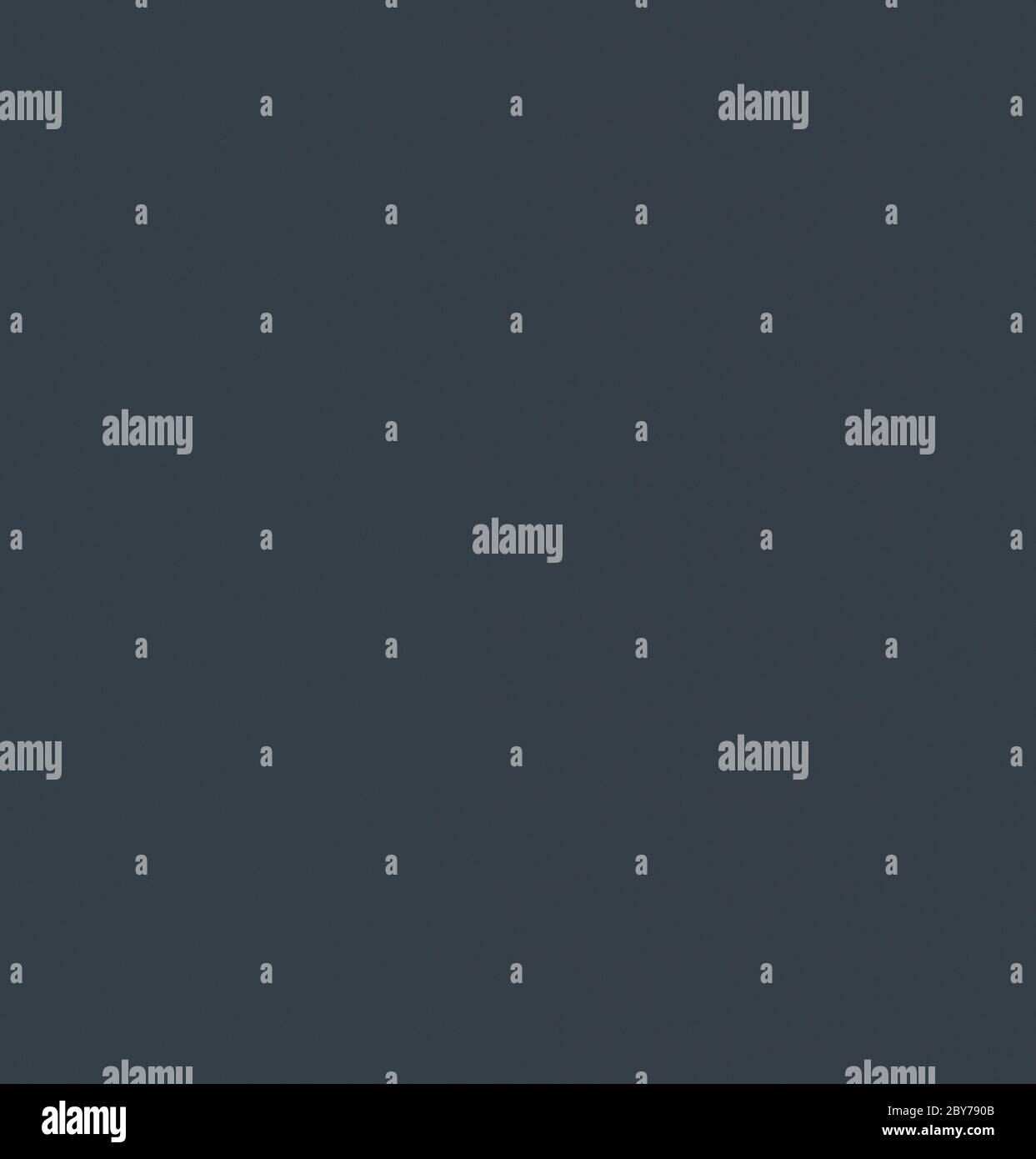 AST-30-2576 - Apollo Soyuz Test Project - Apollo Soyuz Test Project, Earth Limb, No Exposure; Scope and content: The original database describes this as: Description: Apollo Soyuz Test Project (ASTP),Earth Limb,No Exposure. Image taken on Revolution 76. Greenwich Mean Time (GMT) of Photo 201:19:05,Ground Elapsed Time (GET) 119:15,Altitude 230 km. Original Film Magazine: CX-14, Laboratory Roll 30; Camera Data: Hasselblad Reflex,70-mm,Model 500EL,NASA Modified; Film Data: 70-mm Ektachrome,MS,Type QX-807,ASA = 64,Lens 50mm. Subject Terms: Apollo Soyuz Test Project, Earth Observations (From Space Stock Photohttps://www.alamy.com/image-license-details/?v=1https://www.alamy.com/ast-30-2576-apollo-soyuz-test-project-apollo-soyuz-test-project-earth-limb-no-exposure-scope-and-content-the-original-database-describes-this-as-description-apollo-soyuz-test-project-astpearth-limbno-exposure-image-taken-on-revolution-76-greenwich-mean-time-gmt-of-photo-2011905ground-elapsed-time-get-11915altitude-230-km-original-film-magazine-cx-14-laboratory-roll-30-camera-data-hasselblad-reflex70-mmmodel-500elnasa-modified-film-data-70-mm-ektachromemstype-qx-807asa-=-64lens-50mm-subject-terms-apollo-soyuz-test-project-earth-observations-from-space-image360963803.html
AST-30-2576 - Apollo Soyuz Test Project - Apollo Soyuz Test Project, Earth Limb, No Exposure; Scope and content: The original database describes this as: Description: Apollo Soyuz Test Project (ASTP),Earth Limb,No Exposure. Image taken on Revolution 76. Greenwich Mean Time (GMT) of Photo 201:19:05,Ground Elapsed Time (GET) 119:15,Altitude 230 km. Original Film Magazine: CX-14, Laboratory Roll 30; Camera Data: Hasselblad Reflex,70-mm,Model 500EL,NASA Modified; Film Data: 70-mm Ektachrome,MS,Type QX-807,ASA = 64,Lens 50mm. Subject Terms: Apollo Soyuz Test Project, Earth Observations (From Space Stock Photohttps://www.alamy.com/image-license-details/?v=1https://www.alamy.com/ast-30-2576-apollo-soyuz-test-project-apollo-soyuz-test-project-earth-limb-no-exposure-scope-and-content-the-original-database-describes-this-as-description-apollo-soyuz-test-project-astpearth-limbno-exposure-image-taken-on-revolution-76-greenwich-mean-time-gmt-of-photo-2011905ground-elapsed-time-get-11915altitude-230-km-original-film-magazine-cx-14-laboratory-roll-30-camera-data-hasselblad-reflex70-mmmodel-500elnasa-modified-film-data-70-mm-ektachromemstype-qx-807asa-=-64lens-50mm-subject-terms-apollo-soyuz-test-project-earth-observations-from-space-image360963803.htmlRM2BY790B–AST-30-2576 - Apollo Soyuz Test Project - Apollo Soyuz Test Project, Earth Limb, No Exposure; Scope and content: The original database describes this as: Description: Apollo Soyuz Test Project (ASTP),Earth Limb,No Exposure. Image taken on Revolution 76. Greenwich Mean Time (GMT) of Photo 201:19:05,Ground Elapsed Time (GET) 119:15,Altitude 230 km. Original Film Magazine: CX-14, Laboratory Roll 30; Camera Data: Hasselblad Reflex,70-mm,Model 500EL,NASA Modified; Film Data: 70-mm Ektachrome,MS,Type QX-807,ASA = 64,Lens 50mm. Subject Terms: Apollo Soyuz Test Project, Earth Observations (From Space
 A manual of modern surgery : an exposition of the accepted doctrines and approved operative procedures of the present time, for the use of students and practitioners . Modified circular amputation : skin flaps and circular through muscles. (Esmarch. ) level of the edge of the retracted superficial muscles. Xext the peri-osteum is divided by a circular incision and detached from the bone toa sufficient extent to make a covering for the end of the bone when itis sawn. The bone is sawed at a point as high above the skin incisionas one half the diameter of the limb. Instead of this method whichlea Stock Photohttps://www.alamy.com/image-license-details/?v=1https://www.alamy.com/a-manual-of-modern-surgery-an-exposition-of-the-accepted-doctrines-and-approved-operative-procedures-of-the-present-time-for-the-use-of-students-and-practitioners-modified-circular-amputation-skin-flaps-and-circular-through-muscles-esmarch-level-of-the-edge-of-the-retracted-superficial-muscles-xext-the-peri-osteum-is-divided-by-a-circular-incision-and-detached-from-the-bone-toa-sufficient-extent-to-make-a-covering-for-the-end-of-the-bone-when-itis-sawn-the-bone-is-sawed-at-a-point-as-high-above-the-skin-incisionas-one-half-the-diameter-of-the-limb-instead-of-this-method-whichlea-image338929720.html
A manual of modern surgery : an exposition of the accepted doctrines and approved operative procedures of the present time, for the use of students and practitioners . Modified circular amputation : skin flaps and circular through muscles. (Esmarch. ) level of the edge of the retracted superficial muscles. Xext the peri-osteum is divided by a circular incision and detached from the bone toa sufficient extent to make a covering for the end of the bone when itis sawn. The bone is sawed at a point as high above the skin incisionas one half the diameter of the limb. Instead of this method whichlea Stock Photohttps://www.alamy.com/image-license-details/?v=1https://www.alamy.com/a-manual-of-modern-surgery-an-exposition-of-the-accepted-doctrines-and-approved-operative-procedures-of-the-present-time-for-the-use-of-students-and-practitioners-modified-circular-amputation-skin-flaps-and-circular-through-muscles-esmarch-level-of-the-edge-of-the-retracted-superficial-muscles-xext-the-peri-osteum-is-divided-by-a-circular-incision-and-detached-from-the-bone-toa-sufficient-extent-to-make-a-covering-for-the-end-of-the-bone-when-itis-sawn-the-bone-is-sawed-at-a-point-as-high-above-the-skin-incisionas-one-half-the-diameter-of-the-limb-instead-of-this-method-whichlea-image338929720.htmlRM2AKBG8T–A manual of modern surgery : an exposition of the accepted doctrines and approved operative procedures of the present time, for the use of students and practitioners . Modified circular amputation : skin flaps and circular through muscles. (Esmarch. ) level of the edge of the retracted superficial muscles. Xext the peri-osteum is divided by a circular incision and detached from the bone toa sufficient extent to make a covering for the end of the bone when itis sawn. The bone is sawed at a point as high above the skin incisionas one half the diameter of the limb. Instead of this method whichlea
 Gloved hand with fresh fish and syringe Stock Photohttps://www.alamy.com/image-license-details/?v=1https://www.alamy.com/stock-photo-gloved-hand-with-fresh-fish-and-syringe-54528726.html
Gloved hand with fresh fish and syringe Stock Photohttps://www.alamy.com/image-license-details/?v=1https://www.alamy.com/stock-photo-gloved-hand-with-fresh-fish-and-syringe-54528726.htmlRFD4KYXE–Gloved hand with fresh fish and syringe
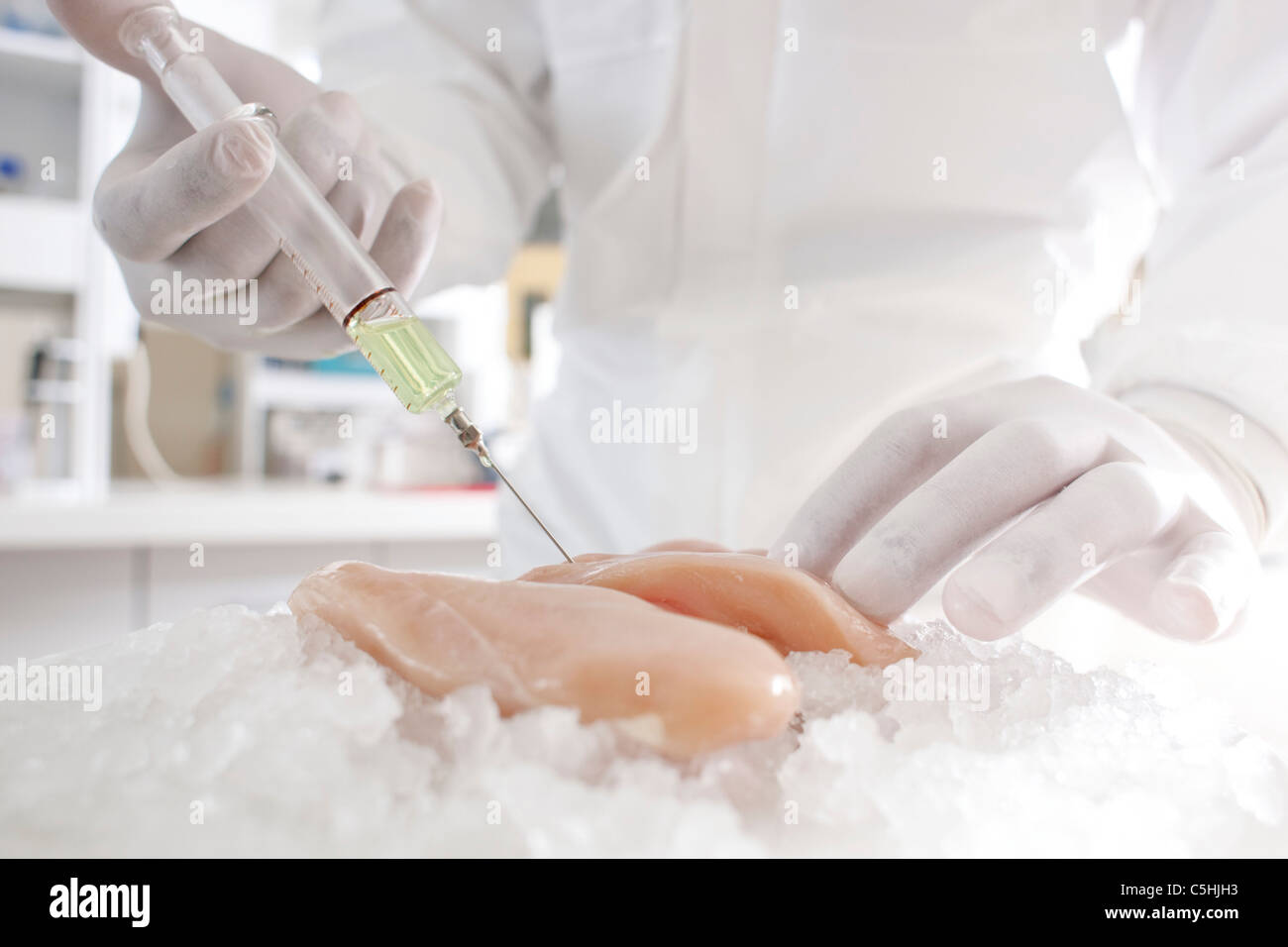 Genetically modified meat Stock Photohttps://www.alamy.com/image-license-details/?v=1https://www.alamy.com/stock-photo-genetically-modified-meat-37881791.html
Genetically modified meat Stock Photohttps://www.alamy.com/image-license-details/?v=1https://www.alamy.com/stock-photo-genetically-modified-meat-37881791.htmlRFC5HJH3–Genetically modified meat
 AST-01-018 - Apollo Soyuz Test Project - Apollo Soyuz Test Project, Earth limb over the Pacific Ocean; Scope and content: The original database describes this as: Description: Apollo Soyuz Test Project (ASTP), View of Earth limb over the Pacific Ocean. Original Film Magazine: CX-06,Laboratory Roll 1; Camera Data: Hasselbald Reflex,70-mm,Model 500EL,NASA Modified; Film Data: 70-mm Ektachrome, MS,Type QX-807,ASA=64, 50mm Lens. Flight Date: July 15-24,1975. Subject Terms: Apollo Soyuz Test Project, Earth limb, Pacific Ocean, Earth Observations (From Space) Categories: Earth Observations Origin Stock Photohttps://www.alamy.com/image-license-details/?v=1https://www.alamy.com/ast-01-018-apollo-soyuz-test-project-apollo-soyuz-test-project-earth-limb-over-the-pacific-ocean-scope-and-content-the-original-database-describes-this-as-description-apollo-soyuz-test-project-astp-view-of-earth-limb-over-the-pacific-ocean-original-film-magazine-cx-06laboratory-roll-1-camera-data-hasselbald-reflex70-mmmodel-500elnasa-modified-film-data-70-mm-ektachrome-mstype-qx-807asa=64-50mm-lens-flight-date-july-15-241975-subject-terms-apollo-soyuz-test-project-earth-limb-pacific-ocean-earth-observations-from-space-categories-earth-observations-origin-image360964323.html
AST-01-018 - Apollo Soyuz Test Project - Apollo Soyuz Test Project, Earth limb over the Pacific Ocean; Scope and content: The original database describes this as: Description: Apollo Soyuz Test Project (ASTP), View of Earth limb over the Pacific Ocean. Original Film Magazine: CX-06,Laboratory Roll 1; Camera Data: Hasselbald Reflex,70-mm,Model 500EL,NASA Modified; Film Data: 70-mm Ektachrome, MS,Type QX-807,ASA=64, 50mm Lens. Flight Date: July 15-24,1975. Subject Terms: Apollo Soyuz Test Project, Earth limb, Pacific Ocean, Earth Observations (From Space) Categories: Earth Observations Origin Stock Photohttps://www.alamy.com/image-license-details/?v=1https://www.alamy.com/ast-01-018-apollo-soyuz-test-project-apollo-soyuz-test-project-earth-limb-over-the-pacific-ocean-scope-and-content-the-original-database-describes-this-as-description-apollo-soyuz-test-project-astp-view-of-earth-limb-over-the-pacific-ocean-original-film-magazine-cx-06laboratory-roll-1-camera-data-hasselbald-reflex70-mmmodel-500elnasa-modified-film-data-70-mm-ektachrome-mstype-qx-807asa=64-50mm-lens-flight-date-july-15-241975-subject-terms-apollo-soyuz-test-project-earth-limb-pacific-ocean-earth-observations-from-space-categories-earth-observations-origin-image360964323.htmlRM2BY79JY–AST-01-018 - Apollo Soyuz Test Project - Apollo Soyuz Test Project, Earth limb over the Pacific Ocean; Scope and content: The original database describes this as: Description: Apollo Soyuz Test Project (ASTP), View of Earth limb over the Pacific Ocean. Original Film Magazine: CX-06,Laboratory Roll 1; Camera Data: Hasselbald Reflex,70-mm,Model 500EL,NASA Modified; Film Data: 70-mm Ektachrome, MS,Type QX-807,ASA=64, 50mm Lens. Flight Date: July 15-24,1975. Subject Terms: Apollo Soyuz Test Project, Earth limb, Pacific Ocean, Earth Observations (From Space) Categories: Earth Observations Origin
 A companion to the United States pharmacopia; . organs of the animal kingdom. In the flowering plants, for instance, there are but three differentparts which are modified to answer various requirements, and all theorgans maybe shown to be derived from one of the threeprimary forms,root, stem, or leaf. As we recognize the same limb in the pectoral fin of the fish, thewing of a bird or bat, the paddle of the whale, the foreleg of a quad-ruped, or the arms of the quadrumana or bimana, so we see the stem inbranch or tendril, rhizome, tuber or bulb, or even in the pulpy mass ofthe strawberry. But w Stock Photohttps://www.alamy.com/image-license-details/?v=1https://www.alamy.com/a-companion-to-the-united-states-pharmacopia-organs-of-the-animal-kingdom-in-the-flowering-plants-for-instance-there-are-but-three-differentparts-which-are-modified-to-answer-various-requirements-and-all-theorgans-maybe-shown-to-be-derived-from-one-of-the-threeprimary-formsroot-stem-or-leaf-as-we-recognize-the-same-limb-in-the-pectoral-fin-of-the-fish-thewing-of-a-bird-or-bat-the-paddle-of-the-whale-the-foreleg-of-a-quad-ruped-or-the-arms-of-the-quadrumana-or-bimana-so-we-see-the-stem-inbranch-or-tendril-rhizome-tuber-or-bulb-or-even-in-the-pulpy-mass-ofthe-strawberry-but-w-image339417656.html
A companion to the United States pharmacopia; . organs of the animal kingdom. In the flowering plants, for instance, there are but three differentparts which are modified to answer various requirements, and all theorgans maybe shown to be derived from one of the threeprimary forms,root, stem, or leaf. As we recognize the same limb in the pectoral fin of the fish, thewing of a bird or bat, the paddle of the whale, the foreleg of a quad-ruped, or the arms of the quadrumana or bimana, so we see the stem inbranch or tendril, rhizome, tuber or bulb, or even in the pulpy mass ofthe strawberry. But w Stock Photohttps://www.alamy.com/image-license-details/?v=1https://www.alamy.com/a-companion-to-the-united-states-pharmacopia-organs-of-the-animal-kingdom-in-the-flowering-plants-for-instance-there-are-but-three-differentparts-which-are-modified-to-answer-various-requirements-and-all-theorgans-maybe-shown-to-be-derived-from-one-of-the-threeprimary-formsroot-stem-or-leaf-as-we-recognize-the-same-limb-in-the-pectoral-fin-of-the-fish-thewing-of-a-bird-or-bat-the-paddle-of-the-whale-the-foreleg-of-a-quad-ruped-or-the-arms-of-the-quadrumana-or-bimana-so-we-see-the-stem-inbranch-or-tendril-rhizome-tuber-or-bulb-or-even-in-the-pulpy-mass-ofthe-strawberry-but-w-image339417656.htmlRM2AM5PK4–A companion to the United States pharmacopia; . organs of the animal kingdom. In the flowering plants, for instance, there are but three differentparts which are modified to answer various requirements, and all theorgans maybe shown to be derived from one of the threeprimary forms,root, stem, or leaf. As we recognize the same limb in the pectoral fin of the fish, thewing of a bird or bat, the paddle of the whale, the foreleg of a quad-ruped, or the arms of the quadrumana or bimana, so we see the stem inbranch or tendril, rhizome, tuber or bulb, or even in the pulpy mass ofthe strawberry. But w
 Genetically modified meat Stock Photohttps://www.alamy.com/image-license-details/?v=1https://www.alamy.com/stock-photo-genetically-modified-meat-37881782.html
Genetically modified meat Stock Photohttps://www.alamy.com/image-license-details/?v=1https://www.alamy.com/stock-photo-genetically-modified-meat-37881782.htmlRFC5HJGP–Genetically modified meat
 AST-30-2581 - Apollo Soyuz Test Project - Apollo Soyuz Test Project, Earth Limb, At Sunrise; Scope and content: The original database describes this as: Description: Apollo Soyuz Test Project (ASTP),Earth Limb,At Sunrise. Image taken on Revolution 76. Greenwich Mean Time (GMT) of Photo 201:19:07,Ground Elapsed Time (GET) 119:17,Altitude 230 km. Original Film Magazine: CX-14, Laboratory Roll 30; Camera Data: Hasselblad Reflex,70-mm,Model 500EL,NASA Modified; Film Data: 70-mm Ektachrome,MS,Type QX-807,ASA = 64,Lens 50mm. Subject Terms: Apollo Soyuz Test Project, Earth Observations (From Space), Stock Photohttps://www.alamy.com/image-license-details/?v=1https://www.alamy.com/ast-30-2581-apollo-soyuz-test-project-apollo-soyuz-test-project-earth-limb-at-sunrise-scope-and-content-the-original-database-describes-this-as-description-apollo-soyuz-test-project-astpearth-limbat-sunrise-image-taken-on-revolution-76-greenwich-mean-time-gmt-of-photo-2011907ground-elapsed-time-get-11917altitude-230-km-original-film-magazine-cx-14-laboratory-roll-30-camera-data-hasselblad-reflex70-mmmodel-500elnasa-modified-film-data-70-mm-ektachromemstype-qx-807asa-=-64lens-50mm-subject-terms-apollo-soyuz-test-project-earth-observations-from-space-image360969260.html
AST-30-2581 - Apollo Soyuz Test Project - Apollo Soyuz Test Project, Earth Limb, At Sunrise; Scope and content: The original database describes this as: Description: Apollo Soyuz Test Project (ASTP),Earth Limb,At Sunrise. Image taken on Revolution 76. Greenwich Mean Time (GMT) of Photo 201:19:07,Ground Elapsed Time (GET) 119:17,Altitude 230 km. Original Film Magazine: CX-14, Laboratory Roll 30; Camera Data: Hasselblad Reflex,70-mm,Model 500EL,NASA Modified; Film Data: 70-mm Ektachrome,MS,Type QX-807,ASA = 64,Lens 50mm. Subject Terms: Apollo Soyuz Test Project, Earth Observations (From Space), Stock Photohttps://www.alamy.com/image-license-details/?v=1https://www.alamy.com/ast-30-2581-apollo-soyuz-test-project-apollo-soyuz-test-project-earth-limb-at-sunrise-scope-and-content-the-original-database-describes-this-as-description-apollo-soyuz-test-project-astpearth-limbat-sunrise-image-taken-on-revolution-76-greenwich-mean-time-gmt-of-photo-2011907ground-elapsed-time-get-11917altitude-230-km-original-film-magazine-cx-14-laboratory-roll-30-camera-data-hasselblad-reflex70-mmmodel-500elnasa-modified-film-data-70-mm-ektachromemstype-qx-807asa-=-64lens-50mm-subject-terms-apollo-soyuz-test-project-earth-observations-from-space-image360969260.htmlRM2BY7FY8–AST-30-2581 - Apollo Soyuz Test Project - Apollo Soyuz Test Project, Earth Limb, At Sunrise; Scope and content: The original database describes this as: Description: Apollo Soyuz Test Project (ASTP),Earth Limb,At Sunrise. Image taken on Revolution 76. Greenwich Mean Time (GMT) of Photo 201:19:07,Ground Elapsed Time (GET) 119:17,Altitude 230 km. Original Film Magazine: CX-14, Laboratory Roll 30; Camera Data: Hasselblad Reflex,70-mm,Model 500EL,NASA Modified; Film Data: 70-mm Ektachrome,MS,Type QX-807,ASA = 64,Lens 50mm. Subject Terms: Apollo Soyuz Test Project, Earth Observations (From Space),
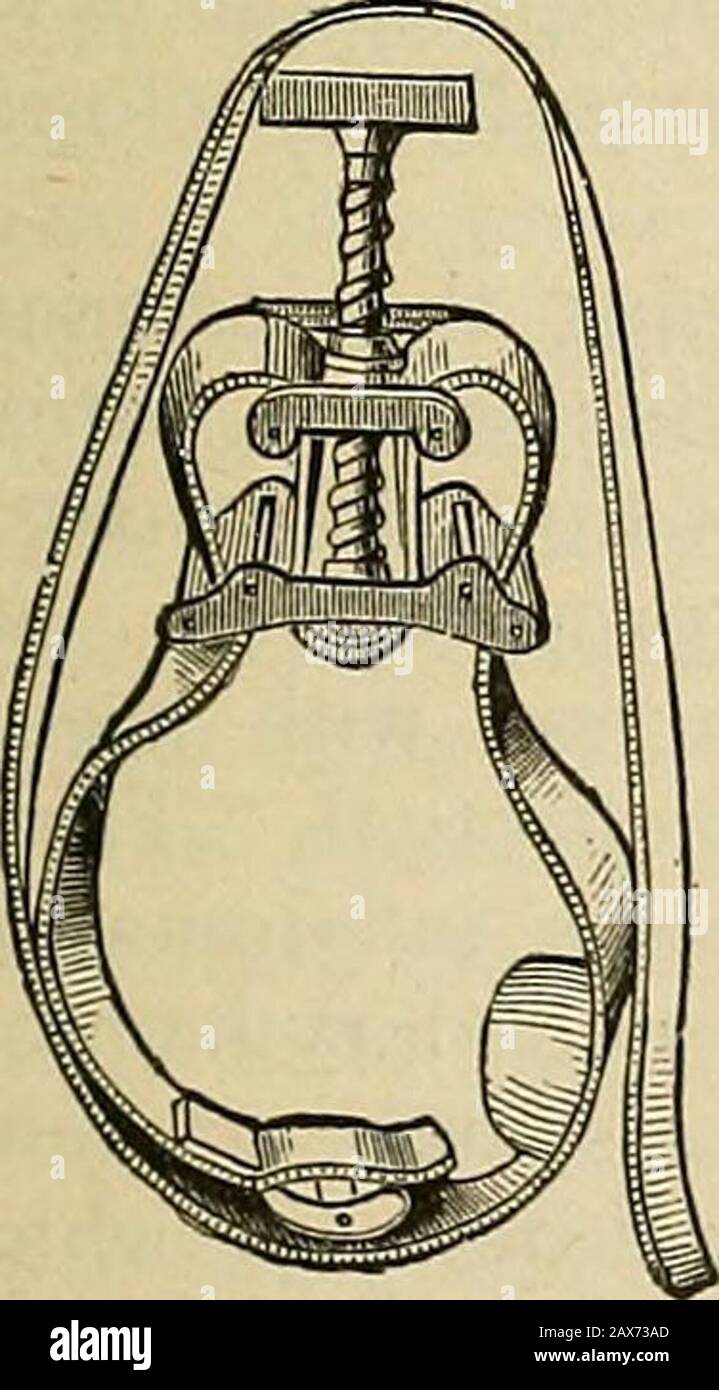 Surgery; its theory and practice . Spencer Wells pressure-forceps, modified by Morrant Baker. the latter situation with the finger or the tourniquet, the pressurebeing then made in such a direction as to press the artery againstsome resisting structure, as a point of bone. The tourniquetsemployed are various (Fig. 31 and Fig. 32). The rubber tubeof the Esmarchs apparatus perhaps answers the best. An im-promptu tourniquet may be made by tying a pocket-handkerchiefloosely round the limb, and twisting it up tightly with a walking- FlG. 31. Fig. 32.. Stock Photohttps://www.alamy.com/image-license-details/?v=1https://www.alamy.com/surgery-its-theory-and-practice-spencer-wells-pressure-forceps-modified-by-morrant-baker-the-latter-situation-with-the-finger-or-the-tourniquet-the-pressurebeing-then-made-in-such-a-direction-as-to-press-the-artery-againstsome-resisting-structure-as-a-point-of-bone-the-tourniquetsemployed-are-various-fig-31-and-fig-32-the-rubber-tubeof-the-esmarchs-apparatus-perhaps-answers-the-best-an-im-promptu-tourniquet-may-be-made-by-tying-a-pocket-handkerchiefloosely-round-the-limb-and-twisting-it-up-tightly-with-a-walking-flg-31-fig-32-image343134357.html
Surgery; its theory and practice . Spencer Wells pressure-forceps, modified by Morrant Baker. the latter situation with the finger or the tourniquet, the pressurebeing then made in such a direction as to press the artery againstsome resisting structure, as a point of bone. The tourniquetsemployed are various (Fig. 31 and Fig. 32). The rubber tubeof the Esmarchs apparatus perhaps answers the best. An im-promptu tourniquet may be made by tying a pocket-handkerchiefloosely round the limb, and twisting it up tightly with a walking- FlG. 31. Fig. 32.. Stock Photohttps://www.alamy.com/image-license-details/?v=1https://www.alamy.com/surgery-its-theory-and-practice-spencer-wells-pressure-forceps-modified-by-morrant-baker-the-latter-situation-with-the-finger-or-the-tourniquet-the-pressurebeing-then-made-in-such-a-direction-as-to-press-the-artery-againstsome-resisting-structure-as-a-point-of-bone-the-tourniquetsemployed-are-various-fig-31-and-fig-32-the-rubber-tubeof-the-esmarchs-apparatus-perhaps-answers-the-best-an-im-promptu-tourniquet-may-be-made-by-tying-a-pocket-handkerchiefloosely-round-the-limb-and-twisting-it-up-tightly-with-a-walking-flg-31-fig-32-image343134357.htmlRM2AX73AD–Surgery; its theory and practice . Spencer Wells pressure-forceps, modified by Morrant Baker. the latter situation with the finger or the tourniquet, the pressurebeing then made in such a direction as to press the artery againstsome resisting structure, as a point of bone. The tourniquetsemployed are various (Fig. 31 and Fig. 32). The rubber tubeof the Esmarchs apparatus perhaps answers the best. An im-promptu tourniquet may be made by tying a pocket-handkerchiefloosely round the limb, and twisting it up tightly with a walking- FlG. 31. Fig. 32..
 AST-30-2584 - Apollo Soyuz Test Project - Apollo Soyuz Test Project, Earth Limb, At Sunrise; Scope and content: The original database describes this as: Description: Apollo Soyuz Test Project (ASTP),Earth Limb,At Sunrise. Image taken on Revolution 76. Greenwich Mean Time (GMT) of Photo 201:19:08,Ground Elapsed Time (GET) 119:18,Altitude 230 km. Original Film Magazine: CX-14,Laboratory Roll 30; Camera Data: Hasselblad Reflex,70-mm,Model 500EL,NASA Modified; Film Data: 70-mm Ektachrome,MS,Type QX-807,ASA = 64,Lens 50mm. Subject Terms: Apollo Soyuz Test Project, Earth Observations (From Space), Stock Photohttps://www.alamy.com/image-license-details/?v=1https://www.alamy.com/ast-30-2584-apollo-soyuz-test-project-apollo-soyuz-test-project-earth-limb-at-sunrise-scope-and-content-the-original-database-describes-this-as-description-apollo-soyuz-test-project-astpearth-limbat-sunrise-image-taken-on-revolution-76-greenwich-mean-time-gmt-of-photo-2011908ground-elapsed-time-get-11918altitude-230-km-original-film-magazine-cx-14laboratory-roll-30-camera-data-hasselblad-reflex70-mmmodel-500elnasa-modified-film-data-70-mm-ektachromemstype-qx-807asa-=-64lens-50mm-subject-terms-apollo-soyuz-test-project-earth-observations-from-space-image360964620.html
AST-30-2584 - Apollo Soyuz Test Project - Apollo Soyuz Test Project, Earth Limb, At Sunrise; Scope and content: The original database describes this as: Description: Apollo Soyuz Test Project (ASTP),Earth Limb,At Sunrise. Image taken on Revolution 76. Greenwich Mean Time (GMT) of Photo 201:19:08,Ground Elapsed Time (GET) 119:18,Altitude 230 km. Original Film Magazine: CX-14,Laboratory Roll 30; Camera Data: Hasselblad Reflex,70-mm,Model 500EL,NASA Modified; Film Data: 70-mm Ektachrome,MS,Type QX-807,ASA = 64,Lens 50mm. Subject Terms: Apollo Soyuz Test Project, Earth Observations (From Space), Stock Photohttps://www.alamy.com/image-license-details/?v=1https://www.alamy.com/ast-30-2584-apollo-soyuz-test-project-apollo-soyuz-test-project-earth-limb-at-sunrise-scope-and-content-the-original-database-describes-this-as-description-apollo-soyuz-test-project-astpearth-limbat-sunrise-image-taken-on-revolution-76-greenwich-mean-time-gmt-of-photo-2011908ground-elapsed-time-get-11918altitude-230-km-original-film-magazine-cx-14laboratory-roll-30-camera-data-hasselblad-reflex70-mmmodel-500elnasa-modified-film-data-70-mm-ektachromemstype-qx-807asa-=-64lens-50mm-subject-terms-apollo-soyuz-test-project-earth-observations-from-space-image360964620.htmlRM2BY7A1G–AST-30-2584 - Apollo Soyuz Test Project - Apollo Soyuz Test Project, Earth Limb, At Sunrise; Scope and content: The original database describes this as: Description: Apollo Soyuz Test Project (ASTP),Earth Limb,At Sunrise. Image taken on Revolution 76. Greenwich Mean Time (GMT) of Photo 201:19:08,Ground Elapsed Time (GET) 119:18,Altitude 230 km. Original Film Magazine: CX-14,Laboratory Roll 30; Camera Data: Hasselblad Reflex,70-mm,Model 500EL,NASA Modified; Film Data: 70-mm Ektachrome,MS,Type QX-807,ASA = 64,Lens 50mm. Subject Terms: Apollo Soyuz Test Project, Earth Observations (From Space),
 The therapeutical applications of hydrozone and glycozone . Fig. 19.—The Patent Splint AdjustiveHigh Shoe, and Crutch. Fig. 20. -Inside Bar and LateralTraction-lever. side view, limbs parallel.) Then as flexion commences the action of every muscle ischanged or modified (see Fig, 16), and the limb must assume the position of the thirdstage of hip-joint disease, viz., flexion, abduction, inward rotation. Conclusions.—Normal or typical deformities are produced by change of leverageand action of muscles due to—1. A voluntary effort. 2. Involuntary spasm or con-traption of muscles. 3. Nervous irrit Stock Photohttps://www.alamy.com/image-license-details/?v=1https://www.alamy.com/the-therapeutical-applications-of-hydrozone-and-glycozone-fig-19the-patent-splint-adjustivehigh-shoe-and-crutch-fig-20-inside-bar-and-lateraltraction-lever-side-view-limbs-parallel-then-as-flexion-commences-the-action-of-every-muscle-ischanged-or-modified-see-fig-16-and-the-limb-must-assume-the-position-of-the-thirdstage-of-hip-joint-disease-viz-flexion-abduction-inward-rotation-conclusionsnormal-or-typical-deformities-are-produced-by-change-of-leverageand-action-of-muscles-due-to1-a-voluntary-effort-2-involuntary-spasm-or-con-traption-of-muscles-3-nervous-irrit-image338193299.html
The therapeutical applications of hydrozone and glycozone . Fig. 19.—The Patent Splint AdjustiveHigh Shoe, and Crutch. Fig. 20. -Inside Bar and LateralTraction-lever. side view, limbs parallel.) Then as flexion commences the action of every muscle ischanged or modified (see Fig, 16), and the limb must assume the position of the thirdstage of hip-joint disease, viz., flexion, abduction, inward rotation. Conclusions.—Normal or typical deformities are produced by change of leverageand action of muscles due to—1. A voluntary effort. 2. Involuntary spasm or con-traption of muscles. 3. Nervous irrit Stock Photohttps://www.alamy.com/image-license-details/?v=1https://www.alamy.com/the-therapeutical-applications-of-hydrozone-and-glycozone-fig-19the-patent-splint-adjustivehigh-shoe-and-crutch-fig-20-inside-bar-and-lateraltraction-lever-side-view-limbs-parallel-then-as-flexion-commences-the-action-of-every-muscle-ischanged-or-modified-see-fig-16-and-the-limb-must-assume-the-position-of-the-thirdstage-of-hip-joint-disease-viz-flexion-abduction-inward-rotation-conclusionsnormal-or-typical-deformities-are-produced-by-change-of-leverageand-action-of-muscles-due-to1-a-voluntary-effort-2-involuntary-spasm-or-con-traption-of-muscles-3-nervous-irrit-image338193299.htmlRM2AJ6103–The therapeutical applications of hydrozone and glycozone . Fig. 19.—The Patent Splint AdjustiveHigh Shoe, and Crutch. Fig. 20. -Inside Bar and LateralTraction-lever. side view, limbs parallel.) Then as flexion commences the action of every muscle ischanged or modified (see Fig, 16), and the limb must assume the position of the thirdstage of hip-joint disease, viz., flexion, abduction, inward rotation. Conclusions.—Normal or typical deformities are produced by change of leverageand action of muscles due to—1. A voluntary effort. 2. Involuntary spasm or con-traption of muscles. 3. Nervous irrit
 AST-01-019 - Apollo Soyuz Test Project - Apollo Soyuz Test Project, Earth limb over Canada; Scope and content: The original database describes this as: Description: Apollo Soyuz Test Project (ASTP), View of Earth limb over Canada, Manitoba, Lake Winnipeg,Red River, Assiniboine River. Image taken on Revolution 4, Greenwich Mean Time (GMT) Time of Photo 197:02:01, Ground Elapsed Time (GET) 6:11, Altitude 228 km. Original Film Magazine: CX-06,Laboratory Roll 1; Camera Data: Hasselbald Reflex,70-mm,Model 500EL,NASA Modified; Film Data: 70-mm Ektachrome,MS,Type QX-807,ASA=64, 50mm Lens. Subject T Stock Photohttps://www.alamy.com/image-license-details/?v=1https://www.alamy.com/ast-01-019-apollo-soyuz-test-project-apollo-soyuz-test-project-earth-limb-over-canada-scope-and-content-the-original-database-describes-this-as-description-apollo-soyuz-test-project-astp-view-of-earth-limb-over-canada-manitoba-lake-winnipegred-river-assiniboine-river-image-taken-on-revolution-4-greenwich-mean-time-gmt-time-of-photo-1970201-ground-elapsed-time-get-611-altitude-228-km-original-film-magazine-cx-06laboratory-roll-1-camera-data-hasselbald-reflex70-mmmodel-500elnasa-modified-film-data-70-mm-ektachromemstype-qx-807asa=64-50mm-lens-subject-t-image360962634.html
AST-01-019 - Apollo Soyuz Test Project - Apollo Soyuz Test Project, Earth limb over Canada; Scope and content: The original database describes this as: Description: Apollo Soyuz Test Project (ASTP), View of Earth limb over Canada, Manitoba, Lake Winnipeg,Red River, Assiniboine River. Image taken on Revolution 4, Greenwich Mean Time (GMT) Time of Photo 197:02:01, Ground Elapsed Time (GET) 6:11, Altitude 228 km. Original Film Magazine: CX-06,Laboratory Roll 1; Camera Data: Hasselbald Reflex,70-mm,Model 500EL,NASA Modified; Film Data: 70-mm Ektachrome,MS,Type QX-807,ASA=64, 50mm Lens. Subject T Stock Photohttps://www.alamy.com/image-license-details/?v=1https://www.alamy.com/ast-01-019-apollo-soyuz-test-project-apollo-soyuz-test-project-earth-limb-over-canada-scope-and-content-the-original-database-describes-this-as-description-apollo-soyuz-test-project-astp-view-of-earth-limb-over-canada-manitoba-lake-winnipegred-river-assiniboine-river-image-taken-on-revolution-4-greenwich-mean-time-gmt-time-of-photo-1970201-ground-elapsed-time-get-611-altitude-228-km-original-film-magazine-cx-06laboratory-roll-1-camera-data-hasselbald-reflex70-mmmodel-500elnasa-modified-film-data-70-mm-ektachromemstype-qx-807asa=64-50mm-lens-subject-t-image360962634.htmlRM2BY77EJ–AST-01-019 - Apollo Soyuz Test Project - Apollo Soyuz Test Project, Earth limb over Canada; Scope and content: The original database describes this as: Description: Apollo Soyuz Test Project (ASTP), View of Earth limb over Canada, Manitoba, Lake Winnipeg,Red River, Assiniboine River. Image taken on Revolution 4, Greenwich Mean Time (GMT) Time of Photo 197:02:01, Ground Elapsed Time (GET) 6:11, Altitude 228 km. Original Film Magazine: CX-06,Laboratory Roll 1; Camera Data: Hasselbald Reflex,70-mm,Model 500EL,NASA Modified; Film Data: 70-mm Ektachrome,MS,Type QX-807,ASA=64, 50mm Lens. Subject T
 . Operative surgery. ^ The Oval or Racket Method.—The oval or racketmethod is in reality a modified circular amputation, theflap being slit up at one side and the angles trimmedoff (Fig. 479). This flap is employed principally indisarticulations, and will be described in connection withthose operations. Oval-shaped flaps may be either uni-lateral, bilateral, anterior, or posterior. The Single-flap Method.—The single flap is suitedto those cases where the tissues of one side of a limb only are availablefor the purposes of a flap, as in the case of unilateral lacerations, ulcera-. PiG. 479.—Rack Stock Photohttps://www.alamy.com/image-license-details/?v=1https://www.alamy.com/operative-surgery-the-oval-or-racket-methodthe-oval-or-racketmethod-is-in-reality-a-modified-circular-amputation-theflap-being-slit-up-at-one-side-and-the-angles-trimmedoff-fig-479-this-flap-is-employed-principally-indisarticulations-and-will-be-described-in-connection-withthose-operations-oval-shaped-flaps-may-be-either-uni-lateral-bilateral-anterior-or-posterior-the-single-flap-methodthe-single-flap-is-suitedto-those-cases-where-the-tissues-of-one-side-of-a-limb-only-are-availablefor-the-purposes-of-a-flap-as-in-the-case-of-unilateral-lacerations-ulcera-pig-479rack-image337142451.html
. Operative surgery. ^ The Oval or Racket Method.—The oval or racketmethod is in reality a modified circular amputation, theflap being slit up at one side and the angles trimmedoff (Fig. 479). This flap is employed principally indisarticulations, and will be described in connection withthose operations. Oval-shaped flaps may be either uni-lateral, bilateral, anterior, or posterior. The Single-flap Method.—The single flap is suitedto those cases where the tissues of one side of a limb only are availablefor the purposes of a flap, as in the case of unilateral lacerations, ulcera-. PiG. 479.—Rack Stock Photohttps://www.alamy.com/image-license-details/?v=1https://www.alamy.com/operative-surgery-the-oval-or-racket-methodthe-oval-or-racketmethod-is-in-reality-a-modified-circular-amputation-theflap-being-slit-up-at-one-side-and-the-angles-trimmedoff-fig-479-this-flap-is-employed-principally-indisarticulations-and-will-be-described-in-connection-withthose-operations-oval-shaped-flaps-may-be-either-uni-lateral-bilateral-anterior-or-posterior-the-single-flap-methodthe-single-flap-is-suitedto-those-cases-where-the-tissues-of-one-side-of-a-limb-only-are-availablefor-the-purposes-of-a-flap-as-in-the-case-of-unilateral-lacerations-ulcera-pig-479rack-image337142451.htmlRM2AGE4HR–. Operative surgery. ^ The Oval or Racket Method.—The oval or racketmethod is in reality a modified circular amputation, theflap being slit up at one side and the angles trimmedoff (Fig. 479). This flap is employed principally indisarticulations, and will be described in connection withthose operations. Oval-shaped flaps may be either uni-lateral, bilateral, anterior, or posterior. The Single-flap Method.—The single flap is suitedto those cases where the tissues of one side of a limb only are availablefor the purposes of a flap, as in the case of unilateral lacerations, ulcera-. PiG. 479.—Rack
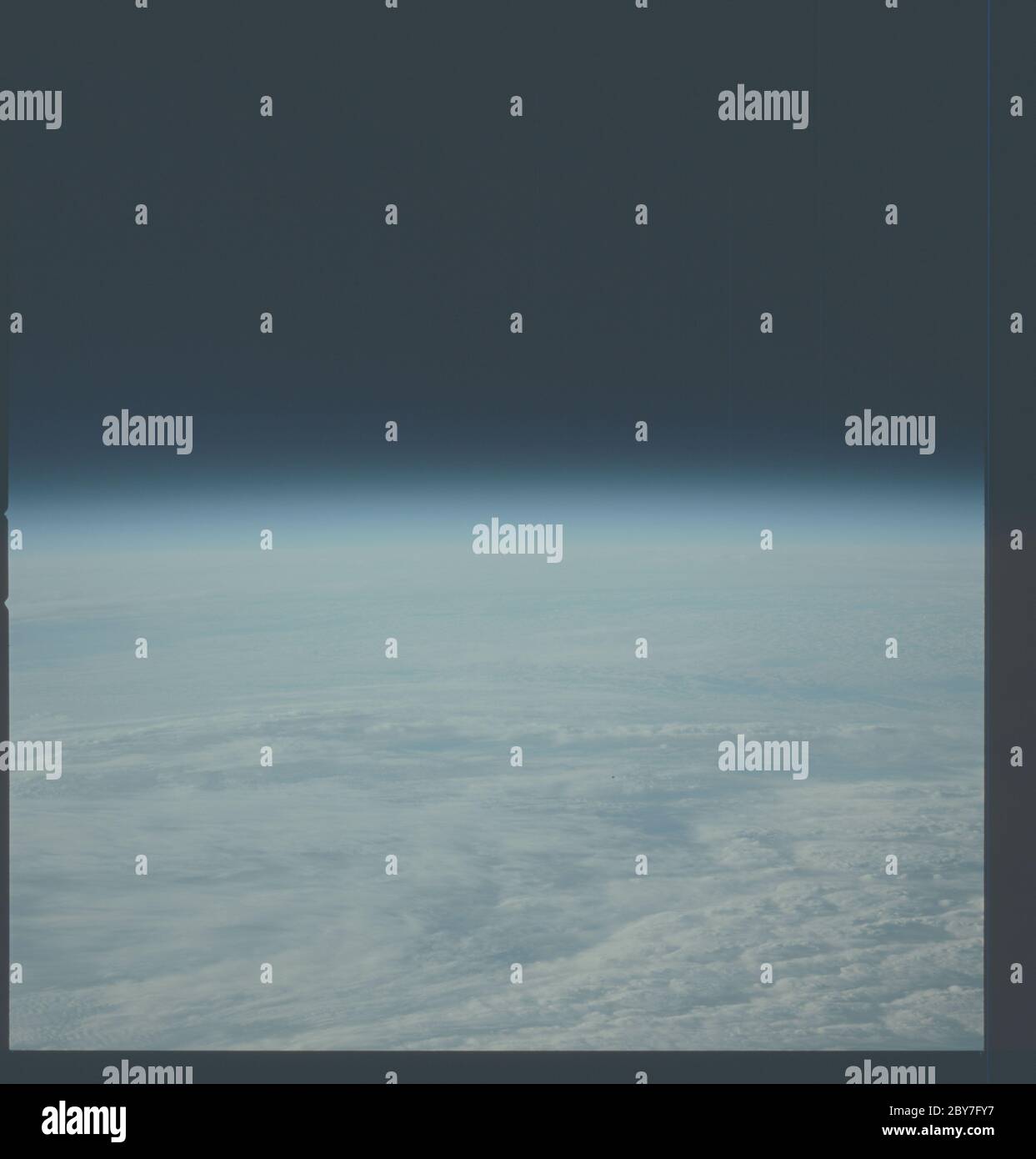 AST-01-022 - Apollo Soyuz Test Project - Apollo Soyuz Test Project, Earth limb; Scope and content: The original database describes this as: Description: Apollo Soyuz Test Project (ASTP), View of Earth limb with clouds, looking South from 150 degrees East. Image taken on Revolution 17, Greenwich Mean Time (GMT) Time of Photo 197:21:57, Ground Elapsed Time (GET) 26:07, Altitude 189 km. Original Film Magazine: CX-06,Laboratory Roll 1; Camera Data: Hasselbald Reflex,70-mm,Model 500EL,NASA Modified; Film Data: 70-mm Ektachrome,MS,Type QX-807,ASA=64, 250mm Lens. Subject Terms: Apollo Soyuz Test Pr Stock Photohttps://www.alamy.com/image-license-details/?v=1https://www.alamy.com/ast-01-022-apollo-soyuz-test-project-apollo-soyuz-test-project-earth-limb-scope-and-content-the-original-database-describes-this-as-description-apollo-soyuz-test-project-astp-view-of-earth-limb-with-clouds-looking-south-from-150-degrees-east-image-taken-on-revolution-17-greenwich-mean-time-gmt-time-of-photo-1972157-ground-elapsed-time-get-2607-altitude-189-km-original-film-magazine-cx-06laboratory-roll-1-camera-data-hasselbald-reflex70-mmmodel-500elnasa-modified-film-data-70-mm-ektachromemstype-qx-807asa=64-250mm-lens-subject-terms-apollo-soyuz-test-pr-image360969259.html
AST-01-022 - Apollo Soyuz Test Project - Apollo Soyuz Test Project, Earth limb; Scope and content: The original database describes this as: Description: Apollo Soyuz Test Project (ASTP), View of Earth limb with clouds, looking South from 150 degrees East. Image taken on Revolution 17, Greenwich Mean Time (GMT) Time of Photo 197:21:57, Ground Elapsed Time (GET) 26:07, Altitude 189 km. Original Film Magazine: CX-06,Laboratory Roll 1; Camera Data: Hasselbald Reflex,70-mm,Model 500EL,NASA Modified; Film Data: 70-mm Ektachrome,MS,Type QX-807,ASA=64, 250mm Lens. Subject Terms: Apollo Soyuz Test Pr Stock Photohttps://www.alamy.com/image-license-details/?v=1https://www.alamy.com/ast-01-022-apollo-soyuz-test-project-apollo-soyuz-test-project-earth-limb-scope-and-content-the-original-database-describes-this-as-description-apollo-soyuz-test-project-astp-view-of-earth-limb-with-clouds-looking-south-from-150-degrees-east-image-taken-on-revolution-17-greenwich-mean-time-gmt-time-of-photo-1972157-ground-elapsed-time-get-2607-altitude-189-km-original-film-magazine-cx-06laboratory-roll-1-camera-data-hasselbald-reflex70-mmmodel-500elnasa-modified-film-data-70-mm-ektachromemstype-qx-807asa=64-250mm-lens-subject-terms-apollo-soyuz-test-pr-image360969259.htmlRM2BY7FY7–AST-01-022 - Apollo Soyuz Test Project - Apollo Soyuz Test Project, Earth limb; Scope and content: The original database describes this as: Description: Apollo Soyuz Test Project (ASTP), View of Earth limb with clouds, looking South from 150 degrees East. Image taken on Revolution 17, Greenwich Mean Time (GMT) Time of Photo 197:21:57, Ground Elapsed Time (GET) 26:07, Altitude 189 km. Original Film Magazine: CX-06,Laboratory Roll 1; Camera Data: Hasselbald Reflex,70-mm,Model 500EL,NASA Modified; Film Data: 70-mm Ektachrome,MS,Type QX-807,ASA=64, 250mm Lens. Subject Terms: Apollo Soyuz Test Pr
 A treatise on orthopedic surgery . Fig. 378.. Unilateral dislocation. Twoyears after operation in 1897 bythe Lorenz methiod. A completecure. Unilateral dislocation. Eighteen months-after operation by the Lorenz method in1897. A complete cure. gins to walk. The treatment of selection is the functionalweighting method of Lorenz, modified somewhat in certaincases in that the limb may be placed with advantage in thatposition which best assures stability. In his last communica-tion, 1909, from an experience in more than 1000 cases Lorenzstates that he has made no essential change in the operation. Stock Photohttps://www.alamy.com/image-license-details/?v=1https://www.alamy.com/a-treatise-on-orthopedic-surgery-fig-378-unilateral-dislocation-twoyears-after-operation-in-1897-bythe-lorenz-methiod-a-completecure-unilateral-dislocation-eighteen-months-after-operation-by-the-lorenz-method-in1897-a-complete-cure-gins-to-walk-the-treatment-of-selection-is-the-functionalweighting-method-of-lorenz-modified-somewhat-in-certaincases-in-that-the-limb-may-be-placed-with-advantage-in-thatposition-which-best-assures-stability-in-his-last-communica-tion-1909-from-an-experience-in-more-than-1000-cases-lorenzstates-that-he-has-made-no-essential-change-in-the-operation-image338292711.html
A treatise on orthopedic surgery . Fig. 378.. Unilateral dislocation. Twoyears after operation in 1897 bythe Lorenz methiod. A completecure. Unilateral dislocation. Eighteen months-after operation by the Lorenz method in1897. A complete cure. gins to walk. The treatment of selection is the functionalweighting method of Lorenz, modified somewhat in certaincases in that the limb may be placed with advantage in thatposition which best assures stability. In his last communica-tion, 1909, from an experience in more than 1000 cases Lorenzstates that he has made no essential change in the operation. Stock Photohttps://www.alamy.com/image-license-details/?v=1https://www.alamy.com/a-treatise-on-orthopedic-surgery-fig-378-unilateral-dislocation-twoyears-after-operation-in-1897-bythe-lorenz-methiod-a-completecure-unilateral-dislocation-eighteen-months-after-operation-by-the-lorenz-method-in1897-a-complete-cure-gins-to-walk-the-treatment-of-selection-is-the-functionalweighting-method-of-lorenz-modified-somewhat-in-certaincases-in-that-the-limb-may-be-placed-with-advantage-in-thatposition-which-best-assures-stability-in-his-last-communica-tion-1909-from-an-experience-in-more-than-1000-cases-lorenzstates-that-he-has-made-no-essential-change-in-the-operation-image338292711.htmlRM2AJAFPF–A treatise on orthopedic surgery . Fig. 378.. Unilateral dislocation. Twoyears after operation in 1897 bythe Lorenz methiod. A completecure. Unilateral dislocation. Eighteen months-after operation by the Lorenz method in1897. A complete cure. gins to walk. The treatment of selection is the functionalweighting method of Lorenz, modified somewhat in certaincases in that the limb may be placed with advantage in thatposition which best assures stability. In his last communica-tion, 1909, from an experience in more than 1000 cases Lorenzstates that he has made no essential change in the operation.
 AST-27-2335 - Apollo Soyuz Test Project - Apollo Soyuz Test Project, Earth Limb, Banding at Sunrise; Scope and content: The original database describes this as: Description: Apollo Soyuz Test Project (ASTP),Earth Limb,Banding at Sunrise. Image taken on Revolution 72. Greenwich Mean Time (GMT) of Photo 201:11:46,Ground Elapsed Time (GET) 111:56,Altitude 230 km. Original Film Magazine: CX-08,Laboratory Roll 27; Camera Data: Hasselblad Reflex,70-mm,Model 500EL,NASA Modified; Film Data: 70-mm Ektachrome,MS,Type QX-807,ASA = 64,Lens 50mm. Subject Terms: Apollo Soyuz Test Project, Earth Observation Stock Photohttps://www.alamy.com/image-license-details/?v=1https://www.alamy.com/ast-27-2335-apollo-soyuz-test-project-apollo-soyuz-test-project-earth-limb-banding-at-sunrise-scope-and-content-the-original-database-describes-this-as-description-apollo-soyuz-test-project-astpearth-limbbanding-at-sunrise-image-taken-on-revolution-72-greenwich-mean-time-gmt-of-photo-2011146ground-elapsed-time-get-11156altitude-230-km-original-film-magazine-cx-08laboratory-roll-27-camera-data-hasselblad-reflex70-mmmodel-500elnasa-modified-film-data-70-mm-ektachromemstype-qx-807asa-=-64lens-50mm-subject-terms-apollo-soyuz-test-project-earth-observation-image360965477.html
AST-27-2335 - Apollo Soyuz Test Project - Apollo Soyuz Test Project, Earth Limb, Banding at Sunrise; Scope and content: The original database describes this as: Description: Apollo Soyuz Test Project (ASTP),Earth Limb,Banding at Sunrise. Image taken on Revolution 72. Greenwich Mean Time (GMT) of Photo 201:11:46,Ground Elapsed Time (GET) 111:56,Altitude 230 km. Original Film Magazine: CX-08,Laboratory Roll 27; Camera Data: Hasselblad Reflex,70-mm,Model 500EL,NASA Modified; Film Data: 70-mm Ektachrome,MS,Type QX-807,ASA = 64,Lens 50mm. Subject Terms: Apollo Soyuz Test Project, Earth Observation Stock Photohttps://www.alamy.com/image-license-details/?v=1https://www.alamy.com/ast-27-2335-apollo-soyuz-test-project-apollo-soyuz-test-project-earth-limb-banding-at-sunrise-scope-and-content-the-original-database-describes-this-as-description-apollo-soyuz-test-project-astpearth-limbbanding-at-sunrise-image-taken-on-revolution-72-greenwich-mean-time-gmt-of-photo-2011146ground-elapsed-time-get-11156altitude-230-km-original-film-magazine-cx-08laboratory-roll-27-camera-data-hasselblad-reflex70-mmmodel-500elnasa-modified-film-data-70-mm-ektachromemstype-qx-807asa-=-64lens-50mm-subject-terms-apollo-soyuz-test-project-earth-observation-image360965477.htmlRM2BY7B45–AST-27-2335 - Apollo Soyuz Test Project - Apollo Soyuz Test Project, Earth Limb, Banding at Sunrise; Scope and content: The original database describes this as: Description: Apollo Soyuz Test Project (ASTP),Earth Limb,Banding at Sunrise. Image taken on Revolution 72. Greenwich Mean Time (GMT) of Photo 201:11:46,Ground Elapsed Time (GET) 111:56,Altitude 230 km. Original Film Magazine: CX-08,Laboratory Roll 27; Camera Data: Hasselblad Reflex,70-mm,Model 500EL,NASA Modified; Film Data: 70-mm Ektachrome,MS,Type QX-807,ASA = 64,Lens 50mm. Subject Terms: Apollo Soyuz Test Project, Earth Observation
 The operating room and the patient; a manual of pre- and post-operative treatment . ecompletely relaxed. A plaster cast is then applied. In elderlypatients the head of the bed is raised one or two feet; this lessensthe danger of hypostatic pulmonary congestion and serves toincrease the blood supply at the seat of injury. Repair is slowand weight must not be borne upon the limb for many months.The course of bone healing should be observed by a series ofX-ray plates. After six or eight weeks the cast may be removedand a modified hip splint substituted. In the course of theafter-treatment massage Stock Photohttps://www.alamy.com/image-license-details/?v=1https://www.alamy.com/the-operating-room-and-the-patient-a-manual-of-pre-and-post-operative-treatment-ecompletely-relaxed-a-plaster-cast-is-then-applied-in-elderlypatients-the-head-of-the-bed-is-raised-one-or-two-feet-this-lessensthe-danger-of-hypostatic-pulmonary-congestion-and-serves-toincrease-the-blood-supply-at-the-seat-of-injury-repair-is-slowand-weight-must-not-be-borne-upon-the-limb-for-many-monthsthe-course-of-bone-healing-should-be-observed-by-a-series-ofx-ray-plates-after-six-or-eight-weeks-the-cast-may-be-removedand-a-modified-hip-splint-substituted-in-the-course-of-theafter-treatment-massage-image342669345.html
The operating room and the patient; a manual of pre- and post-operative treatment . ecompletely relaxed. A plaster cast is then applied. In elderlypatients the head of the bed is raised one or two feet; this lessensthe danger of hypostatic pulmonary congestion and serves toincrease the blood supply at the seat of injury. Repair is slowand weight must not be borne upon the limb for many months.The course of bone healing should be observed by a series ofX-ray plates. After six or eight weeks the cast may be removedand a modified hip splint substituted. In the course of theafter-treatment massage Stock Photohttps://www.alamy.com/image-license-details/?v=1https://www.alamy.com/the-operating-room-and-the-patient-a-manual-of-pre-and-post-operative-treatment-ecompletely-relaxed-a-plaster-cast-is-then-applied-in-elderlypatients-the-head-of-the-bed-is-raised-one-or-two-feet-this-lessensthe-danger-of-hypostatic-pulmonary-congestion-and-serves-toincrease-the-blood-supply-at-the-seat-of-injury-repair-is-slowand-weight-must-not-be-borne-upon-the-limb-for-many-monthsthe-course-of-bone-healing-should-be-observed-by-a-series-ofx-ray-plates-after-six-or-eight-weeks-the-cast-may-be-removedand-a-modified-hip-splint-substituted-in-the-course-of-theafter-treatment-massage-image342669345.htmlRM2AWDX6W–The operating room and the patient; a manual of pre- and post-operative treatment . ecompletely relaxed. A plaster cast is then applied. In elderlypatients the head of the bed is raised one or two feet; this lessensthe danger of hypostatic pulmonary congestion and serves toincrease the blood supply at the seat of injury. Repair is slowand weight must not be borne upon the limb for many months.The course of bone healing should be observed by a series ofX-ray plates. After six or eight weeks the cast may be removedand a modified hip splint substituted. In the course of theafter-treatment massage
 AST-27-2334 - Apollo Soyuz Test Project - Apollo Soyuz Test Project, Earth Limb, Faint at Sunrise; Scope and content: The original database describes this as: Description: Apollo Soyuz Test Project (ASTP),Earth Limb,Faint at Sunrise. Image taken on Revolution 72. Greenwich Mean Time (GMT) of Photo 201:11:46,Ground Elapsed Time (GET) 111:56,Altitude 230 km. Original Film Magazine: CX-08,Laboratory Roll 27; Camera Data: Hasselblad Reflex,70-mm,Model 500EL,NASA Modified; Film Data: 70-mm Ektachrome,MS,Type QX-807,ASA = 64,Lens 50mm. Subject Terms: Apollo Soyuz Test Project, Earth Observations (F Stock Photohttps://www.alamy.com/image-license-details/?v=1https://www.alamy.com/ast-27-2334-apollo-soyuz-test-project-apollo-soyuz-test-project-earth-limb-faint-at-sunrise-scope-and-content-the-original-database-describes-this-as-description-apollo-soyuz-test-project-astpearth-limbfaint-at-sunrise-image-taken-on-revolution-72-greenwich-mean-time-gmt-of-photo-2011146ground-elapsed-time-get-11156altitude-230-km-original-film-magazine-cx-08laboratory-roll-27-camera-data-hasselblad-reflex70-mmmodel-500elnasa-modified-film-data-70-mm-ektachromemstype-qx-807asa-=-64lens-50mm-subject-terms-apollo-soyuz-test-project-earth-observations-f-image360961276.html
AST-27-2334 - Apollo Soyuz Test Project - Apollo Soyuz Test Project, Earth Limb, Faint at Sunrise; Scope and content: The original database describes this as: Description: Apollo Soyuz Test Project (ASTP),Earth Limb,Faint at Sunrise. Image taken on Revolution 72. Greenwich Mean Time (GMT) of Photo 201:11:46,Ground Elapsed Time (GET) 111:56,Altitude 230 km. Original Film Magazine: CX-08,Laboratory Roll 27; Camera Data: Hasselblad Reflex,70-mm,Model 500EL,NASA Modified; Film Data: 70-mm Ektachrome,MS,Type QX-807,ASA = 64,Lens 50mm. Subject Terms: Apollo Soyuz Test Project, Earth Observations (F Stock Photohttps://www.alamy.com/image-license-details/?v=1https://www.alamy.com/ast-27-2334-apollo-soyuz-test-project-apollo-soyuz-test-project-earth-limb-faint-at-sunrise-scope-and-content-the-original-database-describes-this-as-description-apollo-soyuz-test-project-astpearth-limbfaint-at-sunrise-image-taken-on-revolution-72-greenwich-mean-time-gmt-of-photo-2011146ground-elapsed-time-get-11156altitude-230-km-original-film-magazine-cx-08laboratory-roll-27-camera-data-hasselblad-reflex70-mmmodel-500elnasa-modified-film-data-70-mm-ektachromemstype-qx-807asa-=-64lens-50mm-subject-terms-apollo-soyuz-test-project-earth-observations-f-image360961276.htmlRM2BY75P4–AST-27-2334 - Apollo Soyuz Test Project - Apollo Soyuz Test Project, Earth Limb, Faint at Sunrise; Scope and content: The original database describes this as: Description: Apollo Soyuz Test Project (ASTP),Earth Limb,Faint at Sunrise. Image taken on Revolution 72. Greenwich Mean Time (GMT) of Photo 201:11:46,Ground Elapsed Time (GET) 111:56,Altitude 230 km. Original Film Magazine: CX-08,Laboratory Roll 27; Camera Data: Hasselblad Reflex,70-mm,Model 500EL,NASA Modified; Film Data: 70-mm Ektachrome,MS,Type QX-807,ASA = 64,Lens 50mm. Subject Terms: Apollo Soyuz Test Project, Earth Observations (F
![A manual of operative surgery . HUMERUS. [Modified from Farabeuf.) of the bone so fixed, and the excision of the humerus is completed.The saw-line generally crosses the bone at right angles to itslong axis, and just below the tips of the condyles. In using thesaw a metal retractor or spatula should be employed to holdback and retract the soft parts. A strip of bent metalof the form shown in Fig. 469 answers admirably for thispurpose. CHAP. IV] EXCISION OF THE ELBOW 743 Sawing Off of the Ends of the Radius and Ulna.—Whilethe limb is in the same position the assistant who is fixing theforearm re Stock Photo A manual of operative surgery . HUMERUS. [Modified from Farabeuf.) of the bone so fixed, and the excision of the humerus is completed.The saw-line generally crosses the bone at right angles to itslong axis, and just below the tips of the condyles. In using thesaw a metal retractor or spatula should be employed to holdback and retract the soft parts. A strip of bent metalof the form shown in Fig. 469 answers admirably for thispurpose. CHAP. IV] EXCISION OF THE ELBOW 743 Sawing Off of the Ends of the Radius and Ulna.—Whilethe limb is in the same position the assistant who is fixing theforearm re Stock Photo](https://c8.alamy.com/comp/2AXE33H/a-manual-of-operative-surgery-humerus-modified-from-farabeuf-of-the-bone-so-fixed-and-the-excision-of-the-humerus-is-completedthe-saw-line-generally-crosses-the-bone-at-right-angles-to-itslong-axis-and-just-below-the-tips-of-the-condyles-in-using-thesaw-a-metal-retractor-or-spatula-should-be-employed-to-holdback-and-retract-the-soft-parts-a-strip-of-bent-metalof-the-form-shown-in-fig-469-answers-admirably-for-thispurpose-chap-iv-excision-of-the-elbow-743-sawing-off-of-the-ends-of-the-radius-and-ulnawhilethe-limb-is-in-the-same-position-the-assistant-who-is-fixing-theforearm-re-2AXE33H.jpg) A manual of operative surgery . HUMERUS. [Modified from Farabeuf.) of the bone so fixed, and the excision of the humerus is completed.The saw-line generally crosses the bone at right angles to itslong axis, and just below the tips of the condyles. In using thesaw a metal retractor or spatula should be employed to holdback and retract the soft parts. A strip of bent metalof the form shown in Fig. 469 answers admirably for thispurpose. CHAP. IV] EXCISION OF THE ELBOW 743 Sawing Off of the Ends of the Radius and Ulna.—Whilethe limb is in the same position the assistant who is fixing theforearm re Stock Photohttps://www.alamy.com/image-license-details/?v=1https://www.alamy.com/a-manual-of-operative-surgery-humerus-modified-from-farabeuf-of-the-bone-so-fixed-and-the-excision-of-the-humerus-is-completedthe-saw-line-generally-crosses-the-bone-at-right-angles-to-itslong-axis-and-just-below-the-tips-of-the-condyles-in-using-thesaw-a-metal-retractor-or-spatula-should-be-employed-to-holdback-and-retract-the-soft-parts-a-strip-of-bent-metalof-the-form-shown-in-fig-469-answers-admirably-for-thispurpose-chap-iv-excision-of-the-elbow-743-sawing-off-of-the-ends-of-the-radius-and-ulnawhilethe-limb-is-in-the-same-position-the-assistant-who-is-fixing-theforearm-re-image343287829.html
A manual of operative surgery . HUMERUS. [Modified from Farabeuf.) of the bone so fixed, and the excision of the humerus is completed.The saw-line generally crosses the bone at right angles to itslong axis, and just below the tips of the condyles. In using thesaw a metal retractor or spatula should be employed to holdback and retract the soft parts. A strip of bent metalof the form shown in Fig. 469 answers admirably for thispurpose. CHAP. IV] EXCISION OF THE ELBOW 743 Sawing Off of the Ends of the Radius and Ulna.—Whilethe limb is in the same position the assistant who is fixing theforearm re Stock Photohttps://www.alamy.com/image-license-details/?v=1https://www.alamy.com/a-manual-of-operative-surgery-humerus-modified-from-farabeuf-of-the-bone-so-fixed-and-the-excision-of-the-humerus-is-completedthe-saw-line-generally-crosses-the-bone-at-right-angles-to-itslong-axis-and-just-below-the-tips-of-the-condyles-in-using-thesaw-a-metal-retractor-or-spatula-should-be-employed-to-holdback-and-retract-the-soft-parts-a-strip-of-bent-metalof-the-form-shown-in-fig-469-answers-admirably-for-thispurpose-chap-iv-excision-of-the-elbow-743-sawing-off-of-the-ends-of-the-radius-and-ulnawhilethe-limb-is-in-the-same-position-the-assistant-who-is-fixing-theforearm-re-image343287829.htmlRM2AXE33H–A manual of operative surgery . HUMERUS. [Modified from Farabeuf.) of the bone so fixed, and the excision of the humerus is completed.The saw-line generally crosses the bone at right angles to itslong axis, and just below the tips of the condyles. In using thesaw a metal retractor or spatula should be employed to holdback and retract the soft parts. A strip of bent metalof the form shown in Fig. 469 answers admirably for thispurpose. CHAP. IV] EXCISION OF THE ELBOW 743 Sawing Off of the Ends of the Radius and Ulna.—Whilethe limb is in the same position the assistant who is fixing theforearm re
 AST-27-2338 - Apollo Soyuz Test Project - Apollo Soyuz Test Project, Earth Limb at Sunrise, Cloud Silhouette; Scope and content: The original database describes this as: Description: Apollo Soyuz Test Project (ASTP),Earth Limb at Sunrise,Cloud Silhouette. Image taken on Revolution 72. Greenwich Mean Time (GMT) of Photo 201:11:47,Ground Elapsed Time (GET) 111:57,Altitude 230 km. Original Film Magazine: CX-08,Laboratory Roll 27; Camera Data: Hasselblad Reflex,70-mm,Model 500EL,NASA Modified; Film Data: 70-mm Ektachrome,MS,Type QX-807,ASA = 64,Lens 50mm. Subject Terms: Apollo Soyuz Test Project, Stock Photohttps://www.alamy.com/image-license-details/?v=1https://www.alamy.com/ast-27-2338-apollo-soyuz-test-project-apollo-soyuz-test-project-earth-limb-at-sunrise-cloud-silhouette-scope-and-content-the-original-database-describes-this-as-description-apollo-soyuz-test-project-astpearth-limb-at-sunrisecloud-silhouette-image-taken-on-revolution-72-greenwich-mean-time-gmt-of-photo-2011147ground-elapsed-time-get-11157altitude-230-km-original-film-magazine-cx-08laboratory-roll-27-camera-data-hasselblad-reflex70-mmmodel-500elnasa-modified-film-data-70-mm-ektachromemstype-qx-807asa-=-64lens-50mm-subject-terms-apollo-soyuz-test-project-image360968991.html
AST-27-2338 - Apollo Soyuz Test Project - Apollo Soyuz Test Project, Earth Limb at Sunrise, Cloud Silhouette; Scope and content: The original database describes this as: Description: Apollo Soyuz Test Project (ASTP),Earth Limb at Sunrise,Cloud Silhouette. Image taken on Revolution 72. Greenwich Mean Time (GMT) of Photo 201:11:47,Ground Elapsed Time (GET) 111:57,Altitude 230 km. Original Film Magazine: CX-08,Laboratory Roll 27; Camera Data: Hasselblad Reflex,70-mm,Model 500EL,NASA Modified; Film Data: 70-mm Ektachrome,MS,Type QX-807,ASA = 64,Lens 50mm. Subject Terms: Apollo Soyuz Test Project, Stock Photohttps://www.alamy.com/image-license-details/?v=1https://www.alamy.com/ast-27-2338-apollo-soyuz-test-project-apollo-soyuz-test-project-earth-limb-at-sunrise-cloud-silhouette-scope-and-content-the-original-database-describes-this-as-description-apollo-soyuz-test-project-astpearth-limb-at-sunrisecloud-silhouette-image-taken-on-revolution-72-greenwich-mean-time-gmt-of-photo-2011147ground-elapsed-time-get-11157altitude-230-km-original-film-magazine-cx-08laboratory-roll-27-camera-data-hasselblad-reflex70-mmmodel-500elnasa-modified-film-data-70-mm-ektachromemstype-qx-807asa-=-64lens-50mm-subject-terms-apollo-soyuz-test-project-image360968991.htmlRM2BY7FHK–AST-27-2338 - Apollo Soyuz Test Project - Apollo Soyuz Test Project, Earth Limb at Sunrise, Cloud Silhouette; Scope and content: The original database describes this as: Description: Apollo Soyuz Test Project (ASTP),Earth Limb at Sunrise,Cloud Silhouette. Image taken on Revolution 72. Greenwich Mean Time (GMT) of Photo 201:11:47,Ground Elapsed Time (GET) 111:57,Altitude 230 km. Original Film Magazine: CX-08,Laboratory Roll 27; Camera Data: Hasselblad Reflex,70-mm,Model 500EL,NASA Modified; Film Data: 70-mm Ektachrome,MS,Type QX-807,ASA = 64,Lens 50mm. Subject Terms: Apollo Soyuz Test Project,
 The development of the human body; a manual of human embryology . MQ. Fig. 61.—Diagrams Illustrating the History of the Gastral Mesoderm.C, Cutis plate; Dm, dorsal portion of myotome; Gr, genital ridge: /, in-testine; Lr, limb bud; Mr, membrana reuniens ; N, nervous system ; Nc, notochord; Sc, sclerotome; So and Sp, somatic and splanchnicmesoderm; Vm, ventral portion of myotome; Wd, Wolffian duct.—(Modified from Kallmann.) branch passing off on either side from the main longitu-dinal arteries and veins to each metamere. And, further,each pair of muscle segments and the corresponding cutisplate Stock Photohttps://www.alamy.com/image-license-details/?v=1https://www.alamy.com/the-development-of-the-human-body-a-manual-of-human-embryology-mq-fig-61diagrams-illustrating-the-history-of-the-gastral-mesodermc-cutis-plate-dm-dorsal-portion-of-myotome-gr-genital-ridge-in-testine-lr-limb-bud-mr-membrana-reuniens-n-nervous-system-nc-notochord-sc-sclerotome-so-and-sp-somatic-and-splanchnicmesoderm-vm-ventral-portion-of-myotome-wd-wolffian-ductmodified-from-kallmann-branch-passing-off-on-either-side-from-the-main-longitu-dinal-arteries-and-veins-to-each-metamere-and-furthereach-pair-of-muscle-segments-and-the-corresponding-cutisplate-image342721551.html
The development of the human body; a manual of human embryology . MQ. Fig. 61.—Diagrams Illustrating the History of the Gastral Mesoderm.C, Cutis plate; Dm, dorsal portion of myotome; Gr, genital ridge: /, in-testine; Lr, limb bud; Mr, membrana reuniens ; N, nervous system ; Nc, notochord; Sc, sclerotome; So and Sp, somatic and splanchnicmesoderm; Vm, ventral portion of myotome; Wd, Wolffian duct.—(Modified from Kallmann.) branch passing off on either side from the main longitu-dinal arteries and veins to each metamere. And, further,each pair of muscle segments and the corresponding cutisplate Stock Photohttps://www.alamy.com/image-license-details/?v=1https://www.alamy.com/the-development-of-the-human-body-a-manual-of-human-embryology-mq-fig-61diagrams-illustrating-the-history-of-the-gastral-mesodermc-cutis-plate-dm-dorsal-portion-of-myotome-gr-genital-ridge-in-testine-lr-limb-bud-mr-membrana-reuniens-n-nervous-system-nc-notochord-sc-sclerotome-so-and-sp-somatic-and-splanchnicmesoderm-vm-ventral-portion-of-myotome-wd-wolffian-ductmodified-from-kallmann-branch-passing-off-on-either-side-from-the-main-longitu-dinal-arteries-and-veins-to-each-metamere-and-furthereach-pair-of-muscle-segments-and-the-corresponding-cutisplate-image342721551.htmlRM2AWG8RB–The development of the human body; a manual of human embryology . MQ. Fig. 61.—Diagrams Illustrating the History of the Gastral Mesoderm.C, Cutis plate; Dm, dorsal portion of myotome; Gr, genital ridge: /, in-testine; Lr, limb bud; Mr, membrana reuniens ; N, nervous system ; Nc, notochord; Sc, sclerotome; So and Sp, somatic and splanchnicmesoderm; Vm, ventral portion of myotome; Wd, Wolffian duct.—(Modified from Kallmann.) branch passing off on either side from the main longitu-dinal arteries and veins to each metamere. And, further,each pair of muscle segments and the corresponding cutisplate
 AST-01-020 - Apollo Soyuz Test Project - Apollo Soyuz Test Project, Earth limb; Scope and content: The original database describes this as: Description: Apollo Soyuz Test Project (ASTP), View of Earth limb with clouds, looking South from 150 degrees East. Image taken on Revolution 17, Greenwich Mean Time (GMT) Time of Photo 197:21:57, Ground Elapsed Time (GET) 26:07, Altitude 189 km. Original Film Magazine: CX-06,Laboratory Roll 1; Camera Data: Hasselbald Reflex,70-mm,Model 500EL,NASA Modified; Film Data: 70-mm Ektachrome,MS,Type QX-807,ASA=64, 50mm Lens. Subject Terms: Apollo Soyuz Test Pro Stock Photohttps://www.alamy.com/image-license-details/?v=1https://www.alamy.com/ast-01-020-apollo-soyuz-test-project-apollo-soyuz-test-project-earth-limb-scope-and-content-the-original-database-describes-this-as-description-apollo-soyuz-test-project-astp-view-of-earth-limb-with-clouds-looking-south-from-150-degrees-east-image-taken-on-revolution-17-greenwich-mean-time-gmt-time-of-photo-1972157-ground-elapsed-time-get-2607-altitude-189-km-original-film-magazine-cx-06laboratory-roll-1-camera-data-hasselbald-reflex70-mmmodel-500elnasa-modified-film-data-70-mm-ektachromemstype-qx-807asa=64-50mm-lens-subject-terms-apollo-soyuz-test-pro-image360963357.html
AST-01-020 - Apollo Soyuz Test Project - Apollo Soyuz Test Project, Earth limb; Scope and content: The original database describes this as: Description: Apollo Soyuz Test Project (ASTP), View of Earth limb with clouds, looking South from 150 degrees East. Image taken on Revolution 17, Greenwich Mean Time (GMT) Time of Photo 197:21:57, Ground Elapsed Time (GET) 26:07, Altitude 189 km. Original Film Magazine: CX-06,Laboratory Roll 1; Camera Data: Hasselbald Reflex,70-mm,Model 500EL,NASA Modified; Film Data: 70-mm Ektachrome,MS,Type QX-807,ASA=64, 50mm Lens. Subject Terms: Apollo Soyuz Test Pro Stock Photohttps://www.alamy.com/image-license-details/?v=1https://www.alamy.com/ast-01-020-apollo-soyuz-test-project-apollo-soyuz-test-project-earth-limb-scope-and-content-the-original-database-describes-this-as-description-apollo-soyuz-test-project-astp-view-of-earth-limb-with-clouds-looking-south-from-150-degrees-east-image-taken-on-revolution-17-greenwich-mean-time-gmt-time-of-photo-1972157-ground-elapsed-time-get-2607-altitude-189-km-original-film-magazine-cx-06laboratory-roll-1-camera-data-hasselbald-reflex70-mmmodel-500elnasa-modified-film-data-70-mm-ektachromemstype-qx-807asa=64-50mm-lens-subject-terms-apollo-soyuz-test-pro-image360963357.htmlRM2BY78CD–AST-01-020 - Apollo Soyuz Test Project - Apollo Soyuz Test Project, Earth limb; Scope and content: The original database describes this as: Description: Apollo Soyuz Test Project (ASTP), View of Earth limb with clouds, looking South from 150 degrees East. Image taken on Revolution 17, Greenwich Mean Time (GMT) Time of Photo 197:21:57, Ground Elapsed Time (GET) 26:07, Altitude 189 km. Original Film Magazine: CX-06,Laboratory Roll 1; Camera Data: Hasselbald Reflex,70-mm,Model 500EL,NASA Modified; Film Data: 70-mm Ektachrome,MS,Type QX-807,ASA=64, 50mm Lens. Subject Terms: Apollo Soyuz Test Pro
![. On the anatomy of vertebrates [electronic resource] . Pelvic limb, Ape. Dentition of Woolly Lemur. mammae, vesicular and prostatic glands, a simple or slightly bifiduterus, and a discoid, sometimes double, placenta. The Quadru-mana have a well-marked threefold geographical as well asstructural division. The Strepsirhines are those with curved ortwisted terminal nostrils, with much-modified incisors, commonly6; premolars Lichanotus, fig. 177, or in number, and Stock Photo . On the anatomy of vertebrates [electronic resource] . Pelvic limb, Ape. Dentition of Woolly Lemur. mammae, vesicular and prostatic glands, a simple or slightly bifiduterus, and a discoid, sometimes double, placenta. The Quadru-mana have a well-marked threefold geographical as well asstructural division. The Strepsirhines are those with curved ortwisted terminal nostrils, with much-modified incisors, commonly6; premolars Lichanotus, fig. 177, or in number, and Stock Photo](https://c8.alamy.com/comp/2CNH9DC/on-the-anatomy-of-vertebrates-electronic-resource-pelvic-limb-ape-dentition-of-woolly-lemur-mammae-vesicular-and-prostatic-glands-a-simple-or-slightly-bifiduterus-and-a-discoid-sometimes-double-placenta-the-quadru-mana-have-a-well-marked-threefold-geographical-as-well-asstructural-division-the-strepsirhines-are-those-with-curved-ortwisted-terminal-nostrils-with-much-modified-incisors-commonly6-premolars-lichanotus-fig-177-or-in-number-and-2CNH9DC.jpg) . On the anatomy of vertebrates [electronic resource] . Pelvic limb, Ape. Dentition of Woolly Lemur. mammae, vesicular and prostatic glands, a simple or slightly bifiduterus, and a discoid, sometimes double, placenta. The Quadru-mana have a well-marked threefold geographical as well asstructural division. The Strepsirhines are those with curved ortwisted terminal nostrils, with much-modified incisors, commonly6; premolars Lichanotus, fig. 177, or in number, and Stock Photohttps://www.alamy.com/image-license-details/?v=1https://www.alamy.com/on-the-anatomy-of-vertebrates-electronic-resource-pelvic-limb-ape-dentition-of-woolly-lemur-mammae-vesicular-and-prostatic-glands-a-simple-or-slightly-bifiduterus-and-a-discoid-sometimes-double-placenta-the-quadru-mana-have-a-well-marked-threefold-geographical-as-well-asstructural-division-the-strepsirhines-are-those-with-curved-ortwisted-terminal-nostrils-with-much-modified-incisors-commonly6-premolars-lichanotus-fig-177-or-in-number-and-image374706120.html
. On the anatomy of vertebrates [electronic resource] . Pelvic limb, Ape. Dentition of Woolly Lemur. mammae, vesicular and prostatic glands, a simple or slightly bifiduterus, and a discoid, sometimes double, placenta. The Quadru-mana have a well-marked threefold geographical as well asstructural division. The Strepsirhines are those with curved ortwisted terminal nostrils, with much-modified incisors, commonly6; premolars Lichanotus, fig. 177, or in number, and Stock Photohttps://www.alamy.com/image-license-details/?v=1https://www.alamy.com/on-the-anatomy-of-vertebrates-electronic-resource-pelvic-limb-ape-dentition-of-woolly-lemur-mammae-vesicular-and-prostatic-glands-a-simple-or-slightly-bifiduterus-and-a-discoid-sometimes-double-placenta-the-quadru-mana-have-a-well-marked-threefold-geographical-as-well-asstructural-division-the-strepsirhines-are-those-with-curved-ortwisted-terminal-nostrils-with-much-modified-incisors-commonly6-premolars-lichanotus-fig-177-or-in-number-and-image374706120.htmlRM2CNH9DC–. On the anatomy of vertebrates [electronic resource] . Pelvic limb, Ape. Dentition of Woolly Lemur. mammae, vesicular and prostatic glands, a simple or slightly bifiduterus, and a discoid, sometimes double, placenta. The Quadru-mana have a well-marked threefold geographical as well asstructural division. The Strepsirhines are those with curved ortwisted terminal nostrils, with much-modified incisors, commonly6; premolars Lichanotus, fig. 177, or in number, and
 AST-01-017 - Apollo Soyuz Test Project - Apollo Soyuz Test Project, Earth limb over the Pacific Ocean; Scope and content: The original database describes this as: Description: Apollo Soyuz Test Project (ASTP), View of Earth limb over the Pacific Ocean. Original Film Magazine: CX-06,Laboratory Roll 1; Camera Data: Hasselbald Reflex,70-mm,Model 500EL,NASA Modified; Film Data: 70-mm Ektachrome, MS,Type QX-807,ASA=64, 50mm Lens. Flight Date: July 15-24,1975. Subject Terms: Apollo Soyuz Test Project, Earth Observations (From Space), Earth Limb, Pacific Ocean Categories: Earth Observations Origin Stock Photohttps://www.alamy.com/image-license-details/?v=1https://www.alamy.com/ast-01-017-apollo-soyuz-test-project-apollo-soyuz-test-project-earth-limb-over-the-pacific-ocean-scope-and-content-the-original-database-describes-this-as-description-apollo-soyuz-test-project-astp-view-of-earth-limb-over-the-pacific-ocean-original-film-magazine-cx-06laboratory-roll-1-camera-data-hasselbald-reflex70-mmmodel-500elnasa-modified-film-data-70-mm-ektachrome-mstype-qx-807asa=64-50mm-lens-flight-date-july-15-241975-subject-terms-apollo-soyuz-test-project-earth-observations-from-space-earth-limb-pacific-ocean-categories-earth-observations-origin-image360964053.html
AST-01-017 - Apollo Soyuz Test Project - Apollo Soyuz Test Project, Earth limb over the Pacific Ocean; Scope and content: The original database describes this as: Description: Apollo Soyuz Test Project (ASTP), View of Earth limb over the Pacific Ocean. Original Film Magazine: CX-06,Laboratory Roll 1; Camera Data: Hasselbald Reflex,70-mm,Model 500EL,NASA Modified; Film Data: 70-mm Ektachrome, MS,Type QX-807,ASA=64, 50mm Lens. Flight Date: July 15-24,1975. Subject Terms: Apollo Soyuz Test Project, Earth Observations (From Space), Earth Limb, Pacific Ocean Categories: Earth Observations Origin Stock Photohttps://www.alamy.com/image-license-details/?v=1https://www.alamy.com/ast-01-017-apollo-soyuz-test-project-apollo-soyuz-test-project-earth-limb-over-the-pacific-ocean-scope-and-content-the-original-database-describes-this-as-description-apollo-soyuz-test-project-astp-view-of-earth-limb-over-the-pacific-ocean-original-film-magazine-cx-06laboratory-roll-1-camera-data-hasselbald-reflex70-mmmodel-500elnasa-modified-film-data-70-mm-ektachrome-mstype-qx-807asa=64-50mm-lens-flight-date-july-15-241975-subject-terms-apollo-soyuz-test-project-earth-observations-from-space-earth-limb-pacific-ocean-categories-earth-observations-origin-image360964053.htmlRM2BY7999–AST-01-017 - Apollo Soyuz Test Project - Apollo Soyuz Test Project, Earth limb over the Pacific Ocean; Scope and content: The original database describes this as: Description: Apollo Soyuz Test Project (ASTP), View of Earth limb over the Pacific Ocean. Original Film Magazine: CX-06,Laboratory Roll 1; Camera Data: Hasselbald Reflex,70-mm,Model 500EL,NASA Modified; Film Data: 70-mm Ektachrome, MS,Type QX-807,ASA=64, 50mm Lens. Flight Date: July 15-24,1975. Subject Terms: Apollo Soyuz Test Project, Earth Observations (From Space), Earth Limb, Pacific Ocean Categories: Earth Observations Origin
 . The therapeutical applications of peroxide of hydrogen (medicinal), glycozone, hydrozone and eye balsam . -The Patent Splint AdjustiveHigh Shoe, and Crutch. Fig. 20. Inside Bar and LateralTraction-lever. side view, limbs parallel.) Then as flexion commences the action of every muscle is-changed or modified (see Fig, 16), and the limb must assume the position of the thirdstage of hip-joint disease, viz., flexion, abduction, inward rotation. Conclusions.—Normal or typical deformities are produced by change of leverageand action of muscles due to—1. A voluntary effort. 2. Involuntary spasm or c Stock Photohttps://www.alamy.com/image-license-details/?v=1https://www.alamy.com/the-therapeutical-applications-of-peroxide-of-hydrogen-medicinal-glycozone-hydrozone-and-eye-balsam-the-patent-splint-adjustivehigh-shoe-and-crutch-fig-20-inside-bar-and-lateraltraction-lever-side-view-limbs-parallel-then-as-flexion-commences-the-action-of-every-muscle-is-changed-or-modified-see-fig-16-and-the-limb-must-assume-the-position-of-the-thirdstage-of-hip-joint-disease-viz-flexion-abduction-inward-rotation-conclusionsnormal-or-typical-deformities-are-produced-by-change-of-leverageand-action-of-muscles-due-to1-a-voluntary-effort-2-involuntary-spasm-or-c-image369994586.html
. The therapeutical applications of peroxide of hydrogen (medicinal), glycozone, hydrozone and eye balsam . -The Patent Splint AdjustiveHigh Shoe, and Crutch. Fig. 20. Inside Bar and LateralTraction-lever. side view, limbs parallel.) Then as flexion commences the action of every muscle is-changed or modified (see Fig, 16), and the limb must assume the position of the thirdstage of hip-joint disease, viz., flexion, abduction, inward rotation. Conclusions.—Normal or typical deformities are produced by change of leverageand action of muscles due to—1. A voluntary effort. 2. Involuntary spasm or c Stock Photohttps://www.alamy.com/image-license-details/?v=1https://www.alamy.com/the-therapeutical-applications-of-peroxide-of-hydrogen-medicinal-glycozone-hydrozone-and-eye-balsam-the-patent-splint-adjustivehigh-shoe-and-crutch-fig-20-inside-bar-and-lateraltraction-lever-side-view-limbs-parallel-then-as-flexion-commences-the-action-of-every-muscle-is-changed-or-modified-see-fig-16-and-the-limb-must-assume-the-position-of-the-thirdstage-of-hip-joint-disease-viz-flexion-abduction-inward-rotation-conclusionsnormal-or-typical-deformities-are-produced-by-change-of-leverageand-action-of-muscles-due-to1-a-voluntary-effort-2-involuntary-spasm-or-c-image369994586.htmlRM2CDXKTA–. The therapeutical applications of peroxide of hydrogen (medicinal), glycozone, hydrozone and eye balsam . -The Patent Splint AdjustiveHigh Shoe, and Crutch. Fig. 20. Inside Bar and LateralTraction-lever. side view, limbs parallel.) Then as flexion commences the action of every muscle is-changed or modified (see Fig, 16), and the limb must assume the position of the thirdstage of hip-joint disease, viz., flexion, abduction, inward rotation. Conclusions.—Normal or typical deformities are produced by change of leverageand action of muscles due to—1. A voluntary effort. 2. Involuntary spasm or c
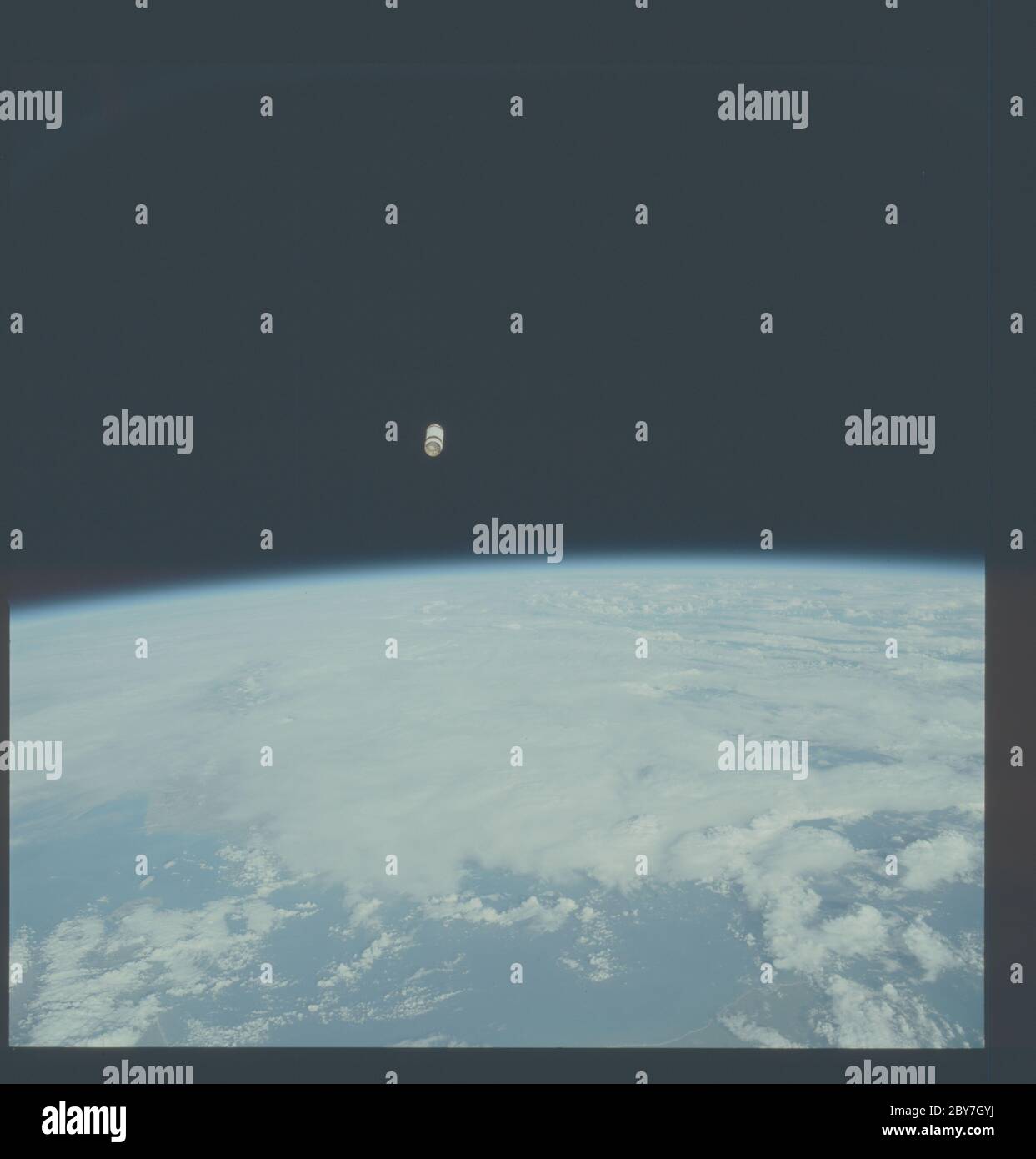 AST-01-014 - Apollo Soyuz Test Project - Apollo Soyuz Test Project, S-IV-B above Earth limb; Scope and content: The original database describes this as: Description: Apollo Soyuz Test Project (ASTP), Saturn S-4B Stage (S-IV-B) above the Earth limb as it falls away from the Command Module. New Zealand (North Island), East Cape visible on Earth limb. Image taken on Revolution 2, Greenwich Mean Time (GMT) Time of Photo 196:22:29, Ground Elapsed Time (GET) 2:39, Altitude 169 km. Original Film Magazine: CX-06,Laboratory Roll 1; Camera Data: Hasselbald Reflex,70-mm,Model 500EL,Nasa Modified; Film Stock Photohttps://www.alamy.com/image-license-details/?v=1https://www.alamy.com/ast-01-014-apollo-soyuz-test-project-apollo-soyuz-test-project-s-iv-b-above-earth-limb-scope-and-content-the-original-database-describes-this-as-description-apollo-soyuz-test-project-astp-saturn-s-4b-stage-s-iv-b-above-the-earth-limb-as-it-falls-away-from-the-command-module-new-zealand-north-island-east-cape-visible-on-earth-limb-image-taken-on-revolution-2-greenwich-mean-time-gmt-time-of-photo-1962229-ground-elapsed-time-get-239-altitude-169-km-original-film-magazine-cx-06laboratory-roll-1-camera-data-hasselbald-reflex70-mmmodel-500elnasa-modified-film-image360970054.html
AST-01-014 - Apollo Soyuz Test Project - Apollo Soyuz Test Project, S-IV-B above Earth limb; Scope and content: The original database describes this as: Description: Apollo Soyuz Test Project (ASTP), Saturn S-4B Stage (S-IV-B) above the Earth limb as it falls away from the Command Module. New Zealand (North Island), East Cape visible on Earth limb. Image taken on Revolution 2, Greenwich Mean Time (GMT) Time of Photo 196:22:29, Ground Elapsed Time (GET) 2:39, Altitude 169 km. Original Film Magazine: CX-06,Laboratory Roll 1; Camera Data: Hasselbald Reflex,70-mm,Model 500EL,Nasa Modified; Film Stock Photohttps://www.alamy.com/image-license-details/?v=1https://www.alamy.com/ast-01-014-apollo-soyuz-test-project-apollo-soyuz-test-project-s-iv-b-above-earth-limb-scope-and-content-the-original-database-describes-this-as-description-apollo-soyuz-test-project-astp-saturn-s-4b-stage-s-iv-b-above-the-earth-limb-as-it-falls-away-from-the-command-module-new-zealand-north-island-east-cape-visible-on-earth-limb-image-taken-on-revolution-2-greenwich-mean-time-gmt-time-of-photo-1962229-ground-elapsed-time-get-239-altitude-169-km-original-film-magazine-cx-06laboratory-roll-1-camera-data-hasselbald-reflex70-mmmodel-500elnasa-modified-film-image360970054.htmlRM2BY7GYJ–AST-01-014 - Apollo Soyuz Test Project - Apollo Soyuz Test Project, S-IV-B above Earth limb; Scope and content: The original database describes this as: Description: Apollo Soyuz Test Project (ASTP), Saturn S-4B Stage (S-IV-B) above the Earth limb as it falls away from the Command Module. New Zealand (North Island), East Cape visible on Earth limb. Image taken on Revolution 2, Greenwich Mean Time (GMT) Time of Photo 196:22:29, Ground Elapsed Time (GET) 2:39, Altitude 169 km. Original Film Magazine: CX-06,Laboratory Roll 1; Camera Data: Hasselbald Reflex,70-mm,Model 500EL,Nasa Modified; Film
![. On the anatomy of vertebrates [electronic resource] . Pelvic limb, Ape. Dentition of Woolly Lemur. mammae, vesicular and prostatic glands, a simple or slightly bifiduterus, and a discoid, sometimes double, placenta. The Quadru-mana have a well-marked threefold geographical as well asstructural division. The Strepsirhines are those with curved ortwisted terminal nostrils, with much-modified incisors, commonly6; premolars Lichanotus, fig. 177, or in number, and. Platyrhine dentition {Celus), CatarMne dentition {Papio). molars with sharp tubercles; the second digit of the hind limbhas a claw Stock Photo . On the anatomy of vertebrates [electronic resource] . Pelvic limb, Ape. Dentition of Woolly Lemur. mammae, vesicular and prostatic glands, a simple or slightly bifiduterus, and a discoid, sometimes double, placenta. The Quadru-mana have a well-marked threefold geographical as well asstructural division. The Strepsirhines are those with curved ortwisted terminal nostrils, with much-modified incisors, commonly6; premolars Lichanotus, fig. 177, or in number, and. Platyrhine dentition {Celus), CatarMne dentition {Papio). molars with sharp tubercles; the second digit of the hind limbhas a claw Stock Photo](https://c8.alamy.com/comp/2CNH9E1/on-the-anatomy-of-vertebrates-electronic-resource-pelvic-limb-ape-dentition-of-woolly-lemur-mammae-vesicular-and-prostatic-glands-a-simple-or-slightly-bifiduterus-and-a-discoid-sometimes-double-placenta-the-quadru-mana-have-a-well-marked-threefold-geographical-as-well-asstructural-division-the-strepsirhines-are-those-with-curved-ortwisted-terminal-nostrils-with-much-modified-incisors-commonly6-premolars-lichanotus-fig-177-or-in-number-and-platyrhine-dentition-celus-catarmne-dentition-papio-molars-with-sharp-tubercles-the-second-digit-of-the-hind-limbhas-a-claw-2CNH9E1.jpg) . On the anatomy of vertebrates [electronic resource] . Pelvic limb, Ape. Dentition of Woolly Lemur. mammae, vesicular and prostatic glands, a simple or slightly bifiduterus, and a discoid, sometimes double, placenta. The Quadru-mana have a well-marked threefold geographical as well asstructural division. The Strepsirhines are those with curved ortwisted terminal nostrils, with much-modified incisors, commonly6; premolars Lichanotus, fig. 177, or in number, and. Platyrhine dentition {Celus), CatarMne dentition {Papio). molars with sharp tubercles; the second digit of the hind limbhas a claw Stock Photohttps://www.alamy.com/image-license-details/?v=1https://www.alamy.com/on-the-anatomy-of-vertebrates-electronic-resource-pelvic-limb-ape-dentition-of-woolly-lemur-mammae-vesicular-and-prostatic-glands-a-simple-or-slightly-bifiduterus-and-a-discoid-sometimes-double-placenta-the-quadru-mana-have-a-well-marked-threefold-geographical-as-well-asstructural-division-the-strepsirhines-are-those-with-curved-ortwisted-terminal-nostrils-with-much-modified-incisors-commonly6-premolars-lichanotus-fig-177-or-in-number-and-platyrhine-dentition-celus-catarmne-dentition-papio-molars-with-sharp-tubercles-the-second-digit-of-the-hind-limbhas-a-claw-image374706137.html
. On the anatomy of vertebrates [electronic resource] . Pelvic limb, Ape. Dentition of Woolly Lemur. mammae, vesicular and prostatic glands, a simple or slightly bifiduterus, and a discoid, sometimes double, placenta. The Quadru-mana have a well-marked threefold geographical as well asstructural division. The Strepsirhines are those with curved ortwisted terminal nostrils, with much-modified incisors, commonly6; premolars Lichanotus, fig. 177, or in number, and. Platyrhine dentition {Celus), CatarMne dentition {Papio). molars with sharp tubercles; the second digit of the hind limbhas a claw Stock Photohttps://www.alamy.com/image-license-details/?v=1https://www.alamy.com/on-the-anatomy-of-vertebrates-electronic-resource-pelvic-limb-ape-dentition-of-woolly-lemur-mammae-vesicular-and-prostatic-glands-a-simple-or-slightly-bifiduterus-and-a-discoid-sometimes-double-placenta-the-quadru-mana-have-a-well-marked-threefold-geographical-as-well-asstructural-division-the-strepsirhines-are-those-with-curved-ortwisted-terminal-nostrils-with-much-modified-incisors-commonly6-premolars-lichanotus-fig-177-or-in-number-and-platyrhine-dentition-celus-catarmne-dentition-papio-molars-with-sharp-tubercles-the-second-digit-of-the-hind-limbhas-a-claw-image374706137.htmlRM2CNH9E1–. On the anatomy of vertebrates [electronic resource] . Pelvic limb, Ape. Dentition of Woolly Lemur. mammae, vesicular and prostatic glands, a simple or slightly bifiduterus, and a discoid, sometimes double, placenta. The Quadru-mana have a well-marked threefold geographical as well asstructural division. The Strepsirhines are those with curved ortwisted terminal nostrils, with much-modified incisors, commonly6; premolars Lichanotus, fig. 177, or in number, and. Platyrhine dentition {Celus), CatarMne dentition {Papio). molars with sharp tubercles; the second digit of the hind limbhas a claw
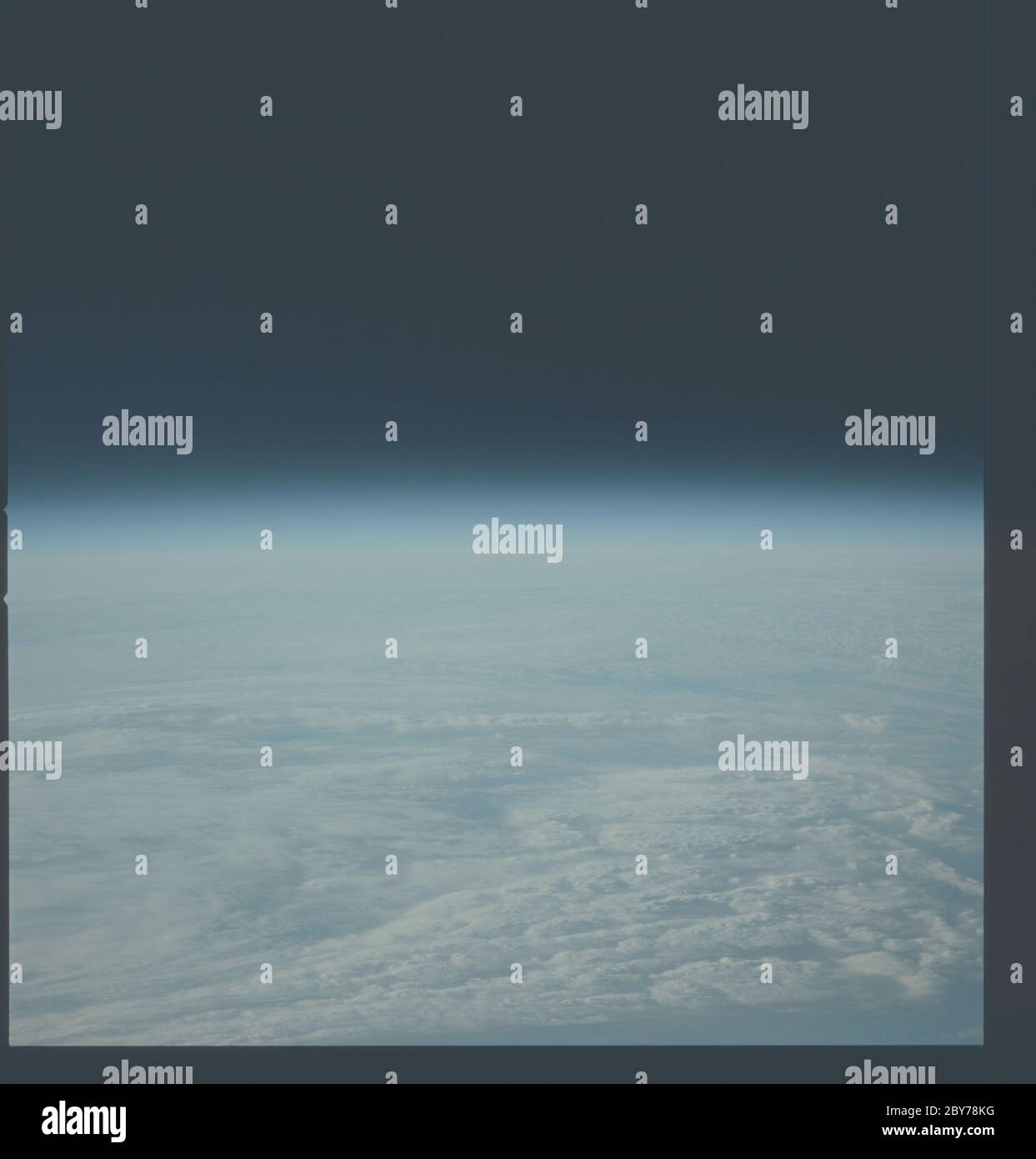 AST-01-021 - Apollo Soyuz Test Project - Apollo Soyuz Test Project, Earth limb; Scope and content: The original database describes this as: Description: Apollo Soyuz Test Project (ASTP), View of Earth limb with clouds, looking South from 150 degrees East. Image taken on Revolution 17, Greenwich Mean Time (GMT) Time of Photo 197:21:57, Ground Elapsed Time (GET) 26:07, Altitude 189 km. Original Film Magazine: CX-06,Laboratory Roll 1; Camera Data: Hasselbald Reflex,70-mm,Model 500EL,NASA Modified; Film Data: 70-mm Ektachrome,MS,Type QX-807,ASA=64, 50mm Lens. Subject Terms: Apollo Soyuz Test Pro Stock Photohttps://www.alamy.com/image-license-details/?v=1https://www.alamy.com/ast-01-021-apollo-soyuz-test-project-apollo-soyuz-test-project-earth-limb-scope-and-content-the-original-database-describes-this-as-description-apollo-soyuz-test-project-astp-view-of-earth-limb-with-clouds-looking-south-from-150-degrees-east-image-taken-on-revolution-17-greenwich-mean-time-gmt-time-of-photo-1972157-ground-elapsed-time-get-2607-altitude-189-km-original-film-magazine-cx-06laboratory-roll-1-camera-data-hasselbald-reflex70-mmmodel-500elnasa-modified-film-data-70-mm-ektachromemstype-qx-807asa=64-50mm-lens-subject-terms-apollo-soyuz-test-pro-image360963556.html
AST-01-021 - Apollo Soyuz Test Project - Apollo Soyuz Test Project, Earth limb; Scope and content: The original database describes this as: Description: Apollo Soyuz Test Project (ASTP), View of Earth limb with clouds, looking South from 150 degrees East. Image taken on Revolution 17, Greenwich Mean Time (GMT) Time of Photo 197:21:57, Ground Elapsed Time (GET) 26:07, Altitude 189 km. Original Film Magazine: CX-06,Laboratory Roll 1; Camera Data: Hasselbald Reflex,70-mm,Model 500EL,NASA Modified; Film Data: 70-mm Ektachrome,MS,Type QX-807,ASA=64, 50mm Lens. Subject Terms: Apollo Soyuz Test Pro Stock Photohttps://www.alamy.com/image-license-details/?v=1https://www.alamy.com/ast-01-021-apollo-soyuz-test-project-apollo-soyuz-test-project-earth-limb-scope-and-content-the-original-database-describes-this-as-description-apollo-soyuz-test-project-astp-view-of-earth-limb-with-clouds-looking-south-from-150-degrees-east-image-taken-on-revolution-17-greenwich-mean-time-gmt-time-of-photo-1972157-ground-elapsed-time-get-2607-altitude-189-km-original-film-magazine-cx-06laboratory-roll-1-camera-data-hasselbald-reflex70-mmmodel-500elnasa-modified-film-data-70-mm-ektachromemstype-qx-807asa=64-50mm-lens-subject-terms-apollo-soyuz-test-pro-image360963556.htmlRM2BY78KG–AST-01-021 - Apollo Soyuz Test Project - Apollo Soyuz Test Project, Earth limb; Scope and content: The original database describes this as: Description: Apollo Soyuz Test Project (ASTP), View of Earth limb with clouds, looking South from 150 degrees East. Image taken on Revolution 17, Greenwich Mean Time (GMT) Time of Photo 197:21:57, Ground Elapsed Time (GET) 26:07, Altitude 189 km. Original Film Magazine: CX-06,Laboratory Roll 1; Camera Data: Hasselbald Reflex,70-mm,Model 500EL,NASA Modified; Film Data: 70-mm Ektachrome,MS,Type QX-807,ASA=64, 50mm Lens. Subject Terms: Apollo Soyuz Test Pro
 . New York medical gazette and journal of health. BriuU of Chopart* operation—Jeft foot 190 THE NEW -YORK In Ileys operation, as modified by Lisfranc, the entire tarsns ispreserved ; also the internal border of the foot remains longer by oneinch and a half, and the external border, by half an inch, than when theoperation by Choparts method is resorted to. There is a larger basefor the limb to rest upon during progression, and more firmness andassurance to the step are attained. The following drawing representsthe stump resulting from Ileys operation as performed by me withLisfrancs modificatio Stock Photohttps://www.alamy.com/image-license-details/?v=1https://www.alamy.com/new-york-medical-gazette-and-journal-of-health-briuu-of-chopart-operationjeft-foot-190-the-new-york-in-ileys-operation-as-modified-by-lisfranc-the-entire-tarsns-ispreserved-also-the-internal-border-of-the-foot-remains-longer-by-oneinch-and-a-half-and-the-external-border-by-half-an-inch-than-when-theoperation-by-choparts-method-is-resorted-to-there-is-a-larger-basefor-the-limb-to-rest-upon-during-progression-and-more-firmness-andassurance-to-the-step-are-attained-the-following-drawing-representsthe-stump-resulting-from-ileys-operation-as-performed-by-me-withlisfrancs-modificatio-image370366634.html
. New York medical gazette and journal of health. BriuU of Chopart* operation—Jeft foot 190 THE NEW -YORK In Ileys operation, as modified by Lisfranc, the entire tarsns ispreserved ; also the internal border of the foot remains longer by oneinch and a half, and the external border, by half an inch, than when theoperation by Choparts method is resorted to. There is a larger basefor the limb to rest upon during progression, and more firmness andassurance to the step are attained. The following drawing representsthe stump resulting from Ileys operation as performed by me withLisfrancs modificatio Stock Photohttps://www.alamy.com/image-license-details/?v=1https://www.alamy.com/new-york-medical-gazette-and-journal-of-health-briuu-of-chopart-operationjeft-foot-190-the-new-york-in-ileys-operation-as-modified-by-lisfranc-the-entire-tarsns-ispreserved-also-the-internal-border-of-the-foot-remains-longer-by-oneinch-and-a-half-and-the-external-border-by-half-an-inch-than-when-theoperation-by-choparts-method-is-resorted-to-there-is-a-larger-basefor-the-limb-to-rest-upon-during-progression-and-more-firmness-andassurance-to-the-step-are-attained-the-following-drawing-representsthe-stump-resulting-from-ileys-operation-as-performed-by-me-withlisfrancs-modificatio-image370366634.htmlRM2CEFJBP–. New York medical gazette and journal of health. BriuU of Chopart* operation—Jeft foot 190 THE NEW -YORK In Ileys operation, as modified by Lisfranc, the entire tarsns ispreserved ; also the internal border of the foot remains longer by oneinch and a half, and the external border, by half an inch, than when theoperation by Choparts method is resorted to. There is a larger basefor the limb to rest upon during progression, and more firmness andassurance to the step are attained. The following drawing representsthe stump resulting from Ileys operation as performed by me withLisfrancs modificatio
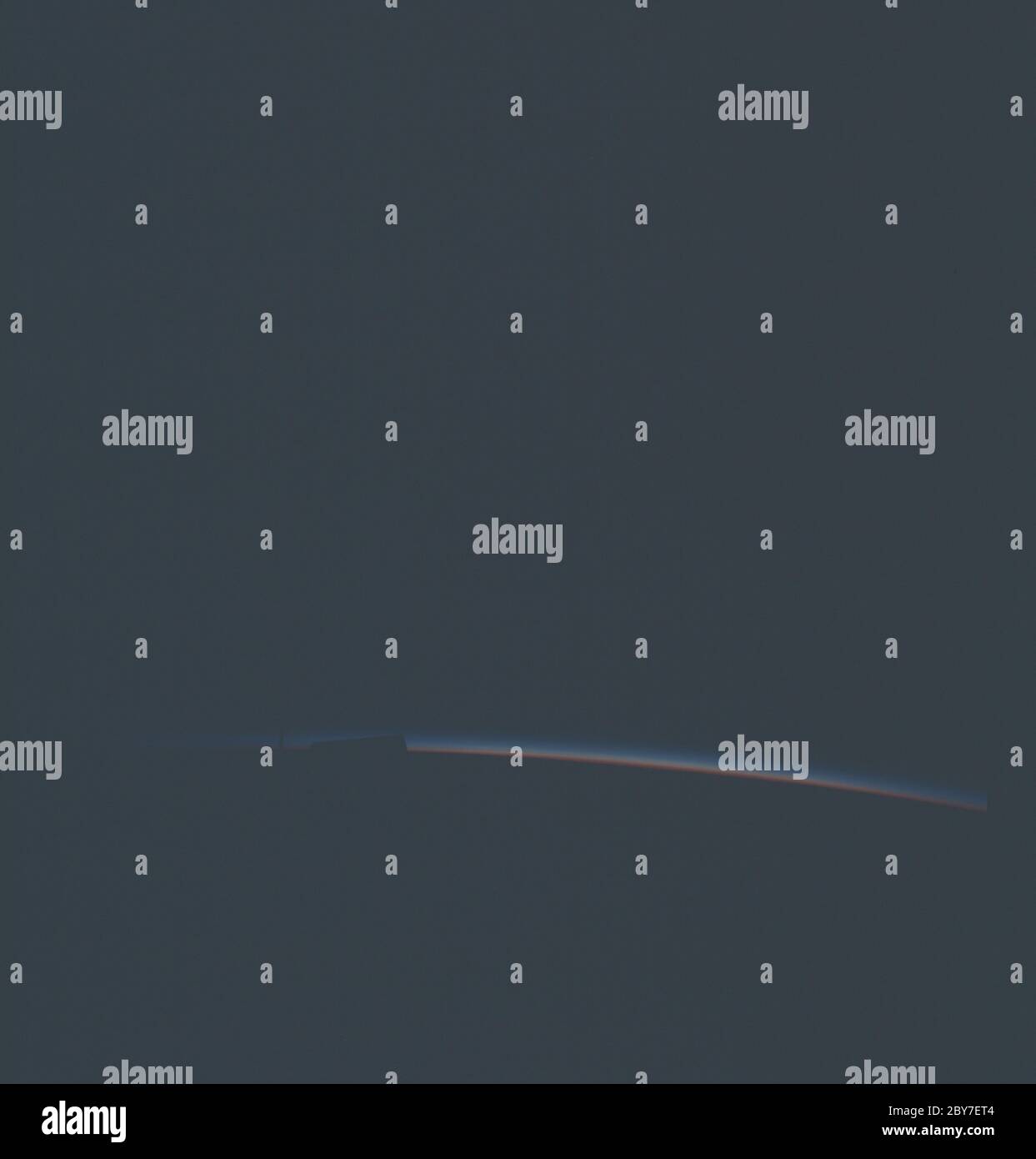 AST-30-2580 - Apollo Soyuz Test Project - Apollo Soyuz Test Project, Earth Limb, At Sunrise; Scope and content: The original database describes this as: Description: Apollo Soyuz Test Project (ASTP),Earth Limb,At Sunrise. Image taken on Revolution 76. Greenwich Mean Time (GMT) of Photo 201:19:06,Ground Elapsed Time (GET) 119:16,Altitude 230 km. Original Film Magazine: CX-14, Laboratory Roll 30; Camera Data: Hasselblad Reflex,70-mm,Model 500EL,NASA Modified; Film Data: 70-mm Ektachrome,MS,Type QX-807,ASA = 64,Lens 50mm. Subject Terms: Apollo Soyuz Test Project, Earth Observations (From Space), Stock Photohttps://www.alamy.com/image-license-details/?v=1https://www.alamy.com/ast-30-2580-apollo-soyuz-test-project-apollo-soyuz-test-project-earth-limb-at-sunrise-scope-and-content-the-original-database-describes-this-as-description-apollo-soyuz-test-project-astpearth-limbat-sunrise-image-taken-on-revolution-76-greenwich-mean-time-gmt-of-photo-2011906ground-elapsed-time-get-11916altitude-230-km-original-film-magazine-cx-14-laboratory-roll-30-camera-data-hasselblad-reflex70-mmmodel-500elnasa-modified-film-data-70-mm-ektachromemstype-qx-807asa-=-64lens-50mm-subject-terms-apollo-soyuz-test-project-earth-observations-from-space-image360968388.html
AST-30-2580 - Apollo Soyuz Test Project - Apollo Soyuz Test Project, Earth Limb, At Sunrise; Scope and content: The original database describes this as: Description: Apollo Soyuz Test Project (ASTP),Earth Limb,At Sunrise. Image taken on Revolution 76. Greenwich Mean Time (GMT) of Photo 201:19:06,Ground Elapsed Time (GET) 119:16,Altitude 230 km. Original Film Magazine: CX-14, Laboratory Roll 30; Camera Data: Hasselblad Reflex,70-mm,Model 500EL,NASA Modified; Film Data: 70-mm Ektachrome,MS,Type QX-807,ASA = 64,Lens 50mm. Subject Terms: Apollo Soyuz Test Project, Earth Observations (From Space), Stock Photohttps://www.alamy.com/image-license-details/?v=1https://www.alamy.com/ast-30-2580-apollo-soyuz-test-project-apollo-soyuz-test-project-earth-limb-at-sunrise-scope-and-content-the-original-database-describes-this-as-description-apollo-soyuz-test-project-astpearth-limbat-sunrise-image-taken-on-revolution-76-greenwich-mean-time-gmt-of-photo-2011906ground-elapsed-time-get-11916altitude-230-km-original-film-magazine-cx-14-laboratory-roll-30-camera-data-hasselblad-reflex70-mmmodel-500elnasa-modified-film-data-70-mm-ektachromemstype-qx-807asa-=-64lens-50mm-subject-terms-apollo-soyuz-test-project-earth-observations-from-space-image360968388.htmlRM2BY7ET4–AST-30-2580 - Apollo Soyuz Test Project - Apollo Soyuz Test Project, Earth Limb, At Sunrise; Scope and content: The original database describes this as: Description: Apollo Soyuz Test Project (ASTP),Earth Limb,At Sunrise. Image taken on Revolution 76. Greenwich Mean Time (GMT) of Photo 201:19:06,Ground Elapsed Time (GET) 119:16,Altitude 230 km. Original Film Magazine: CX-14, Laboratory Roll 30; Camera Data: Hasselblad Reflex,70-mm,Model 500EL,NASA Modified; Film Data: 70-mm Ektachrome,MS,Type QX-807,ASA = 64,Lens 50mm. Subject Terms: Apollo Soyuz Test Project, Earth Observations (From Space),
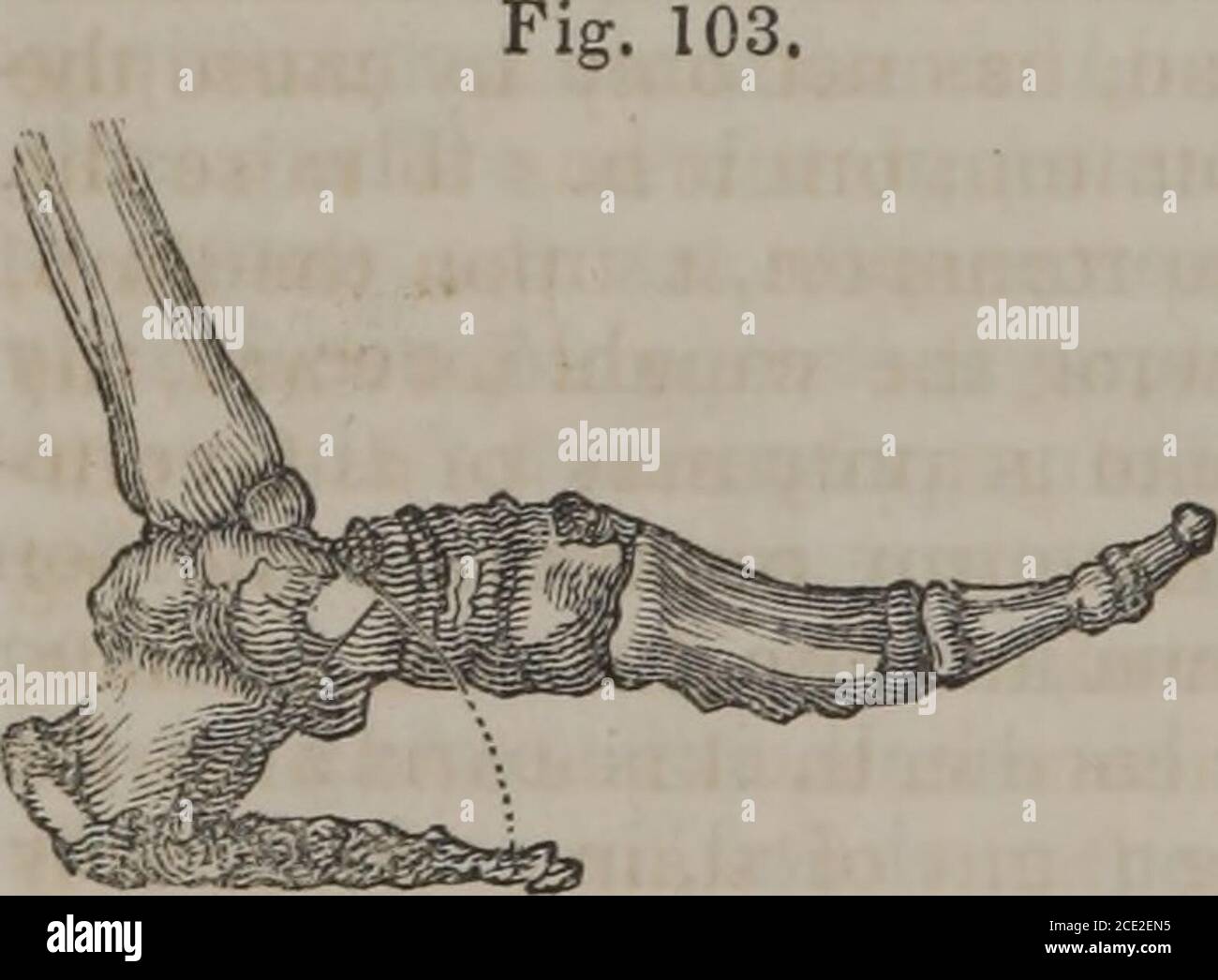 . Human physiology (Volume 1) . responding sideof the body. As yet, only one limb has advanced. The base ofsustentation has been modified, but there has been no progression.The limb, remaining behind, has now to be raised and brought for-ward, so as to pass the other, or to be on the same line with it, asthe case may be ; and this finishes the step. In order to bring upthe limb, which is behind, the foot must be successively detachedfrom the soil, from the heel to the toe. In this way, an elongationof the limb is produced, which assists in advancing the correspond-ing side of the trunk, and ex Stock Photohttps://www.alamy.com/image-license-details/?v=1https://www.alamy.com/human-physiology-volume-1-responding-sideof-the-body-as-yet-only-one-limb-has-advanced-the-base-ofsustentation-has-been-modified-but-there-has-been-no-progressionthe-limb-remaining-behind-has-now-to-be-raised-and-brought-for-ward-so-as-to-pass-the-other-or-to-be-on-the-same-line-with-it-asthe-case-may-be-and-this-finishes-the-step-in-order-to-bring-upthe-limb-which-is-behind-the-foot-must-be-successively-detachedfrom-the-soil-from-the-heel-to-the-toe-in-this-way-an-elongationof-the-limb-is-produced-which-assists-in-advancing-the-correspond-ing-side-of-the-trunk-and-ex-image370078385.html
. Human physiology (Volume 1) . responding sideof the body. As yet, only one limb has advanced. The base ofsustentation has been modified, but there has been no progression.The limb, remaining behind, has now to be raised and brought for-ward, so as to pass the other, or to be on the same line with it, asthe case may be ; and this finishes the step. In order to bring upthe limb, which is behind, the foot must be successively detachedfrom the soil, from the heel to the toe. In this way, an elongationof the limb is produced, which assists in advancing the correspond-ing side of the trunk, and ex Stock Photohttps://www.alamy.com/image-license-details/?v=1https://www.alamy.com/human-physiology-volume-1-responding-sideof-the-body-as-yet-only-one-limb-has-advanced-the-base-ofsustentation-has-been-modified-but-there-has-been-no-progressionthe-limb-remaining-behind-has-now-to-be-raised-and-brought-for-ward-so-as-to-pass-the-other-or-to-be-on-the-same-line-with-it-asthe-case-may-be-and-this-finishes-the-step-in-order-to-bring-upthe-limb-which-is-behind-the-foot-must-be-successively-detachedfrom-the-soil-from-the-heel-to-the-toe-in-this-way-an-elongationof-the-limb-is-produced-which-assists-in-advancing-the-correspond-ing-side-of-the-trunk-and-ex-image370078385.htmlRM2CE2EN5–. Human physiology (Volume 1) . responding sideof the body. As yet, only one limb has advanced. The base ofsustentation has been modified, but there has been no progression.The limb, remaining behind, has now to be raised and brought for-ward, so as to pass the other, or to be on the same line with it, asthe case may be ; and this finishes the step. In order to bring upthe limb, which is behind, the foot must be successively detachedfrom the soil, from the heel to the toe. In this way, an elongationof the limb is produced, which assists in advancing the correspond-ing side of the trunk, and ex
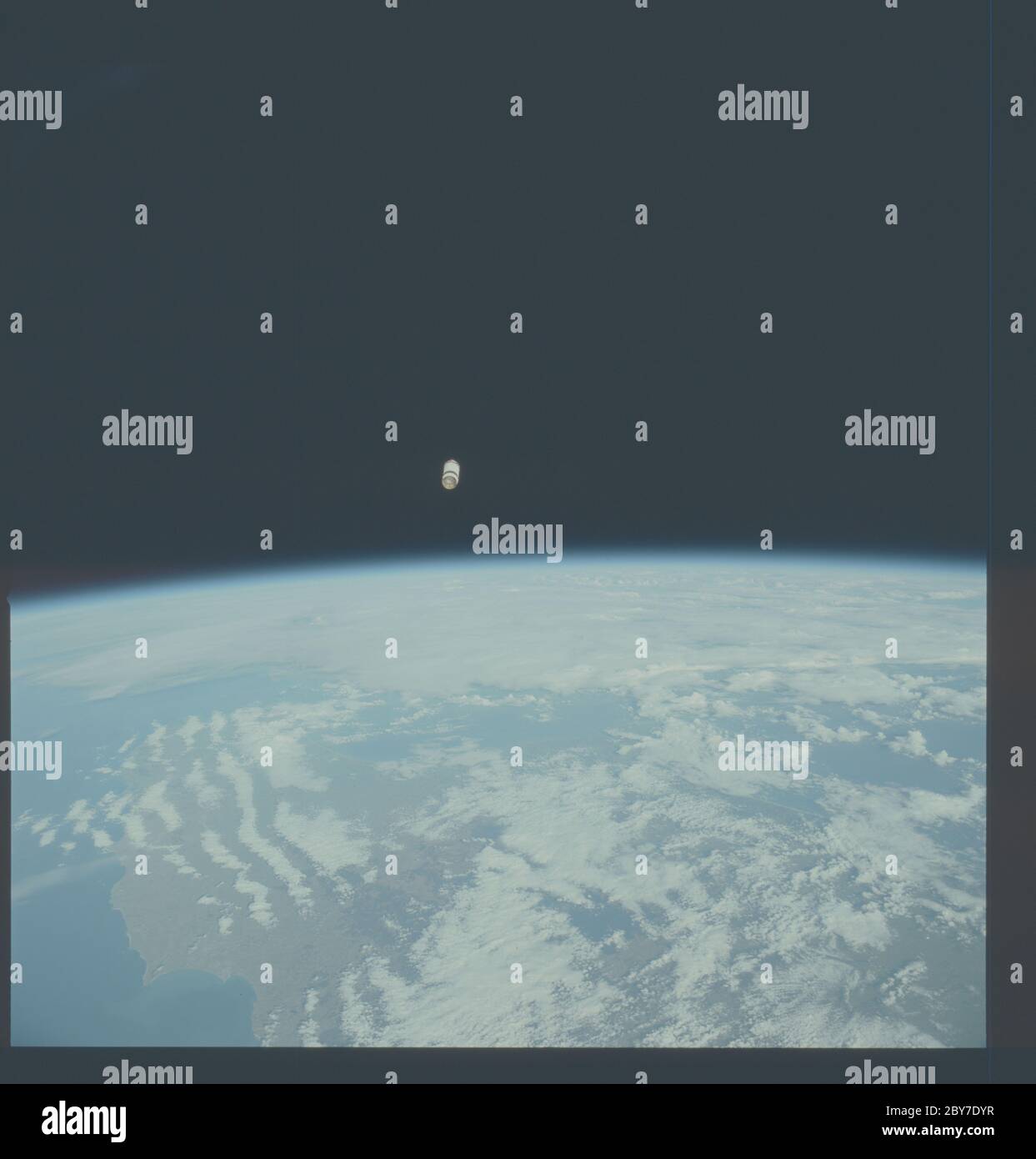 AST-01-015 - Apollo Soyuz Test Project - Apollo Soyuz Test Project, S-IV-B above the Earth limb; Scope and content: The original database describes this as: Description: Apollo Soyuz Test Project (ASTP), Saturn S-4B Stage (S-IV-B) above the Earth limb as it falls away from the Command Module. New Zealand (North Island), Hawke Bay visible on Earth limb. Image taken on Revolution 2, Greenwich Mean Time (GMT) Time of Photo 196:22:30, Ground Elapsed Time (GET) 2:40, Altitude 169 km. Original Film Magazine: CX-06,Laboratory Roll 1; Camera Data: Hasselbald Reflex,70-mm,Model 500EL,Nasa Modified; Stock Photohttps://www.alamy.com/image-license-details/?v=1https://www.alamy.com/ast-01-015-apollo-soyuz-test-project-apollo-soyuz-test-project-s-iv-b-above-the-earth-limb-scope-and-content-the-original-database-describes-this-as-description-apollo-soyuz-test-project-astp-saturn-s-4b-stage-s-iv-b-above-the-earth-limb-as-it-falls-away-from-the-command-module-new-zealand-north-island-hawke-bay-visible-on-earth-limb-image-taken-on-revolution-2-greenwich-mean-time-gmt-time-of-photo-1962230-ground-elapsed-time-get-240-altitude-169-km-original-film-magazine-cx-06laboratory-roll-1-camera-data-hasselbald-reflex70-mmmodel-500elnasa-modified-image360967707.html
AST-01-015 - Apollo Soyuz Test Project - Apollo Soyuz Test Project, S-IV-B above the Earth limb; Scope and content: The original database describes this as: Description: Apollo Soyuz Test Project (ASTP), Saturn S-4B Stage (S-IV-B) above the Earth limb as it falls away from the Command Module. New Zealand (North Island), Hawke Bay visible on Earth limb. Image taken on Revolution 2, Greenwich Mean Time (GMT) Time of Photo 196:22:30, Ground Elapsed Time (GET) 2:40, Altitude 169 km. Original Film Magazine: CX-06,Laboratory Roll 1; Camera Data: Hasselbald Reflex,70-mm,Model 500EL,Nasa Modified; Stock Photohttps://www.alamy.com/image-license-details/?v=1https://www.alamy.com/ast-01-015-apollo-soyuz-test-project-apollo-soyuz-test-project-s-iv-b-above-the-earth-limb-scope-and-content-the-original-database-describes-this-as-description-apollo-soyuz-test-project-astp-saturn-s-4b-stage-s-iv-b-above-the-earth-limb-as-it-falls-away-from-the-command-module-new-zealand-north-island-hawke-bay-visible-on-earth-limb-image-taken-on-revolution-2-greenwich-mean-time-gmt-time-of-photo-1962230-ground-elapsed-time-get-240-altitude-169-km-original-film-magazine-cx-06laboratory-roll-1-camera-data-hasselbald-reflex70-mmmodel-500elnasa-modified-image360967707.htmlRM2BY7DYR–AST-01-015 - Apollo Soyuz Test Project - Apollo Soyuz Test Project, S-IV-B above the Earth limb; Scope and content: The original database describes this as: Description: Apollo Soyuz Test Project (ASTP), Saturn S-4B Stage (S-IV-B) above the Earth limb as it falls away from the Command Module. New Zealand (North Island), Hawke Bay visible on Earth limb. Image taken on Revolution 2, Greenwich Mean Time (GMT) Time of Photo 196:22:30, Ground Elapsed Time (GET) 2:40, Altitude 169 km. Original Film Magazine: CX-06,Laboratory Roll 1; Camera Data: Hasselbald Reflex,70-mm,Model 500EL,Nasa Modified;
 AST-27-2339 - Apollo Soyuz Test Project - Apollo Soyuz Test Project, Earth Limb at Sunrise, Cloud Silhouette; Scope and content: The original database describes this as: Description: Apollo Soyuz Test Project (ASTP),Earth Limb at Sunrise,Cloud Silhouette. Image taken on Revolution 72. Greenwich Mean Time (GMT) of Photo 201:11:48,Ground Elapsed Time (GET) 111:58,Altitude 230 km. Original Film Magazine: CX-08,Laboratory Roll 27; Camera Data: Hasselblad Reflex,70-mm,Model 500EL,NASA Modified; Film Data: 70-mm Ektachrome,MS,Type QX-807,ASA = 64,Lens 50mm. Subject Terms: Apollo Soyuz Test Project, Stock Photohttps://www.alamy.com/image-license-details/?v=1https://www.alamy.com/ast-27-2339-apollo-soyuz-test-project-apollo-soyuz-test-project-earth-limb-at-sunrise-cloud-silhouette-scope-and-content-the-original-database-describes-this-as-description-apollo-soyuz-test-project-astpearth-limb-at-sunrisecloud-silhouette-image-taken-on-revolution-72-greenwich-mean-time-gmt-of-photo-2011148ground-elapsed-time-get-11158altitude-230-km-original-film-magazine-cx-08laboratory-roll-27-camera-data-hasselblad-reflex70-mmmodel-500elnasa-modified-film-data-70-mm-ektachromemstype-qx-807asa-=-64lens-50mm-subject-terms-apollo-soyuz-test-project-image360967056.html
AST-27-2339 - Apollo Soyuz Test Project - Apollo Soyuz Test Project, Earth Limb at Sunrise, Cloud Silhouette; Scope and content: The original database describes this as: Description: Apollo Soyuz Test Project (ASTP),Earth Limb at Sunrise,Cloud Silhouette. Image taken on Revolution 72. Greenwich Mean Time (GMT) of Photo 201:11:48,Ground Elapsed Time (GET) 111:58,Altitude 230 km. Original Film Magazine: CX-08,Laboratory Roll 27; Camera Data: Hasselblad Reflex,70-mm,Model 500EL,NASA Modified; Film Data: 70-mm Ektachrome,MS,Type QX-807,ASA = 64,Lens 50mm. Subject Terms: Apollo Soyuz Test Project, Stock Photohttps://www.alamy.com/image-license-details/?v=1https://www.alamy.com/ast-27-2339-apollo-soyuz-test-project-apollo-soyuz-test-project-earth-limb-at-sunrise-cloud-silhouette-scope-and-content-the-original-database-describes-this-as-description-apollo-soyuz-test-project-astpearth-limb-at-sunrisecloud-silhouette-image-taken-on-revolution-72-greenwich-mean-time-gmt-of-photo-2011148ground-elapsed-time-get-11158altitude-230-km-original-film-magazine-cx-08laboratory-roll-27-camera-data-hasselblad-reflex70-mmmodel-500elnasa-modified-film-data-70-mm-ektachromemstype-qx-807asa-=-64lens-50mm-subject-terms-apollo-soyuz-test-project-image360967056.htmlRM2BY7D4G–AST-27-2339 - Apollo Soyuz Test Project - Apollo Soyuz Test Project, Earth Limb at Sunrise, Cloud Silhouette; Scope and content: The original database describes this as: Description: Apollo Soyuz Test Project (ASTP),Earth Limb at Sunrise,Cloud Silhouette. Image taken on Revolution 72. Greenwich Mean Time (GMT) of Photo 201:11:48,Ground Elapsed Time (GET) 111:58,Altitude 230 km. Original Film Magazine: CX-08,Laboratory Roll 27; Camera Data: Hasselblad Reflex,70-mm,Model 500EL,NASA Modified; Film Data: 70-mm Ektachrome,MS,Type QX-807,ASA = 64,Lens 50mm. Subject Terms: Apollo Soyuz Test Project,
 . www.flickr.com/photos/internetarchivebookimages/tags/book... . the side of theAnnelidan prostomium or upper lip of the Apodidse.It has already been pointed out that the bending ofthe head has changed its position from behind themouth to in front of it. The form of this limb needs no special comment ;the bend in it is not a true joint, nor is it providedwith any muscles except a few which run into the bulbon which it stands. Its setae are modified into sensoryhairs, homologous with the olfactory hairs of thehigher Crustacea. Morphologically, the first antenna must be regarded D 34 THE PART I Stock Photohttps://www.alamy.com/image-license-details/?v=1https://www.alamy.com/wwwflickrcomphotosinternetarchivebookimagestagsbook-the-side-of-theannelidan-prostomium-or-upper-lip-of-the-apodidseit-has-already-been-pointed-out-that-the-bending-ofthe-head-has-changed-its-position-from-behind-themouth-to-in-front-of-it-the-form-of-this-limb-needs-no-special-comment-the-bend-in-it-is-not-a-true-joint-nor-is-it-providedwith-any-muscles-except-a-few-which-run-into-the-bulbon-which-it-stands-its-setae-are-modified-into-sensoryhairs-homologous-with-the-olfactory-hairs-of-thehigher-crustacea-morphologically-the-first-antenna-must-be-regarded-d-34-the-part-i-image369709006.html
. www.flickr.com/photos/internetarchivebookimages/tags/book... . the side of theAnnelidan prostomium or upper lip of the Apodidse.It has already been pointed out that the bending ofthe head has changed its position from behind themouth to in front of it. The form of this limb needs no special comment ;the bend in it is not a true joint, nor is it providedwith any muscles except a few which run into the bulbon which it stands. Its setae are modified into sensoryhairs, homologous with the olfactory hairs of thehigher Crustacea. Morphologically, the first antenna must be regarded D 34 THE PART I Stock Photohttps://www.alamy.com/image-license-details/?v=1https://www.alamy.com/wwwflickrcomphotosinternetarchivebookimagestagsbook-the-side-of-theannelidan-prostomium-or-upper-lip-of-the-apodidseit-has-already-been-pointed-out-that-the-bending-ofthe-head-has-changed-its-position-from-behind-themouth-to-in-front-of-it-the-form-of-this-limb-needs-no-special-comment-the-bend-in-it-is-not-a-true-joint-nor-is-it-providedwith-any-muscles-except-a-few-which-run-into-the-bulbon-which-it-stands-its-setae-are-modified-into-sensoryhairs-homologous-with-the-olfactory-hairs-of-thehigher-crustacea-morphologically-the-first-antenna-must-be-regarded-d-34-the-part-i-image369709006.htmlRM2CDDKH2–. www.flickr.com/photos/internetarchivebookimages/tags/book... . the side of theAnnelidan prostomium or upper lip of the Apodidse.It has already been pointed out that the bending ofthe head has changed its position from behind themouth to in front of it. The form of this limb needs no special comment ;the bend in it is not a true joint, nor is it providedwith any muscles except a few which run into the bulbon which it stands. Its setae are modified into sensoryhairs, homologous with the olfactory hairs of thehigher Crustacea. Morphologically, the first antenna must be regarded D 34 THE PART I
 AST-01-013 - Apollo Soyuz Test Project - Apollo Soyuz Test Project, S-IV-B above a cloud covered Earth limb; Scope and content: The original database describes this as: Description: Apollo Soyuz Test Project (ASTP), Saturn S-4B Stage (S-IV-B) above a cloud covered Earth limb as it falls away from the Command Module. Image taken on Revolution 2, Greenwich Mean Time (GMT) Time of Photo 196:22:29, Ground Elapsed Time (GET) 2:39, Altitude 170 km. Original Film Magazine: CX-06,Laboratory Roll 1; Camera Data: Hasselbald Reflex,70-mm,Model 500EL,Nasa Modified; Film Data: 70-mm Ektachrome,MS,Type Q Stock Photohttps://www.alamy.com/image-license-details/?v=1https://www.alamy.com/ast-01-013-apollo-soyuz-test-project-apollo-soyuz-test-project-s-iv-b-above-a-cloud-covered-earth-limb-scope-and-content-the-original-database-describes-this-as-description-apollo-soyuz-test-project-astp-saturn-s-4b-stage-s-iv-b-above-a-cloud-covered-earth-limb-as-it-falls-away-from-the-command-module-image-taken-on-revolution-2-greenwich-mean-time-gmt-time-of-photo-1962229-ground-elapsed-time-get-239-altitude-170-km-original-film-magazine-cx-06laboratory-roll-1-camera-data-hasselbald-reflex70-mmmodel-500elnasa-modified-film-data-70-mm-ektachromemstype-q-image360968396.html
AST-01-013 - Apollo Soyuz Test Project - Apollo Soyuz Test Project, S-IV-B above a cloud covered Earth limb; Scope and content: The original database describes this as: Description: Apollo Soyuz Test Project (ASTP), Saturn S-4B Stage (S-IV-B) above a cloud covered Earth limb as it falls away from the Command Module. Image taken on Revolution 2, Greenwich Mean Time (GMT) Time of Photo 196:22:29, Ground Elapsed Time (GET) 2:39, Altitude 170 km. Original Film Magazine: CX-06,Laboratory Roll 1; Camera Data: Hasselbald Reflex,70-mm,Model 500EL,Nasa Modified; Film Data: 70-mm Ektachrome,MS,Type Q Stock Photohttps://www.alamy.com/image-license-details/?v=1https://www.alamy.com/ast-01-013-apollo-soyuz-test-project-apollo-soyuz-test-project-s-iv-b-above-a-cloud-covered-earth-limb-scope-and-content-the-original-database-describes-this-as-description-apollo-soyuz-test-project-astp-saturn-s-4b-stage-s-iv-b-above-a-cloud-covered-earth-limb-as-it-falls-away-from-the-command-module-image-taken-on-revolution-2-greenwich-mean-time-gmt-time-of-photo-1962229-ground-elapsed-time-get-239-altitude-170-km-original-film-magazine-cx-06laboratory-roll-1-camera-data-hasselbald-reflex70-mmmodel-500elnasa-modified-film-data-70-mm-ektachromemstype-q-image360968396.htmlRM2BY7ETC–AST-01-013 - Apollo Soyuz Test Project - Apollo Soyuz Test Project, S-IV-B above a cloud covered Earth limb; Scope and content: The original database describes this as: Description: Apollo Soyuz Test Project (ASTP), Saturn S-4B Stage (S-IV-B) above a cloud covered Earth limb as it falls away from the Command Module. Image taken on Revolution 2, Greenwich Mean Time (GMT) Time of Photo 196:22:29, Ground Elapsed Time (GET) 2:39, Altitude 170 km. Original Film Magazine: CX-06,Laboratory Roll 1; Camera Data: Hasselbald Reflex,70-mm,Model 500EL,Nasa Modified; Film Data: 70-mm Ektachrome,MS,Type Q
 . Quain's Elements of anatomy. rnal surfaces bypreaxial and postaxial ridges, and the two external surfaces are separated by an externalridge, which descends from the dorsal extremity of the bone to the joint-socket. It ison this external ridge, (jlcnoid in the scapula and cotyloid in the ilium, that in each casethe long head of the great extensor muscle of the limb is attached. The primitive arrange-ment is modified in two ways, viz., 1st, by the outgrowth to a greater or less extent of theedges of the rod, thus giving rise to fossfe in the situation of the original surfaces, and 2nd,by the o Stock Photohttps://www.alamy.com/image-license-details/?v=1https://www.alamy.com/quains-elements-of-anatomy-rnal-surfaces-bypreaxial-and-postaxial-ridges-and-the-two-external-surfaces-are-separated-by-an-externalridge-which-descends-from-the-dorsal-extremity-of-the-bone-to-the-joint-socket-it-ison-this-external-ridge-jlcnoid-in-the-scapula-and-cotyloid-in-the-ilium-that-in-each-casethe-long-head-of-the-great-extensor-muscle-of-the-limb-is-attached-the-primitive-arrange-ment-is-modified-in-two-ways-viz-1st-by-the-outgrowth-to-a-greater-or-less-extent-of-theedges-of-the-rod-thus-giving-rise-to-fossfe-in-the-situation-of-the-original-surfaces-and-2ndby-the-o-image370782890.html
. Quain's Elements of anatomy. rnal surfaces bypreaxial and postaxial ridges, and the two external surfaces are separated by an externalridge, which descends from the dorsal extremity of the bone to the joint-socket. It ison this external ridge, (jlcnoid in the scapula and cotyloid in the ilium, that in each casethe long head of the great extensor muscle of the limb is attached. The primitive arrange-ment is modified in two ways, viz., 1st, by the outgrowth to a greater or less extent of theedges of the rod, thus giving rise to fossfe in the situation of the original surfaces, and 2nd,by the o Stock Photohttps://www.alamy.com/image-license-details/?v=1https://www.alamy.com/quains-elements-of-anatomy-rnal-surfaces-bypreaxial-and-postaxial-ridges-and-the-two-external-surfaces-are-separated-by-an-externalridge-which-descends-from-the-dorsal-extremity-of-the-bone-to-the-joint-socket-it-ison-this-external-ridge-jlcnoid-in-the-scapula-and-cotyloid-in-the-ilium-that-in-each-casethe-long-head-of-the-great-extensor-muscle-of-the-limb-is-attached-the-primitive-arrange-ment-is-modified-in-two-ways-viz-1st-by-the-outgrowth-to-a-greater-or-less-extent-of-theedges-of-the-rod-thus-giving-rise-to-fossfe-in-the-situation-of-the-original-surfaces-and-2ndby-the-o-image370782890.htmlRM2CF6HA2–. Quain's Elements of anatomy. rnal surfaces bypreaxial and postaxial ridges, and the two external surfaces are separated by an externalridge, which descends from the dorsal extremity of the bone to the joint-socket. It ison this external ridge, (jlcnoid in the scapula and cotyloid in the ilium, that in each casethe long head of the great extensor muscle of the limb is attached. The primitive arrange-ment is modified in two ways, viz., 1st, by the outgrowth to a greater or less extent of theedges of the rod, thus giving rise to fossfe in the situation of the original surfaces, and 2nd,by the o
 . A treatise on artificial limbs with rubber hands and feet ... tion to this method: in fact, it is advised. As many women pride themselves upon their <Jrim waists and neat-fitting garment^ it n :M the more desirable that means of leg suspen-sion should be light and neat. Straps securely sewed to the corset,extending downward and connected with the artificial limb, dispensewith a vast amount of bulk. A. A. MARKS, ARTIFICIAL LIMBS, NEW YORK CITY. 177 SUSPENDERS FOR DOUBLE AMPUTATIONS. Any of the suspenders described can be so modified as to be adapta-ble when two artificial legs are worn. Pr Stock Photohttps://www.alamy.com/image-license-details/?v=1https://www.alamy.com/a-treatise-on-artificial-limbs-with-rubber-hands-and-feet-tion-to-this-method-in-fact-it-is-advised-as-many-women-pride-themselves-upon-their-ltjrim-waists-and-neat-fitting-garment-it-n-m-the-more-desirable-that-means-of-leg-suspen-sion-should-be-light-and-neat-straps-securely-sewed-to-the-corsetextending-downward-and-connected-with-the-artificial-limb-dispensewith-a-vast-amount-of-bulk-a-a-marks-artificial-limbs-new-york-city-177-suspenders-for-double-amputations-any-of-the-suspenders-described-can-be-so-modified-as-to-be-adapta-ble-when-two-artificial-legs-are-worn-pr-image370616205.html
. A treatise on artificial limbs with rubber hands and feet ... tion to this method: in fact, it is advised. As many women pride themselves upon their <Jrim waists and neat-fitting garment^ it n :M the more desirable that means of leg suspen-sion should be light and neat. Straps securely sewed to the corset,extending downward and connected with the artificial limb, dispensewith a vast amount of bulk. A. A. MARKS, ARTIFICIAL LIMBS, NEW YORK CITY. 177 SUSPENDERS FOR DOUBLE AMPUTATIONS. Any of the suspenders described can be so modified as to be adapta-ble when two artificial legs are worn. Pr Stock Photohttps://www.alamy.com/image-license-details/?v=1https://www.alamy.com/a-treatise-on-artificial-limbs-with-rubber-hands-and-feet-tion-to-this-method-in-fact-it-is-advised-as-many-women-pride-themselves-upon-their-ltjrim-waists-and-neat-fitting-garment-it-n-m-the-more-desirable-that-means-of-leg-suspen-sion-should-be-light-and-neat-straps-securely-sewed-to-the-corsetextending-downward-and-connected-with-the-artificial-limb-dispensewith-a-vast-amount-of-bulk-a-a-marks-artificial-limbs-new-york-city-177-suspenders-for-double-amputations-any-of-the-suspenders-described-can-be-so-modified-as-to-be-adapta-ble-when-two-artificial-legs-are-worn-pr-image370616205.htmlRM2CEY0N1–. A treatise on artificial limbs with rubber hands and feet ... tion to this method: in fact, it is advised. As many women pride themselves upon their <Jrim waists and neat-fitting garment^ it n :M the more desirable that means of leg suspen-sion should be light and neat. Straps securely sewed to the corset,extending downward and connected with the artificial limb, dispensewith a vast amount of bulk. A. A. MARKS, ARTIFICIAL LIMBS, NEW YORK CITY. 177 SUSPENDERS FOR DOUBLE AMPUTATIONS. Any of the suspenders described can be so modified as to be adapta-ble when two artificial legs are worn. Pr
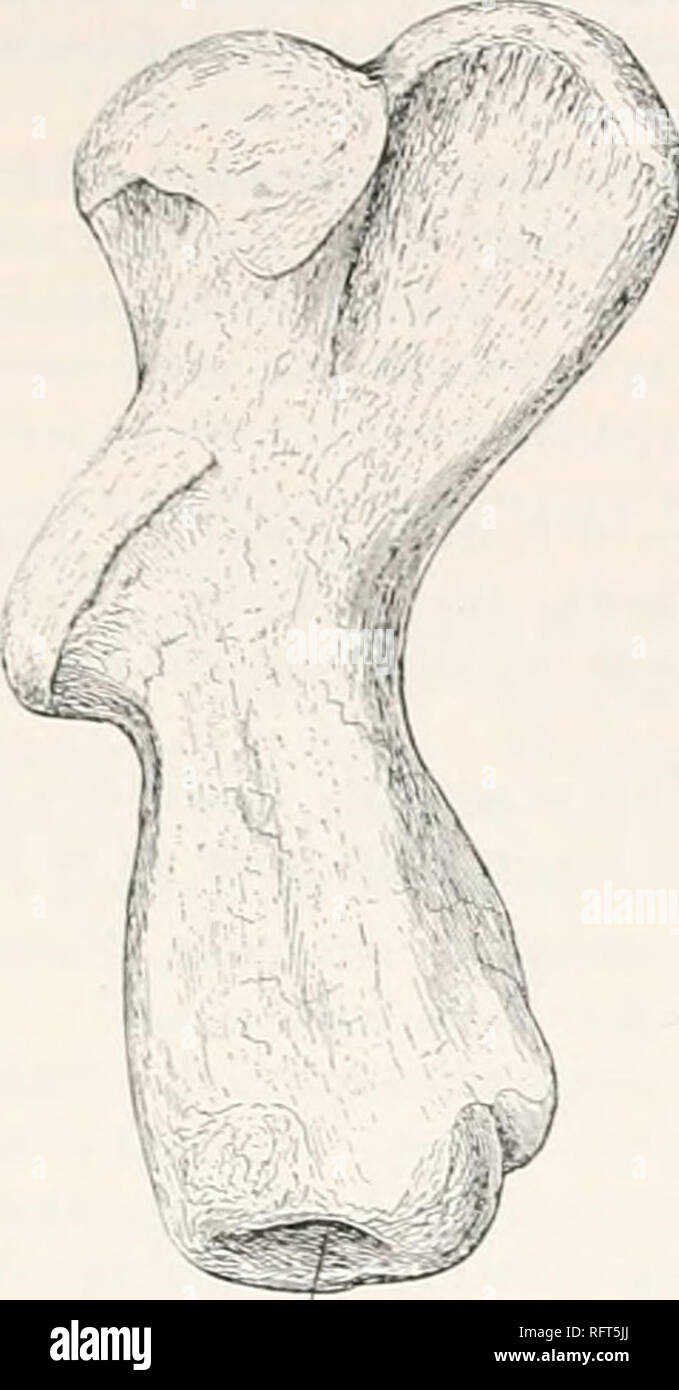 . Carnegie Institution of Washington publication. l'ROTOSTEGID^E. 197 Cope described and figured the humerus and some other limb bones. Case also added to our knowledge of the limbs; toWieland most of all we are indebted for their complete restora- tion. The materials furnishing his observations are in the Carnegie Museum, at Pittsburg. The scapula, with its procoracoid process, is a stout bone. The coracoid is so long that it reacht the pelvis. The humerus is greatly modified, resem- bling in some respects that of Dermochelys. The fingers are f elongated to form a great paddle for beating the Stock Photohttps://www.alamy.com/image-license-details/?v=1https://www.alamy.com/carnegie-institution-of-washington-publication-lrotostegide-197-cope-described-and-figured-the-humerus-and-some-other-limb-bones-case-also-added-to-our-knowledge-of-the-limbs-towieland-most-of-all-we-are-indebted-for-their-complete-restora-tion-the-materials-furnishing-his-observations-are-in-the-carnegie-museum-at-pittsburg-the-scapula-with-its-procoracoid-process-is-a-stout-bone-the-coracoid-is-so-long-that-it-reacht-the-pelvis-the-humerus-is-greatly-modified-resem-bling-in-some-respects-that-of-dermochelys-the-fingers-are-f-elongated-to-form-a-great-paddle-for-beating-the-image233485914.html
. Carnegie Institution of Washington publication. l'ROTOSTEGID^E. 197 Cope described and figured the humerus and some other limb bones. Case also added to our knowledge of the limbs; toWieland most of all we are indebted for their complete restora- tion. The materials furnishing his observations are in the Carnegie Museum, at Pittsburg. The scapula, with its procoracoid process, is a stout bone. The coracoid is so long that it reacht the pelvis. The humerus is greatly modified, resem- bling in some respects that of Dermochelys. The fingers are f elongated to form a great paddle for beating the Stock Photohttps://www.alamy.com/image-license-details/?v=1https://www.alamy.com/carnegie-institution-of-washington-publication-lrotostegide-197-cope-described-and-figured-the-humerus-and-some-other-limb-bones-case-also-added-to-our-knowledge-of-the-limbs-towieland-most-of-all-we-are-indebted-for-their-complete-restora-tion-the-materials-furnishing-his-observations-are-in-the-carnegie-museum-at-pittsburg-the-scapula-with-its-procoracoid-process-is-a-stout-bone-the-coracoid-is-so-long-that-it-reacht-the-pelvis-the-humerus-is-greatly-modified-resem-bling-in-some-respects-that-of-dermochelys-the-fingers-are-f-elongated-to-form-a-great-paddle-for-beating-the-image233485914.htmlRMRFT5JJ–. Carnegie Institution of Washington publication. l'ROTOSTEGID^E. 197 Cope described and figured the humerus and some other limb bones. Case also added to our knowledge of the limbs; toWieland most of all we are indebted for their complete restora- tion. The materials furnishing his observations are in the Carnegie Museum, at Pittsburg. The scapula, with its procoracoid process, is a stout bone. The coracoid is so long that it reacht the pelvis. The humerus is greatly modified, resem- bling in some respects that of Dermochelys. The fingers are f elongated to form a great paddle for beating the
 . The Cambridge natural history. Zoology. --Abd.tiS. absence of a siphon are three other families of fish-parasites, the Bomolochidae, Chondracanthidae, and Philichthyidae. Fam. 5. Bomolochidae.—Bomolochus (Fig. 40), parasitic on the skin of the Sole (Solea) and in the nostrils of Cod (Gadus), is held to be related to the Ergasilidae. The first thoracic limb is remarkably modified. "Were it not for the absence of a siphon, it would be hard to separate this family from the Caligidae.. Please note that these images are extracted from scanned page images that may have been digitally enhanced Stock Photohttps://www.alamy.com/image-license-details/?v=1https://www.alamy.com/the-cambridge-natural-history-zoology-abdtis-absence-of-a-siphon-are-three-other-families-of-fish-parasites-the-bomolochidae-chondracanthidae-and-philichthyidae-fam-5-bomolochidaebomolochus-fig-40-parasitic-on-the-skin-of-the-sole-solea-and-in-the-nostrils-of-cod-gadus-is-held-to-be-related-to-the-ergasilidae-the-first-thoracic-limb-is-remarkably-modified-quotwere-it-not-for-the-absence-of-a-siphon-it-would-be-hard-to-separate-this-family-from-the-caligidae-please-note-that-these-images-are-extracted-from-scanned-page-images-that-may-have-been-digitally-enhanced-image232163738.html
. The Cambridge natural history. Zoology. --Abd.tiS. absence of a siphon are three other families of fish-parasites, the Bomolochidae, Chondracanthidae, and Philichthyidae. Fam. 5. Bomolochidae.—Bomolochus (Fig. 40), parasitic on the skin of the Sole (Solea) and in the nostrils of Cod (Gadus), is held to be related to the Ergasilidae. The first thoracic limb is remarkably modified. "Were it not for the absence of a siphon, it would be hard to separate this family from the Caligidae.. Please note that these images are extracted from scanned page images that may have been digitally enhanced Stock Photohttps://www.alamy.com/image-license-details/?v=1https://www.alamy.com/the-cambridge-natural-history-zoology-abdtis-absence-of-a-siphon-are-three-other-families-of-fish-parasites-the-bomolochidae-chondracanthidae-and-philichthyidae-fam-5-bomolochidaebomolochus-fig-40-parasitic-on-the-skin-of-the-sole-solea-and-in-the-nostrils-of-cod-gadus-is-held-to-be-related-to-the-ergasilidae-the-first-thoracic-limb-is-remarkably-modified-quotwere-it-not-for-the-absence-of-a-siphon-it-would-be-hard-to-separate-this-family-from-the-caligidae-please-note-that-these-images-are-extracted-from-scanned-page-images-that-may-have-been-digitally-enhanced-image232163738.htmlRMRDKY62–. The Cambridge natural history. Zoology. --Abd.tiS. absence of a siphon are three other families of fish-parasites, the Bomolochidae, Chondracanthidae, and Philichthyidae. Fam. 5. Bomolochidae.—Bomolochus (Fig. 40), parasitic on the skin of the Sole (Solea) and in the nostrils of Cod (Gadus), is held to be related to the Ergasilidae. The first thoracic limb is remarkably modified. "Were it not for the absence of a siphon, it would be hard to separate this family from the Caligidae.. Please note that these images are extracted from scanned page images that may have been digitally enhanced
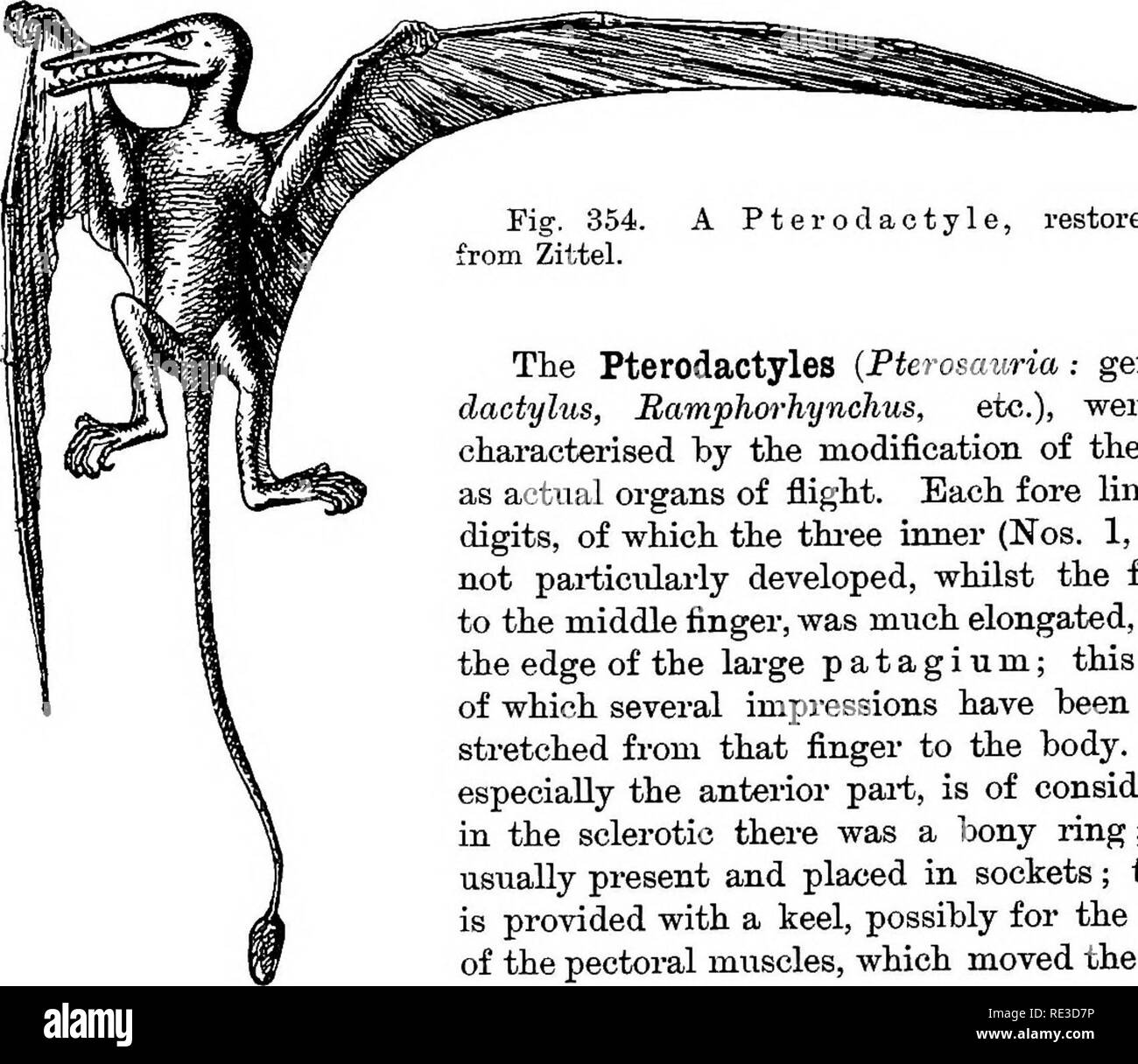 . Text book of zoology. Zoology. Fig. 353. A Plesiosaiirian. as in the latter, are clawless, and like the fins of a Whale; they are, however, xisually larger than in the Ichthyosauj-ians, the bones are not so much shortened, and the number of digits does not exceed five. They attaia a length equal to that of the Ichthyostarians. Triassic, Jtu-assic, Cretaceoiis.. A Pteroclactyle, restored.—Modified The Fterodactyles {Pterosauria : genera Ptero- dactylus, Bamphm-hynchus, etc.), were specially characterised by the modification of the fore limbs as actual organs of fiight. Each fore limb had four Stock Photohttps://www.alamy.com/image-license-details/?v=1https://www.alamy.com/text-book-of-zoology-zoology-fig-353-a-plesiosaiirian-as-in-the-latter-are-clawless-and-like-the-fins-of-a-whale-they-are-however-xisually-larger-than-in-the-ichthyosauj-ians-the-bones-are-not-so-much-shortened-and-the-number-of-digits-does-not-exceed-five-they-attaia-a-length-equal-to-that-of-the-ichthyostarians-triassic-jtu-assic-cretaceoiis-a-pteroclactyle-restoredmodified-the-fterodactyles-pterosauria-genera-ptero-dactylus-bamphm-hynchus-etc-were-specially-characterised-by-the-modification-of-the-fore-limbs-as-actual-organs-of-fiight-each-fore-limb-had-four-image232416234.html
. Text book of zoology. Zoology. Fig. 353. A Plesiosaiirian. as in the latter, are clawless, and like the fins of a Whale; they are, however, xisually larger than in the Ichthyosauj-ians, the bones are not so much shortened, and the number of digits does not exceed five. They attaia a length equal to that of the Ichthyostarians. Triassic, Jtu-assic, Cretaceoiis.. A Pteroclactyle, restored.—Modified The Fterodactyles {Pterosauria : genera Ptero- dactylus, Bamphm-hynchus, etc.), were specially characterised by the modification of the fore limbs as actual organs of fiight. Each fore limb had four Stock Photohttps://www.alamy.com/image-license-details/?v=1https://www.alamy.com/text-book-of-zoology-zoology-fig-353-a-plesiosaiirian-as-in-the-latter-are-clawless-and-like-the-fins-of-a-whale-they-are-however-xisually-larger-than-in-the-ichthyosauj-ians-the-bones-are-not-so-much-shortened-and-the-number-of-digits-does-not-exceed-five-they-attaia-a-length-equal-to-that-of-the-ichthyostarians-triassic-jtu-assic-cretaceoiis-a-pteroclactyle-restoredmodified-the-fterodactyles-pterosauria-genera-ptero-dactylus-bamphm-hynchus-etc-were-specially-characterised-by-the-modification-of-the-fore-limbs-as-actual-organs-of-fiight-each-fore-limb-had-four-image232416234.htmlRMRE3D7P–. Text book of zoology. Zoology. Fig. 353. A Plesiosaiirian. as in the latter, are clawless, and like the fins of a Whale; they are, however, xisually larger than in the Ichthyosauj-ians, the bones are not so much shortened, and the number of digits does not exceed five. They attaia a length equal to that of the Ichthyostarians. Triassic, Jtu-assic, Cretaceoiis.. A Pteroclactyle, restored.—Modified The Fterodactyles {Pterosauria : genera Ptero- dactylus, Bamphm-hynchus, etc.), were specially characterised by the modification of the fore limbs as actual organs of fiight. Each fore limb had four
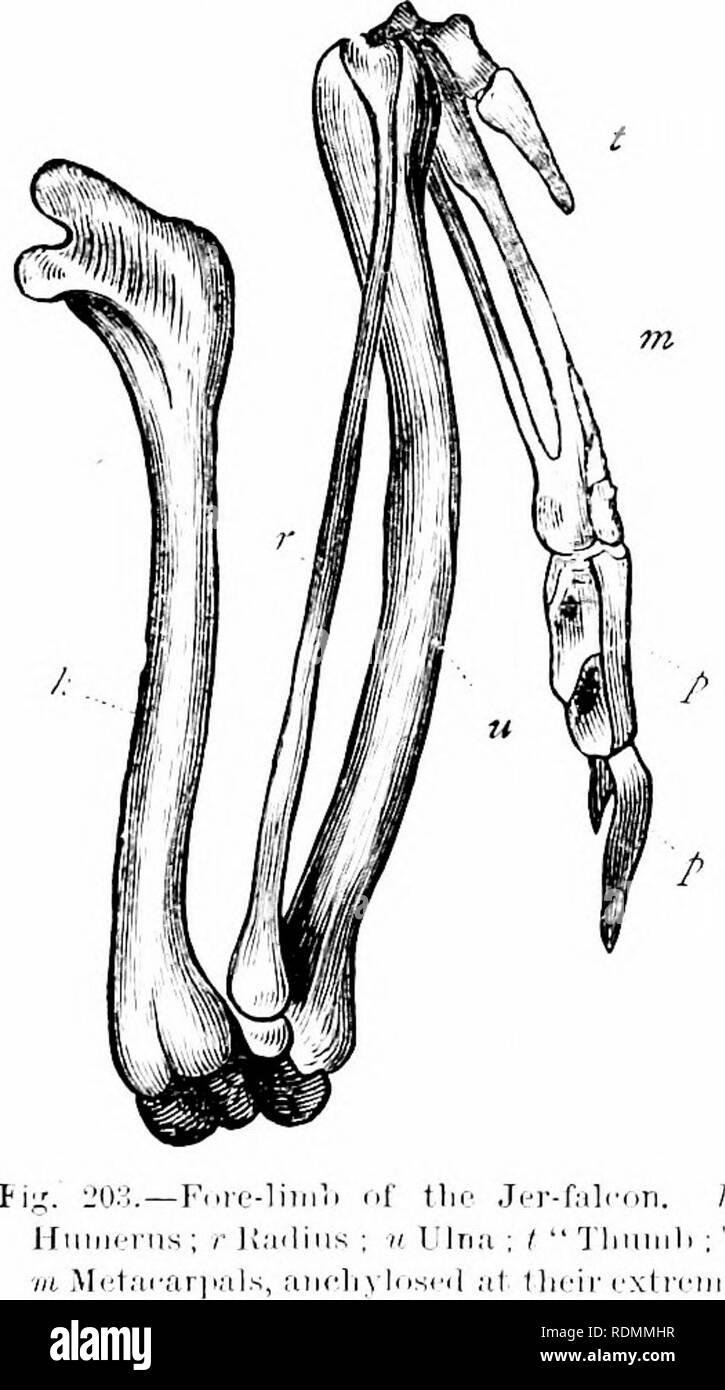 . Text-book of zoology for junior students. Zoology. 282 A'EKTIiUKATK AXIMALS. Khaped lioiie, wliich is terliiiically called tlie " fureuluni," but is familiarly called the "iLieny thought." The funrtinu of this cla- vicular arch is to keep the wings asunder during tlieir downward stroke, and the strength of the fiirculuni varies, tlierefore, with the powers of iliglit enjoyed ))y each l.iird. The hones which form the limb prcjpjer, or "wing," are considerably modified to suit the special function of flight, but essentially the same parts are present as in the for Stock Photohttps://www.alamy.com/image-license-details/?v=1https://www.alamy.com/text-book-of-zoology-for-junior-students-zoology-282-aektiiukatk-aximals-khaped-lioiie-wliich-is-terliiiically-called-tlie-quot-fureuluniquot-but-is-familiarly-called-the-quotilieny-thoughtquot-the-funrtinu-of-this-cla-vicular-arch-is-to-keep-the-wings-asunder-during-tlieir-downward-stroke-and-the-strength-of-the-fiirculuni-varies-tlierefore-with-the-powers-of-iliglit-enjoyed-y-each-liird-the-hones-which-form-the-limb-prcjpjer-or-quotwingquot-are-considerably-modified-to-suit-the-special-function-of-flight-but-essentially-the-same-parts-are-present-as-in-the-for-image232180531.html
. Text-book of zoology for junior students. Zoology. 282 A'EKTIiUKATK AXIMALS. Khaped lioiie, wliich is terliiiically called tlie " fureuluni," but is familiarly called the "iLieny thought." The funrtinu of this cla- vicular arch is to keep the wings asunder during tlieir downward stroke, and the strength of the fiirculuni varies, tlierefore, with the powers of iliglit enjoyed ))y each l.iird. The hones which form the limb prcjpjer, or "wing," are considerably modified to suit the special function of flight, but essentially the same parts are present as in the for Stock Photohttps://www.alamy.com/image-license-details/?v=1https://www.alamy.com/text-book-of-zoology-for-junior-students-zoology-282-aektiiukatk-aximals-khaped-lioiie-wliich-is-terliiiically-called-tlie-quot-fureuluniquot-but-is-familiarly-called-the-quotilieny-thoughtquot-the-funrtinu-of-this-cla-vicular-arch-is-to-keep-the-wings-asunder-during-tlieir-downward-stroke-and-the-strength-of-the-fiirculuni-varies-tlierefore-with-the-powers-of-iliglit-enjoyed-y-each-liird-the-hones-which-form-the-limb-prcjpjer-or-quotwingquot-are-considerably-modified-to-suit-the-special-function-of-flight-but-essentially-the-same-parts-are-present-as-in-the-for-image232180531.htmlRMRDMMHR–. Text-book of zoology for junior students. Zoology. 282 A'EKTIiUKATK AXIMALS. Khaped lioiie, wliich is terliiiically called tlie " fureuluni," but is familiarly called the "iLieny thought." The funrtinu of this cla- vicular arch is to keep the wings asunder during tlieir downward stroke, and the strength of the fiirculuni varies, tlierefore, with the powers of iliglit enjoyed ))y each l.iird. The hones which form the limb prcjpjer, or "wing," are considerably modified to suit the special function of flight, but essentially the same parts are present as in the for
 . The anatomy of the domestic animals . Veterinary anatomy. 226 THE ARTICULATIONS OF THE HOESB considerable elasticity, and is the highly modified interosseous medius muscle. It consists mainly of tendinous tissue, but contains a variable amount of striped mus- cular tissue, especially in its deep part and in young subjects. Its principal func- tion is to support the fetlock, i. e., to prevent excessive dorsal flexion of the joint when the weight is put on the limb. The branches which join the common exten- sor tendon limit volar flexion of the interphalangeal joints in certain phases of move- Stock Photohttps://www.alamy.com/image-license-details/?v=1https://www.alamy.com/the-anatomy-of-the-domestic-animals-veterinary-anatomy-226-the-articulations-of-the-hoesb-considerable-elasticity-and-is-the-highly-modified-interosseous-medius-muscle-it-consists-mainly-of-tendinous-tissue-but-contains-a-variable-amount-of-striped-mus-cular-tissue-especially-in-its-deep-part-and-in-young-subjects-its-principal-func-tion-is-to-support-the-fetlock-i-e-to-prevent-excessive-dorsal-flexion-of-the-joint-when-the-weight-is-put-on-the-limb-the-branches-which-join-the-common-exten-sor-tendon-limit-volar-flexion-of-the-interphalangeal-joints-in-certain-phases-of-move-image232326283.html
. The anatomy of the domestic animals . Veterinary anatomy. 226 THE ARTICULATIONS OF THE HOESB considerable elasticity, and is the highly modified interosseous medius muscle. It consists mainly of tendinous tissue, but contains a variable amount of striped mus- cular tissue, especially in its deep part and in young subjects. Its principal func- tion is to support the fetlock, i. e., to prevent excessive dorsal flexion of the joint when the weight is put on the limb. The branches which join the common exten- sor tendon limit volar flexion of the interphalangeal joints in certain phases of move- Stock Photohttps://www.alamy.com/image-license-details/?v=1https://www.alamy.com/the-anatomy-of-the-domestic-animals-veterinary-anatomy-226-the-articulations-of-the-hoesb-considerable-elasticity-and-is-the-highly-modified-interosseous-medius-muscle-it-consists-mainly-of-tendinous-tissue-but-contains-a-variable-amount-of-striped-mus-cular-tissue-especially-in-its-deep-part-and-in-young-subjects-its-principal-func-tion-is-to-support-the-fetlock-i-e-to-prevent-excessive-dorsal-flexion-of-the-joint-when-the-weight-is-put-on-the-limb-the-branches-which-join-the-common-exten-sor-tendon-limit-volar-flexion-of-the-interphalangeal-joints-in-certain-phases-of-move-image232326283.htmlRMRDYAF7–. The anatomy of the domestic animals . Veterinary anatomy. 226 THE ARTICULATIONS OF THE HOESB considerable elasticity, and is the highly modified interosseous medius muscle. It consists mainly of tendinous tissue, but contains a variable amount of striped mus- cular tissue, especially in its deep part and in young subjects. Its principal func- tion is to support the fetlock, i. e., to prevent excessive dorsal flexion of the joint when the weight is put on the limb. The branches which join the common exten- sor tendon limit volar flexion of the interphalangeal joints in certain phases of move-
 . Text book of vertebrate zoology. Vertebrates; Anatomy, Comparative. no MORPHOLOGY OF THE ORGAAS OF VERTEBRATES. of the hypaxial system are to be found, greatly modified, in the pelvic and neck regions. The subsequent modifications of the primitive musculature in the higher groups cannot be traced here in detail, even were it better known. Only the origin of the limb muscles can be referred to. This is best known in the fishes, there being only. Fig. 119. Section through the tail of Am- blystomay showing (^) epiaxial and (-^.v) hypaxial muscles; /;, hsemal arch ; K, nolochord; /, ribs. Fig. 1 Stock Photohttps://www.alamy.com/image-license-details/?v=1https://www.alamy.com/text-book-of-vertebrate-zoology-vertebrates-anatomy-comparative-no-morphology-of-the-orgaas-of-vertebrates-of-the-hypaxial-system-are-to-be-found-greatly-modified-in-the-pelvic-and-neck-regions-the-subsequent-modifications-of-the-primitive-musculature-in-the-higher-groups-cannot-be-traced-here-in-detail-even-were-it-better-known-only-the-origin-of-the-limb-muscles-can-be-referred-to-this-is-best-known-in-the-fishes-there-being-only-fig-119-section-through-the-tail-of-am-blystomay-showing-epiaxial-and-v-hypaxial-muscles-hsemal-arch-k-nolochord-ribs-fig-1-image232252849.html
. Text book of vertebrate zoology. Vertebrates; Anatomy, Comparative. no MORPHOLOGY OF THE ORGAAS OF VERTEBRATES. of the hypaxial system are to be found, greatly modified, in the pelvic and neck regions. The subsequent modifications of the primitive musculature in the higher groups cannot be traced here in detail, even were it better known. Only the origin of the limb muscles can be referred to. This is best known in the fishes, there being only. Fig. 119. Section through the tail of Am- blystomay showing (^) epiaxial and (-^.v) hypaxial muscles; /;, hsemal arch ; K, nolochord; /, ribs. Fig. 1 Stock Photohttps://www.alamy.com/image-license-details/?v=1https://www.alamy.com/text-book-of-vertebrate-zoology-vertebrates-anatomy-comparative-no-morphology-of-the-orgaas-of-vertebrates-of-the-hypaxial-system-are-to-be-found-greatly-modified-in-the-pelvic-and-neck-regions-the-subsequent-modifications-of-the-primitive-musculature-in-the-higher-groups-cannot-be-traced-here-in-detail-even-were-it-better-known-only-the-origin-of-the-limb-muscles-can-be-referred-to-this-is-best-known-in-the-fishes-there-being-only-fig-119-section-through-the-tail-of-am-blystomay-showing-epiaxial-and-v-hypaxial-muscles-hsemal-arch-k-nolochord-ribs-fig-1-image232252849.htmlRMRDT0TH–. Text book of vertebrate zoology. Vertebrates; Anatomy, Comparative. no MORPHOLOGY OF THE ORGAAS OF VERTEBRATES. of the hypaxial system are to be found, greatly modified, in the pelvic and neck regions. The subsequent modifications of the primitive musculature in the higher groups cannot be traced here in detail, even were it better known. Only the origin of the limb muscles can be referred to. This is best known in the fishes, there being only. Fig. 119. Section through the tail of Am- blystomay showing (^) epiaxial and (-^.v) hypaxial muscles; /;, hsemal arch ; K, nolochord; /, ribs. Fig. 1
 . A text-book of agricultural zoology. Zoology, Economic. 476 MAMMALIA. of year. From three to four young are born in May : they are pinky white, with white quills, and both eyes and ears are. Fig. 224.—Skull of Hedgehog (Brinaceus europaius). (NicliolsoD.) closed. They are joroduced and kept in a nest of moss, covered with leaves. In many respects the hedgehog is injurious, but it also does good in destroying vermin. Order CHIROPTEEA or BATS. The Bats, which are insectivorous mammals, are characterised by the peculiarly modified forearms, adapted to form the wings. The digits of the fore-limb Stock Photohttps://www.alamy.com/image-license-details/?v=1https://www.alamy.com/a-text-book-of-agricultural-zoology-zoology-economic-476-mammalia-of-year-from-three-to-four-young-are-born-in-may-they-are-pinky-white-with-white-quills-and-both-eyes-and-ears-are-fig-224skull-of-hedgehog-brinaceus-europaius-nicliolsod-closed-they-are-joroduced-and-kept-in-a-nest-of-moss-covered-with-leaves-in-many-respects-the-hedgehog-is-injurious-but-it-also-does-good-in-destroying-vermin-order-chiropteea-or-bats-the-bats-which-are-insectivorous-mammals-are-characterised-by-the-peculiarly-modified-forearms-adapted-to-form-the-wings-the-digits-of-the-fore-limb-image232132507.html
. A text-book of agricultural zoology. Zoology, Economic. 476 MAMMALIA. of year. From three to four young are born in May : they are pinky white, with white quills, and both eyes and ears are. Fig. 224.—Skull of Hedgehog (Brinaceus europaius). (NicliolsoD.) closed. They are joroduced and kept in a nest of moss, covered with leaves. In many respects the hedgehog is injurious, but it also does good in destroying vermin. Order CHIROPTEEA or BATS. The Bats, which are insectivorous mammals, are characterised by the peculiarly modified forearms, adapted to form the wings. The digits of the fore-limb Stock Photohttps://www.alamy.com/image-license-details/?v=1https://www.alamy.com/a-text-book-of-agricultural-zoology-zoology-economic-476-mammalia-of-year-from-three-to-four-young-are-born-in-may-they-are-pinky-white-with-white-quills-and-both-eyes-and-ears-are-fig-224skull-of-hedgehog-brinaceus-europaius-nicliolsod-closed-they-are-joroduced-and-kept-in-a-nest-of-moss-covered-with-leaves-in-many-respects-the-hedgehog-is-injurious-but-it-also-does-good-in-destroying-vermin-order-chiropteea-or-bats-the-bats-which-are-insectivorous-mammals-are-characterised-by-the-peculiarly-modified-forearms-adapted-to-form-the-wings-the-digits-of-the-fore-limb-image232132507.htmlRMRDJFAK–. A text-book of agricultural zoology. Zoology, Economic. 476 MAMMALIA. of year. From three to four young are born in May : they are pinky white, with white quills, and both eyes and ears are. Fig. 224.—Skull of Hedgehog (Brinaceus europaius). (NicliolsoD.) closed. They are joroduced and kept in a nest of moss, covered with leaves. In many respects the hedgehog is injurious, but it also does good in destroying vermin. Order CHIROPTEEA or BATS. The Bats, which are insectivorous mammals, are characterised by the peculiarly modified forearms, adapted to form the wings. The digits of the fore-limb
 . American types of animal life. Zoology; Animal behavior. THE OPOSSUM 49 It might seem at first sight, then, that in the kangaroo we have a kind of creature allied to the hoofed beasts long before known, and only so far modified as to be in harmony with climatic needs. But the structure of its hind foot is alone sufficient to dispel such a notion. Each hind limb has, indeed (like that of an antelope or riG. THE KOALA. deer), but two large and conspicuous toes. But these are of unequal size, and the inner one, which is much the larger, bears a very long and strong claw. On the inner side of th Stock Photohttps://www.alamy.com/image-license-details/?v=1https://www.alamy.com/american-types-of-animal-life-zoology-animal-behavior-the-opossum-49-it-might-seem-at-first-sight-then-that-in-the-kangaroo-we-have-a-kind-of-creature-allied-to-the-hoofed-beasts-long-before-known-and-only-so-far-modified-as-to-be-in-harmony-with-climatic-needs-but-the-structure-of-its-hind-foot-is-alone-sufficient-to-dispel-such-a-notion-each-hind-limb-has-indeed-like-that-of-an-antelope-or-rig-the-koala-deer-but-two-large-and-conspicuous-toes-but-these-are-of-unequal-size-and-the-inner-one-which-is-much-the-larger-bears-a-very-long-and-strong-claw-on-the-inner-side-of-th-image232034904.html
. American types of animal life. Zoology; Animal behavior. THE OPOSSUM 49 It might seem at first sight, then, that in the kangaroo we have a kind of creature allied to the hoofed beasts long before known, and only so far modified as to be in harmony with climatic needs. But the structure of its hind foot is alone sufficient to dispel such a notion. Each hind limb has, indeed (like that of an antelope or riG. THE KOALA. deer), but two large and conspicuous toes. But these are of unequal size, and the inner one, which is much the larger, bears a very long and strong claw. On the inner side of th Stock Photohttps://www.alamy.com/image-license-details/?v=1https://www.alamy.com/american-types-of-animal-life-zoology-animal-behavior-the-opossum-49-it-might-seem-at-first-sight-then-that-in-the-kangaroo-we-have-a-kind-of-creature-allied-to-the-hoofed-beasts-long-before-known-and-only-so-far-modified-as-to-be-in-harmony-with-climatic-needs-but-the-structure-of-its-hind-foot-is-alone-sufficient-to-dispel-such-a-notion-each-hind-limb-has-indeed-like-that-of-an-antelope-or-rig-the-koala-deer-but-two-large-and-conspicuous-toes-but-these-are-of-unequal-size-and-the-inner-one-which-is-much-the-larger-bears-a-very-long-and-strong-claw-on-the-inner-side-of-th-image232034904.htmlRMRDE2TT–. American types of animal life. Zoology; Animal behavior. THE OPOSSUM 49 It might seem at first sight, then, that in the kangaroo we have a kind of creature allied to the hoofed beasts long before known, and only so far modified as to be in harmony with climatic needs. But the structure of its hind foot is alone sufficient to dispel such a notion. Each hind limb has, indeed (like that of an antelope or riG. THE KOALA. deer), but two large and conspicuous toes. But these are of unequal size, and the inner one, which is much the larger, bears a very long and strong claw. On the inner side of th
 . Bulletin of the scientific laboratories of Denison University. OF DENISON UNIVERSITY. transformed into a perfectly developed leaf with a jointed petiole. Otherwise the flower is perfectly normal. 5^C ^ >fC <^ That the flower is to be considered a modified stem as indicated by its position in the axil of a leaf and also that the sepals are to be considered as leave, as indicated in the Fuchsia is shown by the peculiar development of a perfectly normal flower in the axil of one limb of the calyx of a flower in Nar- cissus as shown in fig. 2, All the parts are normally devel- oped in each Stock Photohttps://www.alamy.com/image-license-details/?v=1https://www.alamy.com/bulletin-of-the-scientific-laboratories-of-denison-university-of-denison-university-transformed-into-a-perfectly-developed-leaf-with-a-jointed-petiole-otherwise-the-flower-is-perfectly-normal-5c-gtfc-lt-that-the-flower-is-to-be-considered-a-modified-stem-as-indicated-by-its-position-in-the-axil-of-a-leaf-and-also-that-the-sepals-are-to-be-considered-as-leave-as-indicated-in-the-fuchsia-is-shown-by-the-peculiar-development-of-a-perfectly-normal-flower-in-the-axil-of-one-limb-of-the-calyx-of-a-flower-in-nar-cissus-as-shown-in-fig-2-all-the-parts-are-normally-devel-oped-in-each-image233857120.html
. Bulletin of the scientific laboratories of Denison University. OF DENISON UNIVERSITY. transformed into a perfectly developed leaf with a jointed petiole. Otherwise the flower is perfectly normal. 5^C ^ >fC <^ That the flower is to be considered a modified stem as indicated by its position in the axil of a leaf and also that the sepals are to be considered as leave, as indicated in the Fuchsia is shown by the peculiar development of a perfectly normal flower in the axil of one limb of the calyx of a flower in Nar- cissus as shown in fig. 2, All the parts are normally devel- oped in each Stock Photohttps://www.alamy.com/image-license-details/?v=1https://www.alamy.com/bulletin-of-the-scientific-laboratories-of-denison-university-of-denison-university-transformed-into-a-perfectly-developed-leaf-with-a-jointed-petiole-otherwise-the-flower-is-perfectly-normal-5c-gtfc-lt-that-the-flower-is-to-be-considered-a-modified-stem-as-indicated-by-its-position-in-the-axil-of-a-leaf-and-also-that-the-sepals-are-to-be-considered-as-leave-as-indicated-in-the-fuchsia-is-shown-by-the-peculiar-development-of-a-perfectly-normal-flower-in-the-axil-of-one-limb-of-the-calyx-of-a-flower-in-nar-cissus-as-shown-in-fig-2-all-the-parts-are-normally-devel-oped-in-each-image233857120.htmlRMRGD340–. Bulletin of the scientific laboratories of Denison University. OF DENISON UNIVERSITY. transformed into a perfectly developed leaf with a jointed petiole. Otherwise the flower is perfectly normal. 5^C ^ >fC <^ That the flower is to be considered a modified stem as indicated by its position in the axil of a leaf and also that the sepals are to be considered as leave, as indicated in the Fuchsia is shown by the peculiar development of a perfectly normal flower in the axil of one limb of the calyx of a flower in Nar- cissus as shown in fig. 2, All the parts are normally devel- oped in each
 . The anatomy of the domestic animals. Veterinary anatomy. 226 THE ARTICULATIONS OF THE HORSE considerable elasticity, and is the highly modified interosseous medius muscle. It consists mainly of tendinous tissue, but contains a variable amount of striped mus- cular tissue, especially in its deep part and in young subjects. Its principal func- tion is to support the fetlock, i. e., to prevent excessive dorsal flexion of the joint when the weight is put on the limb. The branches which join the common exten- sor tendon limit volar flexion of the interphalangeal joints in certain phases of move- Stock Photohttps://www.alamy.com/image-license-details/?v=1https://www.alamy.com/the-anatomy-of-the-domestic-animals-veterinary-anatomy-226-the-articulations-of-the-horse-considerable-elasticity-and-is-the-highly-modified-interosseous-medius-muscle-it-consists-mainly-of-tendinous-tissue-but-contains-a-variable-amount-of-striped-mus-cular-tissue-especially-in-its-deep-part-and-in-young-subjects-its-principal-func-tion-is-to-support-the-fetlock-i-e-to-prevent-excessive-dorsal-flexion-of-the-joint-when-the-weight-is-put-on-the-limb-the-branches-which-join-the-common-exten-sor-tendon-limit-volar-flexion-of-the-interphalangeal-joints-in-certain-phases-of-move-image236762888.html
. The anatomy of the domestic animals. Veterinary anatomy. 226 THE ARTICULATIONS OF THE HORSE considerable elasticity, and is the highly modified interosseous medius muscle. It consists mainly of tendinous tissue, but contains a variable amount of striped mus- cular tissue, especially in its deep part and in young subjects. Its principal func- tion is to support the fetlock, i. e., to prevent excessive dorsal flexion of the joint when the weight is put on the limb. The branches which join the common exten- sor tendon limit volar flexion of the interphalangeal joints in certain phases of move- Stock Photohttps://www.alamy.com/image-license-details/?v=1https://www.alamy.com/the-anatomy-of-the-domestic-animals-veterinary-anatomy-226-the-articulations-of-the-horse-considerable-elasticity-and-is-the-highly-modified-interosseous-medius-muscle-it-consists-mainly-of-tendinous-tissue-but-contains-a-variable-amount-of-striped-mus-cular-tissue-especially-in-its-deep-part-and-in-young-subjects-its-principal-func-tion-is-to-support-the-fetlock-i-e-to-prevent-excessive-dorsal-flexion-of-the-joint-when-the-weight-is-put-on-the-limb-the-branches-which-join-the-common-exten-sor-tendon-limit-volar-flexion-of-the-interphalangeal-joints-in-certain-phases-of-move-image236762888.htmlRMRN5DDC–. The anatomy of the domestic animals. Veterinary anatomy. 226 THE ARTICULATIONS OF THE HORSE considerable elasticity, and is the highly modified interosseous medius muscle. It consists mainly of tendinous tissue, but contains a variable amount of striped mus- cular tissue, especially in its deep part and in young subjects. Its principal func- tion is to support the fetlock, i. e., to prevent excessive dorsal flexion of the joint when the weight is put on the limb. The branches which join the common exten- sor tendon limit volar flexion of the interphalangeal joints in certain phases of move-
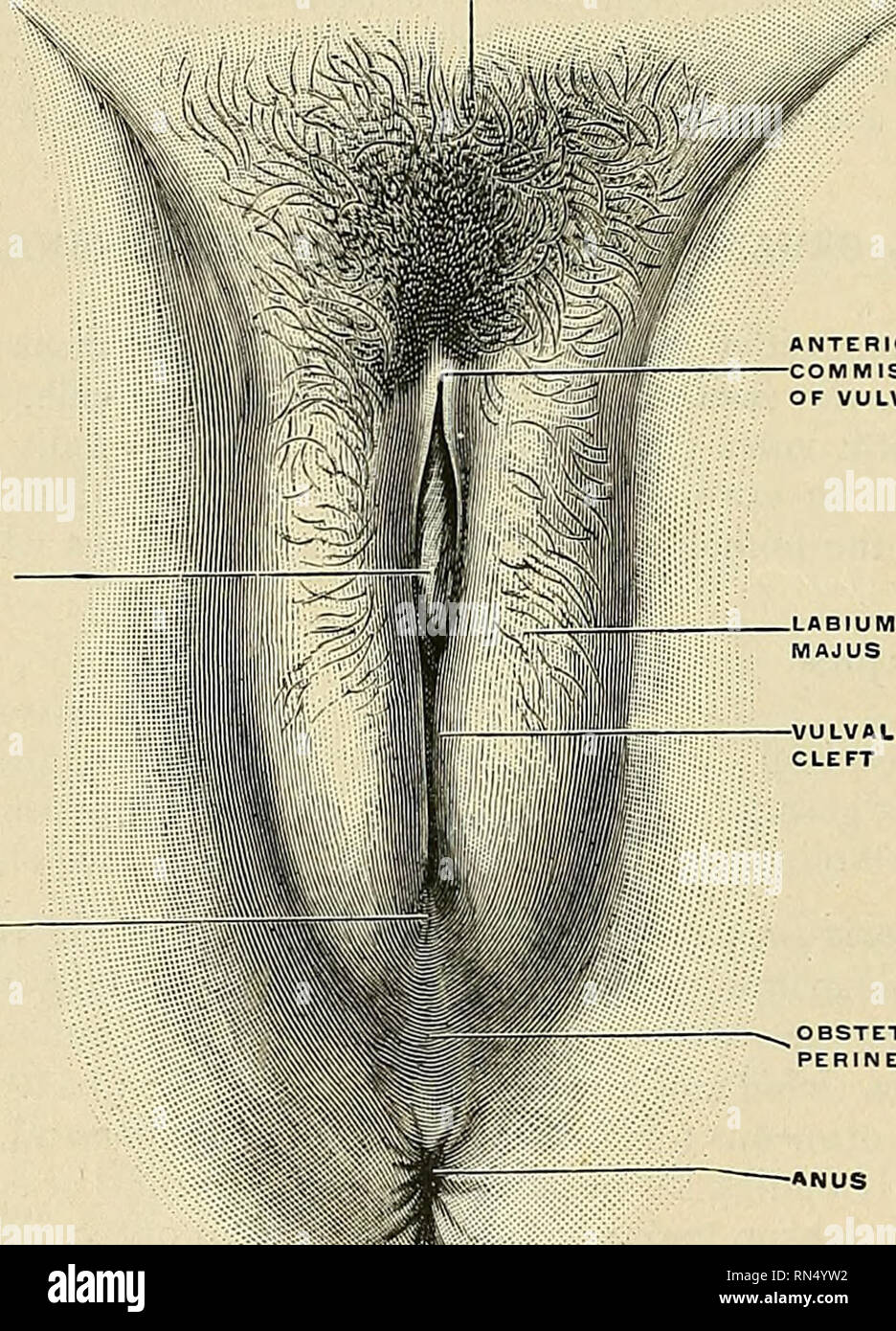 . Anatomy, descriptive and applied. Anatomy. 1416 THE URINOGENITAL ORGANS The labia minora, or nymphse {labia minora pvdendi) (.Figs. 1191, 1192), are two smaller, narrower longitudinal folds, with a delicate covering of modified skin, and usually hidden from view unless the labia majora are separated. They end posteriorly by gradually joining the labia majora, although in the young there is usually a transverse fold, the fourchette or frenulum (Jreimluvi labiorum fiidendi). Traced forward each labium minus divides into an outer and an inner portion or limb. The outer parts of" the two la Stock Photohttps://www.alamy.com/image-license-details/?v=1https://www.alamy.com/anatomy-descriptive-and-applied-anatomy-1416-the-urinogenital-organs-the-labia-minora-or-nymphse-labia-minora-pvdendi-figs-1191-1192-are-two-smaller-narrower-longitudinal-folds-with-a-delicate-covering-of-modified-skin-and-usually-hidden-from-view-unless-the-labia-majora-are-separated-they-end-posteriorly-by-gradually-joining-the-labia-majora-although-in-the-young-there-is-usually-a-transverse-fold-the-fourchette-or-frenulum-jreimluvi-labiorum-fiidendi-traced-forward-each-labium-minus-divides-into-an-outer-and-an-inner-portion-or-limb-the-outer-parts-ofquot-the-two-la-image236752238.html
. Anatomy, descriptive and applied. Anatomy. 1416 THE URINOGENITAL ORGANS The labia minora, or nymphse {labia minora pvdendi) (.Figs. 1191, 1192), are two smaller, narrower longitudinal folds, with a delicate covering of modified skin, and usually hidden from view unless the labia majora are separated. They end posteriorly by gradually joining the labia majora, although in the young there is usually a transverse fold, the fourchette or frenulum (Jreimluvi labiorum fiidendi). Traced forward each labium minus divides into an outer and an inner portion or limb. The outer parts of" the two la Stock Photohttps://www.alamy.com/image-license-details/?v=1https://www.alamy.com/anatomy-descriptive-and-applied-anatomy-1416-the-urinogenital-organs-the-labia-minora-or-nymphse-labia-minora-pvdendi-figs-1191-1192-are-two-smaller-narrower-longitudinal-folds-with-a-delicate-covering-of-modified-skin-and-usually-hidden-from-view-unless-the-labia-majora-are-separated-they-end-posteriorly-by-gradually-joining-the-labia-majora-although-in-the-young-there-is-usually-a-transverse-fold-the-fourchette-or-frenulum-jreimluvi-labiorum-fiidendi-traced-forward-each-labium-minus-divides-into-an-outer-and-an-inner-portion-or-limb-the-outer-parts-ofquot-the-two-la-image236752238.htmlRMRN4YW2–. Anatomy, descriptive and applied. Anatomy. 1416 THE URINOGENITAL ORGANS The labia minora, or nymphse {labia minora pvdendi) (.Figs. 1191, 1192), are two smaller, narrower longitudinal folds, with a delicate covering of modified skin, and usually hidden from view unless the labia majora are separated. They end posteriorly by gradually joining the labia majora, although in the young there is usually a transverse fold, the fourchette or frenulum (Jreimluvi labiorum fiidendi). Traced forward each labium minus divides into an outer and an inner portion or limb. The outer parts of" the two la
 . Biology in America. Biology. til&IXtfc.-.. (Above) A Lung Fish Frtini I'irsson juid ydiuclicrt's Geology, by perniissiou of John Wiley & Sons. (Below) Cladoselache A fossil shark, whose paired fins give evidence of the origin of these structures from a pair of continuous fin folds. From Dean's '' Fishes, Living and Fossil," by permission of the Macmillan Company. out and the parts remaining were modified to form the paired fins of the modern fish. The origin of the vertebrate limb is shrouded in the mists of the past. Whence it came, and how, we may never know; for there are as Stock Photohttps://www.alamy.com/image-license-details/?v=1https://www.alamy.com/biology-in-america-biology-tilampixtfc-above-a-lung-fish-frtini-iirsson-juid-ydiuclicrts-geology-by-perniissiou-of-john-wiley-amp-sons-below-cladoselache-a-fossil-shark-whose-paired-fins-give-evidence-of-the-origin-of-these-structures-from-a-pair-of-continuous-fin-folds-from-deans-fishes-living-and-fossilquot-by-permission-of-the-macmillan-company-out-and-the-parts-remaining-were-modified-to-form-the-paired-fins-of-the-modern-fish-the-origin-of-the-vertebrate-limb-is-shrouded-in-the-mists-of-the-past-whence-it-came-and-how-we-may-never-know-for-there-are-as-image234608477.html
. Biology in America. Biology. til&IXtfc.-.. (Above) A Lung Fish Frtini I'irsson juid ydiuclicrt's Geology, by perniissiou of John Wiley & Sons. (Below) Cladoselache A fossil shark, whose paired fins give evidence of the origin of these structures from a pair of continuous fin folds. From Dean's '' Fishes, Living and Fossil," by permission of the Macmillan Company. out and the parts remaining were modified to form the paired fins of the modern fish. The origin of the vertebrate limb is shrouded in the mists of the past. Whence it came, and how, we may never know; for there are as Stock Photohttps://www.alamy.com/image-license-details/?v=1https://www.alamy.com/biology-in-america-biology-tilampixtfc-above-a-lung-fish-frtini-iirsson-juid-ydiuclicrts-geology-by-perniissiou-of-john-wiley-amp-sons-below-cladoselache-a-fossil-shark-whose-paired-fins-give-evidence-of-the-origin-of-these-structures-from-a-pair-of-continuous-fin-folds-from-deans-fishes-living-and-fossilquot-by-permission-of-the-macmillan-company-out-and-the-parts-remaining-were-modified-to-form-the-paired-fins-of-the-modern-fish-the-origin-of-the-vertebrate-limb-is-shrouded-in-the-mists-of-the-past-whence-it-came-and-how-we-may-never-know-for-there-are-as-image234608477.htmlRMRHK9E5–. Biology in America. Biology. til&IXtfc.-.. (Above) A Lung Fish Frtini I'irsson juid ydiuclicrt's Geology, by perniissiou of John Wiley & Sons. (Below) Cladoselache A fossil shark, whose paired fins give evidence of the origin of these structures from a pair of continuous fin folds. From Dean's '' Fishes, Living and Fossil," by permission of the Macmillan Company. out and the parts remaining were modified to form the paired fins of the modern fish. The origin of the vertebrate limb is shrouded in the mists of the past. Whence it came, and how, we may never know; for there are as
![. A textbook of invertebrate morphology [microform]. Invertebrates; Morphology (Animals); Invertébrés; Morphologie (Animaux). Fia. ^9.—Asellu8 communis, Diagram op STnucruiiE. ab = abdominal appendages. l = liver-ciBcn. (10 = aoila. tnnp = maudibular palp. «<• = antennule. mxp = maxilliped. at- = auteiina. r = rectum. ce = cerebral ganglion. « = stomucli. ch = chelate limb. t = tiioracic appendage. ht = heart. mi = veutial uerve-coid. modified. The genus Bopyrus, which lives in the branchial cavity of shrimps, becomes in the female some hat distorted in shape and asymmetrical, and the mo Stock Photo . A textbook of invertebrate morphology [microform]. Invertebrates; Morphology (Animals); Invertébrés; Morphologie (Animaux). Fia. ^9.—Asellu8 communis, Diagram op STnucruiiE. ab = abdominal appendages. l = liver-ciBcn. (10 = aoila. tnnp = maudibular palp. «<• = antennule. mxp = maxilliped. at- = auteiina. r = rectum. ce = cerebral ganglion. « = stomucli. ch = chelate limb. t = tiioracic appendage. ht = heart. mi = veutial uerve-coid. modified. The genus Bopyrus, which lives in the branchial cavity of shrimps, becomes in the female some hat distorted in shape and asymmetrical, and the mo Stock Photo](https://c8.alamy.com/comp/REP3JM/a-textbook-of-invertebrate-morphology-microform-invertebrates-morphology-animals-invertbrs-morphologie-animaux-fia-9asellu8-communis-diagram-op-stnucruiie-ab-=-abdominal-appendages-l-=-liver-cibcn-10-=-aoila-tnnp-=-maudibular-palp-lt-=-antennule-mxp-=-maxilliped-at-=-auteiina-r-=-rectum-ce-=-cerebral-ganglion-=-stomucli-ch-=-chelate-limb-t-=-tiioracic-appendage-ht-=-heart-mi-=-veutial-uerve-coid-modified-the-genus-bopyrus-which-lives-in-the-branchial-cavity-of-shrimps-becomes-in-the-female-some-hat-distorted-in-shape-and-asymmetrical-and-the-mo-REP3JM.jpg) . A textbook of invertebrate morphology [microform]. Invertebrates; Morphology (Animals); Invertébrés; Morphologie (Animaux). Fia. ^9.—Asellu8 communis, Diagram op STnucruiiE. ab = abdominal appendages. l = liver-ciBcn. (10 = aoila. tnnp = maudibular palp. «<• = antennule. mxp = maxilliped. at- = auteiina. r = rectum. ce = cerebral ganglion. « = stomucli. ch = chelate limb. t = tiioracic appendage. ht = heart. mi = veutial uerve-coid. modified. The genus Bopyrus, which lives in the branchial cavity of shrimps, becomes in the female some hat distorted in shape and asymmetrical, and the mo Stock Photohttps://www.alamy.com/image-license-details/?v=1https://www.alamy.com/a-textbook-of-invertebrate-morphology-microform-invertebrates-morphology-animals-invertbrs-morphologie-animaux-fia-9asellu8-communis-diagram-op-stnucruiie-ab-=-abdominal-appendages-l-=-liver-cibcn-10-=-aoila-tnnp-=-maudibular-palp-lt-=-antennule-mxp-=-maxilliped-at-=-auteiina-r-=-rectum-ce-=-cerebral-ganglion-=-stomucli-ch-=-chelate-limb-t-=-tiioracic-appendage-ht-=-heart-mi-=-veutial-uerve-coid-modified-the-genus-bopyrus-which-lives-in-the-branchial-cavity-of-shrimps-becomes-in-the-female-some-hat-distorted-in-shape-and-asymmetrical-and-the-mo-image232825788.html
. A textbook of invertebrate morphology [microform]. Invertebrates; Morphology (Animals); Invertébrés; Morphologie (Animaux). Fia. ^9.—Asellu8 communis, Diagram op STnucruiiE. ab = abdominal appendages. l = liver-ciBcn. (10 = aoila. tnnp = maudibular palp. «<• = antennule. mxp = maxilliped. at- = auteiina. r = rectum. ce = cerebral ganglion. « = stomucli. ch = chelate limb. t = tiioracic appendage. ht = heart. mi = veutial uerve-coid. modified. The genus Bopyrus, which lives in the branchial cavity of shrimps, becomes in the female some hat distorted in shape and asymmetrical, and the mo Stock Photohttps://www.alamy.com/image-license-details/?v=1https://www.alamy.com/a-textbook-of-invertebrate-morphology-microform-invertebrates-morphology-animals-invertbrs-morphologie-animaux-fia-9asellu8-communis-diagram-op-stnucruiie-ab-=-abdominal-appendages-l-=-liver-cibcn-10-=-aoila-tnnp-=-maudibular-palp-lt-=-antennule-mxp-=-maxilliped-at-=-auteiina-r-=-rectum-ce-=-cerebral-ganglion-=-stomucli-ch-=-chelate-limb-t-=-tiioracic-appendage-ht-=-heart-mi-=-veutial-uerve-coid-modified-the-genus-bopyrus-which-lives-in-the-branchial-cavity-of-shrimps-becomes-in-the-female-some-hat-distorted-in-shape-and-asymmetrical-and-the-mo-image232825788.htmlRMREP3JM–. A textbook of invertebrate morphology [microform]. Invertebrates; Morphology (Animals); Invertébrés; Morphologie (Animaux). Fia. ^9.—Asellu8 communis, Diagram op STnucruiiE. ab = abdominal appendages. l = liver-ciBcn. (10 = aoila. tnnp = maudibular palp. «<• = antennule. mxp = maxilliped. at- = auteiina. r = rectum. ce = cerebral ganglion. « = stomucli. ch = chelate limb. t = tiioracic appendage. ht = heart. mi = veutial uerve-coid. modified. The genus Bopyrus, which lives in the branchial cavity of shrimps, becomes in the female some hat distorted in shape and asymmetrical, and the mo
 . The anatomy of the domestic animals. Veterinary anatomy. 226 THE ARTICULATIONS OF THE HORSE considerable elasticit.v, aiicl is tlie highly modified interosseous inedius muscle. It consists mainly of tendinous tissue, but contains a variable amount of striped mus- cular tissue, especially in its deep part and in young subjects. Its principal func- tion is to support the fetlock, i. e., to prevent excessive dorsal flexion of the joint when the weight is put on the limb. The branches which join the common exten- sor tendon limit volar flexion of the interphalangeal joints in certain phases of m Stock Photohttps://www.alamy.com/image-license-details/?v=1https://www.alamy.com/the-anatomy-of-the-domestic-animals-veterinary-anatomy-226-the-articulations-of-the-horse-considerable-elasticitv-aiicl-is-tlie-highly-modified-interosseous-inedius-muscle-it-consists-mainly-of-tendinous-tissue-but-contains-a-variable-amount-of-striped-mus-cular-tissue-especially-in-its-deep-part-and-in-young-subjects-its-principal-func-tion-is-to-support-the-fetlock-i-e-to-prevent-excessive-dorsal-flexion-of-the-joint-when-the-weight-is-put-on-the-limb-the-branches-which-join-the-common-exten-sor-tendon-limit-volar-flexion-of-the-interphalangeal-joints-in-certain-phases-of-m-image236762928.html
. The anatomy of the domestic animals. Veterinary anatomy. 226 THE ARTICULATIONS OF THE HORSE considerable elasticit.v, aiicl is tlie highly modified interosseous inedius muscle. It consists mainly of tendinous tissue, but contains a variable amount of striped mus- cular tissue, especially in its deep part and in young subjects. Its principal func- tion is to support the fetlock, i. e., to prevent excessive dorsal flexion of the joint when the weight is put on the limb. The branches which join the common exten- sor tendon limit volar flexion of the interphalangeal joints in certain phases of m Stock Photohttps://www.alamy.com/image-license-details/?v=1https://www.alamy.com/the-anatomy-of-the-domestic-animals-veterinary-anatomy-226-the-articulations-of-the-horse-considerable-elasticitv-aiicl-is-tlie-highly-modified-interosseous-inedius-muscle-it-consists-mainly-of-tendinous-tissue-but-contains-a-variable-amount-of-striped-mus-cular-tissue-especially-in-its-deep-part-and-in-young-subjects-its-principal-func-tion-is-to-support-the-fetlock-i-e-to-prevent-excessive-dorsal-flexion-of-the-joint-when-the-weight-is-put-on-the-limb-the-branches-which-join-the-common-exten-sor-tendon-limit-volar-flexion-of-the-interphalangeal-joints-in-certain-phases-of-m-image236762928.htmlRMRN5DET–. The anatomy of the domestic animals. Veterinary anatomy. 226 THE ARTICULATIONS OF THE HORSE considerable elasticit.v, aiicl is tlie highly modified interosseous inedius muscle. It consists mainly of tendinous tissue, but contains a variable amount of striped mus- cular tissue, especially in its deep part and in young subjects. Its principal func- tion is to support the fetlock, i. e., to prevent excessive dorsal flexion of the joint when the weight is put on the limb. The branches which join the common exten- sor tendon limit volar flexion of the interphalangeal joints in certain phases of m
 . Bulletin. Natural history; Natuurlijke historie. posterior ir-limb of Pa crescent -Me Fig. 7. Theories on the nomenclature of uintathere molars. A. Cope 1884, B. Cope 1888, C. Wood 1923 (present day viewpoint), D. Matthew 1928. He later modified this and noted that the hypoconid crest of Uintatherium shears in front of the posterior loph of the upper molar. In Pantolambda it is the anterior limb of the talonid loph (corresponding to the hypoconid crest) which shears in front of the posterior limb of the anterior V of the upper molar. He concluded that the posterior loph of the Uintatherium u Stock Photohttps://www.alamy.com/image-license-details/?v=1https://www.alamy.com/bulletin-natural-history-natuurlijke-historie-posterior-ir-limb-of-pa-crescent-me-fig-7-theories-on-the-nomenclature-of-uintathere-molars-a-cope-1884-b-cope-1888-c-wood-1923-present-day-viewpoint-d-matthew-1928-he-later-modified-this-and-noted-that-the-hypoconid-crest-of-uintatherium-shears-in-front-of-the-posterior-loph-of-the-upper-molar-in-pantolambda-it-is-the-anterior-limb-of-the-talonid-loph-corresponding-to-the-hypoconid-crest-which-shears-in-front-of-the-posterior-limb-of-the-anterior-v-of-the-upper-molar-he-concluded-that-the-posterior-loph-of-the-uintatherium-u-image234225795.html
. Bulletin. Natural history; Natuurlijke historie. posterior ir-limb of Pa crescent -Me Fig. 7. Theories on the nomenclature of uintathere molars. A. Cope 1884, B. Cope 1888, C. Wood 1923 (present day viewpoint), D. Matthew 1928. He later modified this and noted that the hypoconid crest of Uintatherium shears in front of the posterior loph of the upper molar. In Pantolambda it is the anterior limb of the talonid loph (corresponding to the hypoconid crest) which shears in front of the posterior limb of the anterior V of the upper molar. He concluded that the posterior loph of the Uintatherium u Stock Photohttps://www.alamy.com/image-license-details/?v=1https://www.alamy.com/bulletin-natural-history-natuurlijke-historie-posterior-ir-limb-of-pa-crescent-me-fig-7-theories-on-the-nomenclature-of-uintathere-molars-a-cope-1884-b-cope-1888-c-wood-1923-present-day-viewpoint-d-matthew-1928-he-later-modified-this-and-noted-that-the-hypoconid-crest-of-uintatherium-shears-in-front-of-the-posterior-loph-of-the-upper-molar-in-pantolambda-it-is-the-anterior-limb-of-the-talonid-loph-corresponding-to-the-hypoconid-crest-which-shears-in-front-of-the-posterior-limb-of-the-anterior-v-of-the-upper-molar-he-concluded-that-the-posterior-loph-of-the-uintatherium-u-image234225795.htmlRMRH1WAY–. Bulletin. Natural history; Natuurlijke historie. posterior ir-limb of Pa crescent -Me Fig. 7. Theories on the nomenclature of uintathere molars. A. Cope 1884, B. Cope 1888, C. Wood 1923 (present day viewpoint), D. Matthew 1928. He later modified this and noted that the hypoconid crest of Uintatherium shears in front of the posterior loph of the upper molar. In Pantolambda it is the anterior limb of the talonid loph (corresponding to the hypoconid crest) which shears in front of the posterior limb of the anterior V of the upper molar. He concluded that the posterior loph of the Uintatherium u
 . Bulletin - United States National Museum. Science. A REVIEW OF THE MYSIDACEA 73 center and a single pair of long lateral spines; the exopod of the uropods longer than the endopods with more than half of the margin of the proximal joint furnished with spines; spines along the distal third of the lateral margins of the telson irregular, with smaller spines in series between the larger spines; both rami of both the third and fourth pairs of pleopods of the male with modified distal setae;. Figure 18.—Siriella rooscvelti Tattersall: a, Antennal scale and peduncle, X 45; b, third thoracic limb, X Stock Photohttps://www.alamy.com/image-license-details/?v=1https://www.alamy.com/bulletin-united-states-national-museum-science-a-review-of-the-mysidacea-73-center-and-a-single-pair-of-long-lateral-spines-the-exopod-of-the-uropods-longer-than-the-endopods-with-more-than-half-of-the-margin-of-the-proximal-joint-furnished-with-spines-spines-along-the-distal-third-of-the-lateral-margins-of-the-telson-irregular-with-smaller-spines-in-series-between-the-larger-spines-both-rami-of-both-the-third-and-fourth-pairs-of-pleopods-of-the-male-with-modified-distal-setae-figure-18siriella-rooscvelti-tattersall-a-antennal-scale-and-peduncle-x-45-b-third-thoracic-limb-x-image233737455.html
. Bulletin - United States National Museum. Science. A REVIEW OF THE MYSIDACEA 73 center and a single pair of long lateral spines; the exopod of the uropods longer than the endopods with more than half of the margin of the proximal joint furnished with spines; spines along the distal third of the lateral margins of the telson irregular, with smaller spines in series between the larger spines; both rami of both the third and fourth pairs of pleopods of the male with modified distal setae;. Figure 18.—Siriella rooscvelti Tattersall: a, Antennal scale and peduncle, X 45; b, third thoracic limb, X Stock Photohttps://www.alamy.com/image-license-details/?v=1https://www.alamy.com/bulletin-united-states-national-museum-science-a-review-of-the-mysidacea-73-center-and-a-single-pair-of-long-lateral-spines-the-exopod-of-the-uropods-longer-than-the-endopods-with-more-than-half-of-the-margin-of-the-proximal-joint-furnished-with-spines-spines-along-the-distal-third-of-the-lateral-margins-of-the-telson-irregular-with-smaller-spines-in-series-between-the-larger-spines-both-rami-of-both-the-third-and-fourth-pairs-of-pleopods-of-the-male-with-modified-distal-setae-figure-18siriella-rooscvelti-tattersall-a-antennal-scale-and-peduncle-x-45-b-third-thoracic-limb-x-image233737455.htmlRMRG7JE7–. Bulletin - United States National Museum. Science. A REVIEW OF THE MYSIDACEA 73 center and a single pair of long lateral spines; the exopod of the uropods longer than the endopods with more than half of the margin of the proximal joint furnished with spines; spines along the distal third of the lateral margins of the telson irregular, with smaller spines in series between the larger spines; both rami of both the third and fourth pairs of pleopods of the male with modified distal setae;. Figure 18.—Siriella rooscvelti Tattersall: a, Antennal scale and peduncle, X 45; b, third thoracic limb, X
 . Chordate morphology. Morphology (Animals); Chordata. several lines of modification. One line acquired an anterior spine, and, through continued basal concentration, the spine alone remained and increased in size. The jointed limb of the antiarch is a modified spine. WestoU (Figure 6-71) has documented a rather different sequence beginning with rather heavily armored types with long spines and no fins, to types with reduced spines and small fins, to types lacking the spine but with a large fin. The fin of the antiarch is a derivative of the primitive spined conditon (Figure 6-72). Westoll bas Stock Photohttps://www.alamy.com/image-license-details/?v=1https://www.alamy.com/chordate-morphology-morphology-animals-chordata-several-lines-of-modification-one-line-acquired-an-anterior-spine-and-through-continued-basal-concentration-the-spine-alone-remained-and-increased-in-size-the-jointed-limb-of-the-antiarch-is-a-modified-spine-westou-figure-6-71-has-documented-a-rather-different-sequence-beginning-with-rather-heavily-armored-types-with-long-spines-and-no-fins-to-types-with-reduced-spines-and-small-fins-to-types-lacking-the-spine-but-with-a-large-fin-the-fin-of-the-antiarch-is-a-derivative-of-the-primitive-spined-conditon-figure-6-72-westoll-bas-image234892430.html
. Chordate morphology. Morphology (Animals); Chordata. several lines of modification. One line acquired an anterior spine, and, through continued basal concentration, the spine alone remained and increased in size. The jointed limb of the antiarch is a modified spine. WestoU (Figure 6-71) has documented a rather different sequence beginning with rather heavily armored types with long spines and no fins, to types with reduced spines and small fins, to types lacking the spine but with a large fin. The fin of the antiarch is a derivative of the primitive spined conditon (Figure 6-72). Westoll bas Stock Photohttps://www.alamy.com/image-license-details/?v=1https://www.alamy.com/chordate-morphology-morphology-animals-chordata-several-lines-of-modification-one-line-acquired-an-anterior-spine-and-through-continued-basal-concentration-the-spine-alone-remained-and-increased-in-size-the-jointed-limb-of-the-antiarch-is-a-modified-spine-westou-figure-6-71-has-documented-a-rather-different-sequence-beginning-with-rather-heavily-armored-types-with-long-spines-and-no-fins-to-types-with-reduced-spines-and-small-fins-to-types-lacking-the-spine-but-with-a-large-fin-the-fin-of-the-antiarch-is-a-derivative-of-the-primitive-spined-conditon-figure-6-72-westoll-bas-image234892430.htmlRMRJ47KA–. Chordate morphology. Morphology (Animals); Chordata. several lines of modification. One line acquired an anterior spine, and, through continued basal concentration, the spine alone remained and increased in size. The jointed limb of the antiarch is a modified spine. WestoU (Figure 6-71) has documented a rather different sequence beginning with rather heavily armored types with long spines and no fins, to types with reduced spines and small fins, to types lacking the spine but with a large fin. The fin of the antiarch is a derivative of the primitive spined conditon (Figure 6-72). Westoll bas
 . Beginners zoology. Zoology. Fig. 400.— Chimpanzee. (See Fig. 406.) Illustrated Study of Vertebrate Skeletons: Taking man's skeleton as complete, which of these seven skeletons is most incomplete ? Regarding the fish skeleton as the original verte- brate skeleton, how has it been modified for (i) walking, (2) walking on two legs, (3) flying? Which skeleton is probably a degenerate reversion to original type ? (p. 209.) How is the horse specialized for sp)eed ? Do all have tail vertebrae, or vertebrae beyond hhe hip bones ? Does each have shoulder blades ? Compare (i) fore limbs, (2) hind limb Stock Photohttps://www.alamy.com/image-license-details/?v=1https://www.alamy.com/beginners-zoology-zoology-fig-400-chimpanzee-see-fig-406-illustrated-study-of-vertebrate-skeletons-taking-mans-skeleton-as-complete-which-of-these-seven-skeletons-is-most-incomplete-regarding-the-fish-skeleton-as-the-original-verte-brate-skeleton-how-has-it-been-modified-for-i-walking-2-walking-on-two-legs-3-flying-which-skeleton-is-probably-a-degenerate-reversion-to-original-type-p-209-how-is-the-horse-specialized-for-speed-do-all-have-tail-vertebrae-or-vertebrae-beyond-hhe-hip-bones-does-each-have-shoulder-blades-compare-i-fore-limbs-2-hind-limb-image234769324.html
. Beginners zoology. Zoology. Fig. 400.— Chimpanzee. (See Fig. 406.) Illustrated Study of Vertebrate Skeletons: Taking man's skeleton as complete, which of these seven skeletons is most incomplete ? Regarding the fish skeleton as the original verte- brate skeleton, how has it been modified for (i) walking, (2) walking on two legs, (3) flying? Which skeleton is probably a degenerate reversion to original type ? (p. 209.) How is the horse specialized for sp)eed ? Do all have tail vertebrae, or vertebrae beyond hhe hip bones ? Does each have shoulder blades ? Compare (i) fore limbs, (2) hind limb Stock Photohttps://www.alamy.com/image-license-details/?v=1https://www.alamy.com/beginners-zoology-zoology-fig-400-chimpanzee-see-fig-406-illustrated-study-of-vertebrate-skeletons-taking-mans-skeleton-as-complete-which-of-these-seven-skeletons-is-most-incomplete-regarding-the-fish-skeleton-as-the-original-verte-brate-skeleton-how-has-it-been-modified-for-i-walking-2-walking-on-two-legs-3-flying-which-skeleton-is-probably-a-degenerate-reversion-to-original-type-p-209-how-is-the-horse-specialized-for-speed-do-all-have-tail-vertebrae-or-vertebrae-beyond-hhe-hip-bones-does-each-have-shoulder-blades-compare-i-fore-limbs-2-hind-limb-image234769324.htmlRMRHXJJM–. Beginners zoology. Zoology. Fig. 400.— Chimpanzee. (See Fig. 406.) Illustrated Study of Vertebrate Skeletons: Taking man's skeleton as complete, which of these seven skeletons is most incomplete ? Regarding the fish skeleton as the original verte- brate skeleton, how has it been modified for (i) walking, (2) walking on two legs, (3) flying? Which skeleton is probably a degenerate reversion to original type ? (p. 209.) How is the horse specialized for sp)eed ? Do all have tail vertebrae, or vertebrae beyond hhe hip bones ? Does each have shoulder blades ? Compare (i) fore limbs, (2) hind limb
![. Elementary text-book of zoology [electronic resource]. Zoology. 478 CHORD ATA. membrane is present in the front limb, none in the hind. The tail is flat and in old specimens, the hair is absent from its lower surface. In habits the duckmole is " fossorial" and "aquatic." It swims freely and lives in deep burrows in river-banks. At the end of its burrow it constructs a nest in which it lays its eggs. There are no teats and the mammary glands are modified sudorific glands. The teeth are only present in the young and adolescent forms, and Fig. 297.—Fore (A) and Hind (B) Foot Stock Photo . Elementary text-book of zoology [electronic resource]. Zoology. 478 CHORD ATA. membrane is present in the front limb, none in the hind. The tail is flat and in old specimens, the hair is absent from its lower surface. In habits the duckmole is " fossorial" and "aquatic." It swims freely and lives in deep burrows in river-banks. At the end of its burrow it constructs a nest in which it lays its eggs. There are no teats and the mammary glands are modified sudorific glands. The teeth are only present in the young and adolescent forms, and Fig. 297.—Fore (A) and Hind (B) Foot Stock Photo](https://c8.alamy.com/comp/RJN80D/elementary-text-book-of-zoology-electronic-resource-zoology-478-chord-ata-membrane-is-present-in-the-front-limb-none-in-the-hind-the-tail-is-flat-and-in-old-specimens-the-hair-is-absent-from-its-lower-surface-in-habits-the-duckmole-is-quot-fossorialquot-and-quotaquaticquot-it-swims-freely-and-lives-in-deep-burrows-in-river-banks-at-the-end-of-its-burrow-it-constructs-a-nest-in-which-it-lays-its-eggs-there-are-no-teats-and-the-mammary-glands-are-modified-sudorific-glands-the-teeth-are-only-present-in-the-young-and-adolescent-forms-and-fig-297fore-a-and-hind-b-foot-RJN80D.jpg) . Elementary text-book of zoology [electronic resource]. Zoology. 478 CHORD ATA. membrane is present in the front limb, none in the hind. The tail is flat and in old specimens, the hair is absent from its lower surface. In habits the duckmole is " fossorial" and "aquatic." It swims freely and lives in deep burrows in river-banks. At the end of its burrow it constructs a nest in which it lays its eggs. There are no teats and the mammary glands are modified sudorific glands. The teeth are only present in the young and adolescent forms, and Fig. 297.—Fore (A) and Hind (B) Foot Stock Photohttps://www.alamy.com/image-license-details/?v=1https://www.alamy.com/elementary-text-book-of-zoology-electronic-resource-zoology-478-chord-ata-membrane-is-present-in-the-front-limb-none-in-the-hind-the-tail-is-flat-and-in-old-specimens-the-hair-is-absent-from-its-lower-surface-in-habits-the-duckmole-is-quot-fossorialquot-and-quotaquaticquot-it-swims-freely-and-lives-in-deep-burrows-in-river-banks-at-the-end-of-its-burrow-it-constructs-a-nest-in-which-it-lays-its-eggs-there-are-no-teats-and-the-mammary-glands-are-modified-sudorific-glands-the-teeth-are-only-present-in-the-young-and-adolescent-forms-and-fig-297fore-a-and-hind-b-foot-image235265869.html
. Elementary text-book of zoology [electronic resource]. Zoology. 478 CHORD ATA. membrane is present in the front limb, none in the hind. The tail is flat and in old specimens, the hair is absent from its lower surface. In habits the duckmole is " fossorial" and "aquatic." It swims freely and lives in deep burrows in river-banks. At the end of its burrow it constructs a nest in which it lays its eggs. There are no teats and the mammary glands are modified sudorific glands. The teeth are only present in the young and adolescent forms, and Fig. 297.—Fore (A) and Hind (B) Foot Stock Photohttps://www.alamy.com/image-license-details/?v=1https://www.alamy.com/elementary-text-book-of-zoology-electronic-resource-zoology-478-chord-ata-membrane-is-present-in-the-front-limb-none-in-the-hind-the-tail-is-flat-and-in-old-specimens-the-hair-is-absent-from-its-lower-surface-in-habits-the-duckmole-is-quot-fossorialquot-and-quotaquaticquot-it-swims-freely-and-lives-in-deep-burrows-in-river-banks-at-the-end-of-its-burrow-it-constructs-a-nest-in-which-it-lays-its-eggs-there-are-no-teats-and-the-mammary-glands-are-modified-sudorific-glands-the-teeth-are-only-present-in-the-young-and-adolescent-forms-and-fig-297fore-a-and-hind-b-foot-image235265869.htmlRMRJN80D–. Elementary text-book of zoology [electronic resource]. Zoology. 478 CHORD ATA. membrane is present in the front limb, none in the hind. The tail is flat and in old specimens, the hair is absent from its lower surface. In habits the duckmole is " fossorial" and "aquatic." It swims freely and lives in deep burrows in river-banks. At the end of its burrow it constructs a nest in which it lays its eggs. There are no teats and the mammary glands are modified sudorific glands. The teeth are only present in the young and adolescent forms, and Fig. 297.—Fore (A) and Hind (B) Foot
 . Comparative embryology of the vertebrates; with 2057 drawings and photos. grouped as 380 illus. Vertebrates -- Embryology; Comparative embryology. ZONE OF CARTILAGE I'll EROSION ARTICULAR CARTILAGE Ul APH YSIS PERIOSTEUM Fig. 324. Development of long bones of the appendages. (B and E have been modified to show conditions present in the fore- and hind appendages at about 8 weeks. For de- tailed description of limb development consult Bardeen, '05, Am. J. Anat., 4; Lewis, '02, Am. J. Anat., 2.) (A) Forelimb at II mm. (B) Forelimb at about eighth week, showing centers of ossification in humerus Stock Photohttps://www.alamy.com/image-license-details/?v=1https://www.alamy.com/comparative-embryology-of-the-vertebrates-with-2057-drawings-and-photos-grouped-as-380-illus-vertebrates-embryology-comparative-embryology-zone-of-cartilage-ill-erosion-articular-cartilage-ul-aph-ysis-periosteum-fig-324-development-of-long-bones-of-the-appendages-b-and-e-have-been-modified-to-show-conditions-present-in-the-fore-and-hind-appendages-at-about-8-weeks-for-de-tailed-description-of-limb-development-consult-bardeen-05-am-j-anat-4-lewis-02-am-j-anat-2-a-forelimb-at-ii-mm-b-forelimb-at-about-eighth-week-showing-centers-of-ossification-in-humerus-image232674394.html
. Comparative embryology of the vertebrates; with 2057 drawings and photos. grouped as 380 illus. Vertebrates -- Embryology; Comparative embryology. ZONE OF CARTILAGE I'll EROSION ARTICULAR CARTILAGE Ul APH YSIS PERIOSTEUM Fig. 324. Development of long bones of the appendages. (B and E have been modified to show conditions present in the fore- and hind appendages at about 8 weeks. For de- tailed description of limb development consult Bardeen, '05, Am. J. Anat., 4; Lewis, '02, Am. J. Anat., 2.) (A) Forelimb at II mm. (B) Forelimb at about eighth week, showing centers of ossification in humerus Stock Photohttps://www.alamy.com/image-license-details/?v=1https://www.alamy.com/comparative-embryology-of-the-vertebrates-with-2057-drawings-and-photos-grouped-as-380-illus-vertebrates-embryology-comparative-embryology-zone-of-cartilage-ill-erosion-articular-cartilage-ul-aph-ysis-periosteum-fig-324-development-of-long-bones-of-the-appendages-b-and-e-have-been-modified-to-show-conditions-present-in-the-fore-and-hind-appendages-at-about-8-weeks-for-de-tailed-description-of-limb-development-consult-bardeen-05-am-j-anat-4-lewis-02-am-j-anat-2-a-forelimb-at-ii-mm-b-forelimb-at-about-eighth-week-showing-centers-of-ossification-in-humerus-image232674394.htmlRMREF6FP–. Comparative embryology of the vertebrates; with 2057 drawings and photos. grouped as 380 illus. Vertebrates -- Embryology; Comparative embryology. ZONE OF CARTILAGE I'll EROSION ARTICULAR CARTILAGE Ul APH YSIS PERIOSTEUM Fig. 324. Development of long bones of the appendages. (B and E have been modified to show conditions present in the fore- and hind appendages at about 8 weeks. For de- tailed description of limb development consult Bardeen, '05, Am. J. Anat., 4; Lewis, '02, Am. J. Anat., 2.) (A) Forelimb at II mm. (B) Forelimb at about eighth week, showing centers of ossification in humerus
![. A text-book of embryology for students of medicine [electronic resource]. Embryology; Embryology. THE DEVELOPMENT OF THE HEART. 155 limb of the S lies caudad and toward the left, the arterial seg- ment being directed headward and toward the right, so that. Fig. 75.—Diagrams illustrating arrangement of primitive heart and aortic arches (modified from Allen Thomson): 1, vitelline veins returning blood from vascular area; 2, venous segment of heart-tube; 3, primitive ventricle; 4, truncus arteriosus; 5, 5, upper and lower primitive aortse; 5', 5 continuation of double aortse as vessels to caud Stock Photo . A text-book of embryology for students of medicine [electronic resource]. Embryology; Embryology. THE DEVELOPMENT OF THE HEART. 155 limb of the S lies caudad and toward the left, the arterial seg- ment being directed headward and toward the right, so that. Fig. 75.—Diagrams illustrating arrangement of primitive heart and aortic arches (modified from Allen Thomson): 1, vitelline veins returning blood from vascular area; 2, venous segment of heart-tube; 3, primitive ventricle; 4, truncus arteriosus; 5, 5, upper and lower primitive aortse; 5', 5 continuation of double aortse as vessels to caud Stock Photo](https://c8.alamy.com/comp/RJNCT6/a-text-book-of-embryology-for-students-of-medicine-electronic-resource-embryology-embryology-the-development-of-the-heart-155-limb-of-the-s-lies-caudad-and-toward-the-left-the-arterial-seg-ment-being-directed-headward-and-toward-the-right-so-that-fig-75diagrams-illustrating-arrangement-of-primitive-heart-and-aortic-arches-modified-from-allen-thomson-1-vitelline-veins-returning-blood-from-vascular-area-2-venous-segment-of-heart-tube-3-primitive-ventricle-4-truncus-arteriosus-5-5-upper-and-lower-primitive-aortse-5-5-continuation-of-double-aortse-as-vessels-to-caud-RJNCT6.jpg) . A text-book of embryology for students of medicine [electronic resource]. Embryology; Embryology. THE DEVELOPMENT OF THE HEART. 155 limb of the S lies caudad and toward the left, the arterial seg- ment being directed headward and toward the right, so that. Fig. 75.—Diagrams illustrating arrangement of primitive heart and aortic arches (modified from Allen Thomson): 1, vitelline veins returning blood from vascular area; 2, venous segment of heart-tube; 3, primitive ventricle; 4, truncus arteriosus; 5, 5, upper and lower primitive aortse; 5', 5 continuation of double aortse as vessels to caud Stock Photohttps://www.alamy.com/image-license-details/?v=1https://www.alamy.com/a-text-book-of-embryology-for-students-of-medicine-electronic-resource-embryology-embryology-the-development-of-the-heart-155-limb-of-the-s-lies-caudad-and-toward-the-left-the-arterial-seg-ment-being-directed-headward-and-toward-the-right-so-that-fig-75diagrams-illustrating-arrangement-of-primitive-heart-and-aortic-arches-modified-from-allen-thomson-1-vitelline-veins-returning-blood-from-vascular-area-2-venous-segment-of-heart-tube-3-primitive-ventricle-4-truncus-arteriosus-5-5-upper-and-lower-primitive-aortse-5-5-continuation-of-double-aortse-as-vessels-to-caud-image235269670.html
. A text-book of embryology for students of medicine [electronic resource]. Embryology; Embryology. THE DEVELOPMENT OF THE HEART. 155 limb of the S lies caudad and toward the left, the arterial seg- ment being directed headward and toward the right, so that. Fig. 75.—Diagrams illustrating arrangement of primitive heart and aortic arches (modified from Allen Thomson): 1, vitelline veins returning blood from vascular area; 2, venous segment of heart-tube; 3, primitive ventricle; 4, truncus arteriosus; 5, 5, upper and lower primitive aortse; 5', 5 continuation of double aortse as vessels to caud Stock Photohttps://www.alamy.com/image-license-details/?v=1https://www.alamy.com/a-text-book-of-embryology-for-students-of-medicine-electronic-resource-embryology-embryology-the-development-of-the-heart-155-limb-of-the-s-lies-caudad-and-toward-the-left-the-arterial-seg-ment-being-directed-headward-and-toward-the-right-so-that-fig-75diagrams-illustrating-arrangement-of-primitive-heart-and-aortic-arches-modified-from-allen-thomson-1-vitelline-veins-returning-blood-from-vascular-area-2-venous-segment-of-heart-tube-3-primitive-ventricle-4-truncus-arteriosus-5-5-upper-and-lower-primitive-aortse-5-5-continuation-of-double-aortse-as-vessels-to-caud-image235269670.htmlRMRJNCT6–. A text-book of embryology for students of medicine [electronic resource]. Embryology; Embryology. THE DEVELOPMENT OF THE HEART. 155 limb of the S lies caudad and toward the left, the arterial seg- ment being directed headward and toward the right, so that. Fig. 75.—Diagrams illustrating arrangement of primitive heart and aortic arches (modified from Allen Thomson): 1, vitelline veins returning blood from vascular area; 2, venous segment of heart-tube; 3, primitive ventricle; 4, truncus arteriosus; 5, 5, upper and lower primitive aortse; 5', 5 continuation of double aortse as vessels to caud
 . Bulletin of the British Museum (Natural History). J. B. L. MATTHEWS. Fig. I. Euaugapltlus pachychaeta $. A. Lateral view. B. Dorsal view. C. Rostrum in antero-ventral view. D. Mandibular gnathobase. E. Modified setae on protopodite of maxilliped. F. Distal outer border of exopodite of ist swimming limb. A and B to scale I; C - E to scale II; F to scale III.. Please note that these images are extracted from scanned page images that may have been digitally enhanced for readability - coloration and appearance of these illustrations may not perfectly resemble the original work.. British Museum ( Stock Photohttps://www.alamy.com/image-license-details/?v=1https://www.alamy.com/bulletin-of-the-british-museum-natural-history-j-b-l-matthews-fig-i-euaugapltlus-pachychaeta-a-lateral-view-b-dorsal-view-c-rostrum-in-antero-ventral-view-d-mandibular-gnathobase-e-modified-setae-on-protopodite-of-maxilliped-f-distal-outer-border-of-exopodite-of-ist-swimming-limb-a-and-b-to-scale-i-c-e-to-scale-ii-f-to-scale-iii-please-note-that-these-images-are-extracted-from-scanned-page-images-that-may-have-been-digitally-enhanced-for-readability-coloration-and-appearance-of-these-illustrations-may-not-perfectly-resemble-the-original-work-british-museum-image233984231.html
. Bulletin of the British Museum (Natural History). J. B. L. MATTHEWS. Fig. I. Euaugapltlus pachychaeta $. A. Lateral view. B. Dorsal view. C. Rostrum in antero-ventral view. D. Mandibular gnathobase. E. Modified setae on protopodite of maxilliped. F. Distal outer border of exopodite of ist swimming limb. A and B to scale I; C - E to scale II; F to scale III.. Please note that these images are extracted from scanned page images that may have been digitally enhanced for readability - coloration and appearance of these illustrations may not perfectly resemble the original work.. British Museum ( Stock Photohttps://www.alamy.com/image-license-details/?v=1https://www.alamy.com/bulletin-of-the-british-museum-natural-history-j-b-l-matthews-fig-i-euaugapltlus-pachychaeta-a-lateral-view-b-dorsal-view-c-rostrum-in-antero-ventral-view-d-mandibular-gnathobase-e-modified-setae-on-protopodite-of-maxilliped-f-distal-outer-border-of-exopodite-of-ist-swimming-limb-a-and-b-to-scale-i-c-e-to-scale-ii-f-to-scale-iii-please-note-that-these-images-are-extracted-from-scanned-page-images-that-may-have-been-digitally-enhanced-for-readability-coloration-and-appearance-of-these-illustrations-may-not-perfectly-resemble-the-original-work-british-museum-image233984231.htmlRMRGJW7K–. Bulletin of the British Museum (Natural History). J. B. L. MATTHEWS. Fig. I. Euaugapltlus pachychaeta $. A. Lateral view. B. Dorsal view. C. Rostrum in antero-ventral view. D. Mandibular gnathobase. E. Modified setae on protopodite of maxilliped. F. Distal outer border of exopodite of ist swimming limb. A and B to scale I; C - E to scale II; F to scale III.. Please note that these images are extracted from scanned page images that may have been digitally enhanced for readability - coloration and appearance of these illustrations may not perfectly resemble the original work.. British Museum (
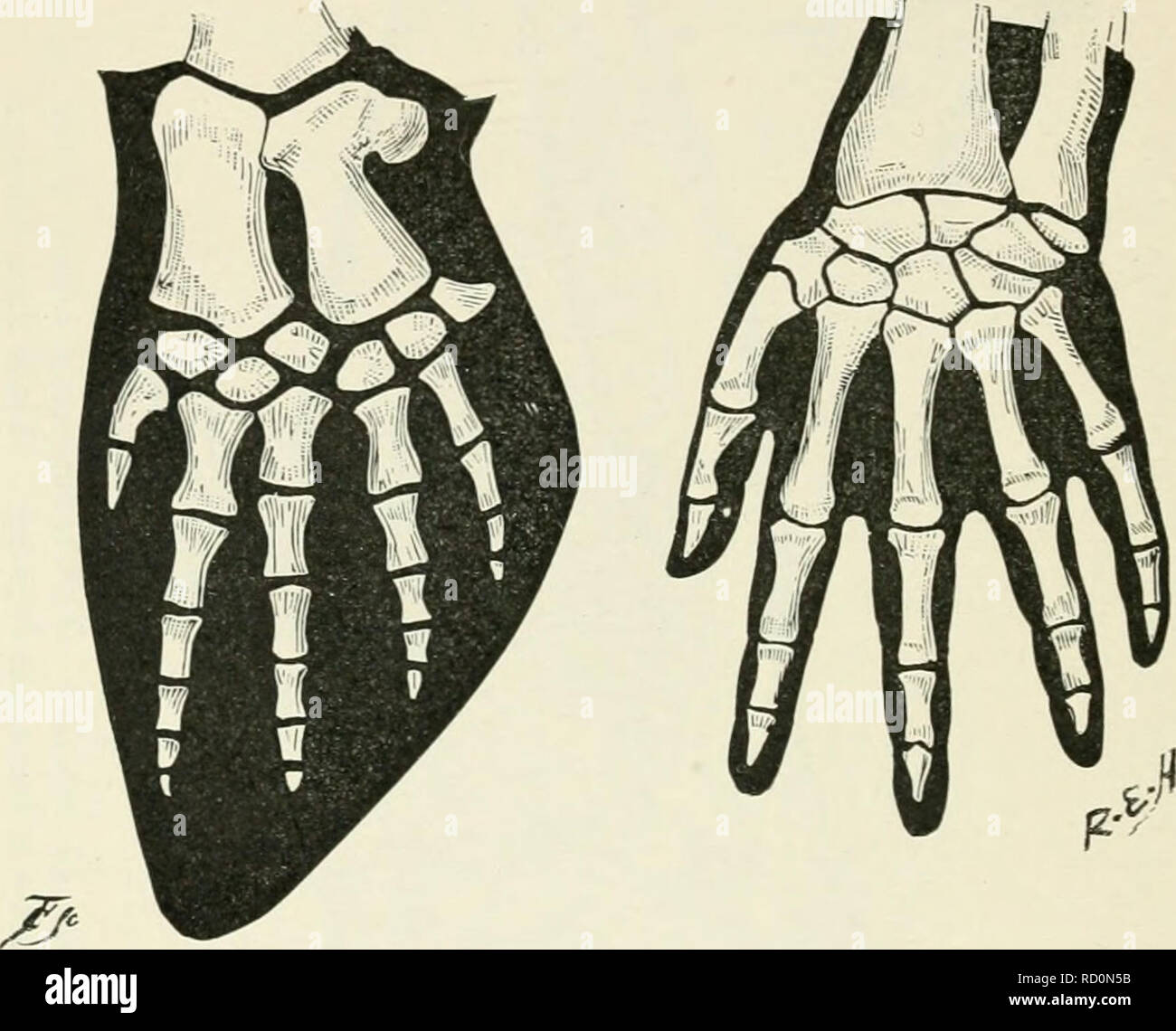 . Darwin, and after Darwin. An exposition of the Darwinian theory and a discussion of post-Darwinian questions. Evolution; Heredity. 54 Darwin^ and after Darwin. Now I have chosen the case of the whale and porpoise group, because they offer so extreme an example of profound modification of structure in adaptation to changed conditions of life. But the same thing may be seen in hundreds and hundreds of other cases. For instance, to confine our attention. flG. 4.—Paddle of Whale compared with Hand ..f Man. Drawn from nature { R. Coll. Surg. Mus.). to the arm, not only is the limb modified in the Stock Photohttps://www.alamy.com/image-license-details/?v=1https://www.alamy.com/darwin-and-after-darwin-an-exposition-of-the-darwinian-theory-and-a-discussion-of-post-darwinian-questions-evolution-heredity-54-darwin-and-after-darwin-now-i-have-chosen-the-case-of-the-whale-and-porpoise-group-because-they-offer-so-extreme-an-example-of-profound-modification-of-structure-in-adaptation-to-changed-conditions-of-life-but-the-same-thing-may-be-seen-in-hundreds-and-hundreds-of-other-cases-for-instance-to-confine-our-attention-flg-4paddle-of-whale-compared-with-hand-f-man-drawn-from-nature-r-coll-surg-mus-to-the-arm-not-only-is-the-limb-modified-in-the-image231741927.html
. Darwin, and after Darwin. An exposition of the Darwinian theory and a discussion of post-Darwinian questions. Evolution; Heredity. 54 Darwin^ and after Darwin. Now I have chosen the case of the whale and porpoise group, because they offer so extreme an example of profound modification of structure in adaptation to changed conditions of life. But the same thing may be seen in hundreds and hundreds of other cases. For instance, to confine our attention. flG. 4.—Paddle of Whale compared with Hand ..f Man. Drawn from nature { R. Coll. Surg. Mus.). to the arm, not only is the limb modified in the Stock Photohttps://www.alamy.com/image-license-details/?v=1https://www.alamy.com/darwin-and-after-darwin-an-exposition-of-the-darwinian-theory-and-a-discussion-of-post-darwinian-questions-evolution-heredity-54-darwin-and-after-darwin-now-i-have-chosen-the-case-of-the-whale-and-porpoise-group-because-they-offer-so-extreme-an-example-of-profound-modification-of-structure-in-adaptation-to-changed-conditions-of-life-but-the-same-thing-may-be-seen-in-hundreds-and-hundreds-of-other-cases-for-instance-to-confine-our-attention-flg-4paddle-of-whale-compared-with-hand-f-man-drawn-from-nature-r-coll-surg-mus-to-the-arm-not-only-is-the-limb-modified-in-the-image231741927.htmlRMRD0N5B–. Darwin, and after Darwin. An exposition of the Darwinian theory and a discussion of post-Darwinian questions. Evolution; Heredity. 54 Darwin^ and after Darwin. Now I have chosen the case of the whale and porpoise group, because they offer so extreme an example of profound modification of structure in adaptation to changed conditions of life. But the same thing may be seen in hundreds and hundreds of other cases. For instance, to confine our attention. flG. 4.—Paddle of Whale compared with Hand ..f Man. Drawn from nature { R. Coll. Surg. Mus.). to the arm, not only is the limb modified in the
 . Discovery reports. Discovery (Ship); Scientific expeditions; Ocean; Antarctica; Falkland Islands. DESCRIPTION OF SPECIES 311 Strong modified spines (Fig. 12 b) as well as two or three more delicate ones. The third appendage of the male (Fig. 11 c) is considerably longer and more delicate than the second, with the propodus broad and bearing on its inner margin a double row of eleven spines of the type usually found on this limb. The last thoracic appendage is smaller than the others and is not modified in the male. The protopodite of the first three pairs of pleopods is long, without a produc Stock Photohttps://www.alamy.com/image-license-details/?v=1https://www.alamy.com/discovery-reports-discovery-ship-scientific-expeditions-ocean-antarctica-falkland-islands-description-of-species-311-strong-modified-spines-fig-12-b-as-well-as-two-or-three-more-delicate-ones-the-third-appendage-of-the-male-fig-11-c-is-considerably-longer-and-more-delicate-than-the-second-with-the-propodus-broad-and-bearing-on-its-inner-margin-a-double-row-of-eleven-spines-of-the-type-usually-found-on-this-limb-the-last-thoracic-appendage-is-smaller-than-the-others-and-is-not-modified-in-the-male-the-protopodite-of-the-first-three-pairs-of-pleopods-is-long-without-a-produc-image231418054.html
. Discovery reports. Discovery (Ship); Scientific expeditions; Ocean; Antarctica; Falkland Islands. DESCRIPTION OF SPECIES 311 Strong modified spines (Fig. 12 b) as well as two or three more delicate ones. The third appendage of the male (Fig. 11 c) is considerably longer and more delicate than the second, with the propodus broad and bearing on its inner margin a double row of eleven spines of the type usually found on this limb. The last thoracic appendage is smaller than the others and is not modified in the male. The protopodite of the first three pairs of pleopods is long, without a produc Stock Photohttps://www.alamy.com/image-license-details/?v=1https://www.alamy.com/discovery-reports-discovery-ship-scientific-expeditions-ocean-antarctica-falkland-islands-description-of-species-311-strong-modified-spines-fig-12-b-as-well-as-two-or-three-more-delicate-ones-the-third-appendage-of-the-male-fig-11-c-is-considerably-longer-and-more-delicate-than-the-second-with-the-propodus-broad-and-bearing-on-its-inner-margin-a-double-row-of-eleven-spines-of-the-type-usually-found-on-this-limb-the-last-thoracic-appendage-is-smaller-than-the-others-and-is-not-modified-in-the-male-the-protopodite-of-the-first-three-pairs-of-pleopods-is-long-without-a-produc-image231418054.htmlRMRCE02E–. Discovery reports. Discovery (Ship); Scientific expeditions; Ocean; Antarctica; Falkland Islands. DESCRIPTION OF SPECIES 311 Strong modified spines (Fig. 12 b) as well as two or three more delicate ones. The third appendage of the male (Fig. 11 c) is considerably longer and more delicate than the second, with the propodus broad and bearing on its inner margin a double row of eleven spines of the type usually found on this limb. The last thoracic appendage is smaller than the others and is not modified in the male. The protopodite of the first three pairs of pleopods is long, without a produc